Eiffel Tower Profile and Visitors' Guide
How to Avoid Crowds, Enjoy the Views, & Other Practical Tips
:max_bytes(150000):strip_icc():format(webp)/profilepic-CTraub-5b6ff65d46e0fb00505577c1.jpg)
TripSavvy / Taylor McIntyre
The Eiffel Tower is by far Paris' most recognized icon. Built for the World Exposition of 1889, the tower is a relative newcomer to a city whose history stretches back to over a millennia.
Wildly unpopular when it was unveiled and nearly torn down, the tower was finally embraced as the symbol of a modern and elegant Paris. It remains one of Paris' must-see attractions and has drawn over 200 million visitors.
Detractors will call it cliche, but few can peel their eyes away when the tower bursts into a shower of scintillating light every hour each evening. What would la ville lumière be without it?

Location and Contact Info:
- Located: On the Champ de Mars in the 7th arrondissement (midwest Paris)
- Metro: Bir Hakeim or Trocadero (Line 6), Ecole Militaire (Line 8)
- RER: Champs de Mars-Tour Eiffel (Line C)
- Buses: 42, 69, 72, 82, 87
- Taxi station: Quai Branly, Pilier West
- Phone: 33 (0) 1 44 11 23 23
- Visit the official website
TripSavvy / Taylor McIntyre
Nearby sights and attractions:
- Hôtel des Invalides and Napoleon's tomb
- Musée de l'Armée (Army Museum)
- Rodin Museum
- Ecole Militaire
- The Champs-Elysées and the Arc de Triomphe
Opening Hours
January 1st to June 14:
- Tower: 9:30 a.m. to 11:00 p.m.
- Elevator: 9:30 a.m. to 11:45 p.m. (Final ascension 11:00 p.m./10:30 p.m. top floor)
- Stairs: 9:30 a.m. to 6:30 p.m. (Final admission at 6:00 p.m.)
June 15th to September 1st:
- Tower: 9:00 a.m. to midnight
- Elevator: 9:00 a.m. to 12:45 a.m. (Final ascension at midnight/11:00 p.m. top floor)
- Stairs: 9:00 a.m. to 12:30 a.m. (Final admission at midnight)
September 2nd to December 31st:
- Stairs: 9:30 a.m. to 6:30 p.m. (Final admission 6:00 p.m.)
Admission fees vary depending on how many levels you wish to visit and whether you plan to take the elevator or the stairs. Taking the stairs is always less expensive, but it can be excruciating-- and access to the top of the tower is not available via stairs.
For complete information on current fees and discounts, visit this page .
Brochures and detailed visitors' info is available at the information booth on the ground floor.
Access to the top of the tower may be suspended due to weather conditions or security measures.
Tower Tours, Packages and Deals:
There are several guided tour options for a behind-the scenes, detailed look at the tower and the history of its conception and construction. Always reserve ahead. (Find more information here)
Access for Visitors with Limited Mobility:
Visitors with limited mobility or in wheelchairs may access levels one and two of the tower via the elevator. For security reasons, access to the top of the tower is not available for visitors in wheelchairs.
For more information on accessibility issues, see this page .
When Are the Best Times to Visit?
The Eiffel Tower is Paris' single most-visited attraction, drawing millions of people every year. It's easy to understand why it's preferable to visit when crowds are likely to be a bit thinner than usual. Here's what I especially recommend:
- Low season in Paris is October to March. If you can visit during these times, you'll be more likely to avoid long lines and overcrowded observation areas. However, visiting the tower during the cold and wet months of November-February is less likely to be a pleasant experience, especially when overcast skies obstruct magnificent views of the city.
- Visiting during weekdays rather than weekends and in the early morning or late evening is also a good idea.
Best Ways to Climb the Tower?
- By stairs: You can access the first and second levels of the tower (187 and 377 ft., respectively) by climbing 1,652 stairs. There is a small admission fee. Visitors with vertigo should abstain.
- By elevator: Three elevators are available to shuttle you to the first and second levels of the tower. For security reasons, only one or two will be operating on a given day. An additional elevator must be taken from the second level to get to the top of the tower (another 905 ft.). Keep in mind that during peak tourist season (April-September), you may need to wait for a while.
See the Tower In Pictures: (For a Bit of Inspiration)
For a great retrospective of the famed tower in its many guises starting from 1889 to the present day, check out our colorful gallery: The Eiffel Tower in Pictures .
Restaurants and Gift Shops:
- The Eiffel Tower has two restaurants : one on the first level and one on the second. The second-level restaurant, Le Jules Vernes , is remarkable for its breathtaking views of the city and for its kitchen, which is lead by celebrated French chef Alain Ducasse. In addition, snack bars can be found on the ground floor, first, and second levels. There's also a champagne bar and a buffet.
- Souvenirs and gifts are available on the ground floor, first and second levels. The second level also includes a specialty food shop where you can purchase traditional French food items.
Interesting Historical Facts and Current-Day Highlights
Take a look at our Eiffel Tower facts and highlights guide to learn more about the tower's history and make sure to get the most out of your visit to the landmark. You'll be more likely to take away something personal if you beef up a bit on the monument's history and legacy.
Read traveler reviews and book tickets or tours direct (via TripAdvisor)
Getting Around Paris: Guide to Public Transportation
The Arc de Triomphe in Paris: A Complete Guide
Guide to the Tour Montparnasse in Paris: For Gorgeous Panoramic Scenes
The Champ de Mars in Paris: The Complete Guide
Eiffel Tower Facts and Highlights For Visitors
Les Invalides in Paris: The Complete Guide
One Week in Delhi: The Perfect Itinerary
The Top 12 Things to Do Around the Eiffel Tower
The Louvre Museum in Paris: A Complete Guide for Visitors
All About the Jardin des Tuileries in Paris
Top 15 Monuments and Historic Sites in Paris
Paris' Jardins du Trocadero: The Complete Guide
The Palais de Chaillot: The Complete Guide
Chateau de Vincennes: The Complete Guide
All About the Yves Saint Laurent Museum in Paris
The Best Markets in Paris (For Every Type of Traveler)

After a spectacular ascent in glass-walled lifts, you’re finally here. 276m up with only the antennae above you, Paris lies at your feet. The noise of the boulevards can’t reach you here, but the wind catches you and your heart begins to race.
Witness to thousands of promises of undying love, the Eiffel Tower stirs your emotions.
With two floors (one open-air and another indoor), you can take a stroll and enjoy the views by day or night.
At the champagne bar, enjoy an unforgettable flute of champagne or fruit drink.
Attractions at the top

Gustave Eiffel’s office
Historical reconstitution
At the top of the Tower explore Gustave Eiffel’s office which has been restored to its original condition.
With its very life like wax models, the scene depicts the Tower’s creator and his daughter Claire welcoming the famous American inventor, Thomas Edison. Among other things you can also see the gramophone which he presents to Gustave Eiffel as a gift.

Find yourself
The panoramic maps
Using the panoramic maps which can be found at various points at the top of the Tower, you can locate your position and get an idea of the directions and distances to major world cities!
The silhouettes of the emblematic monuments of those cities are presented. For each monument the geographic location (country flag, name of the city) and the height of the building are mentioned.
A thin reference line indicates the height of the Eiffel Tower, for an easy comparison.

A model of the top floor
The 1889 summit
The top floor also features a model of the top of the Tower from 1889, at a 1:50 scale. Painted in the Tower’s original “red-brown” colour, it’s a great way of seeing how the floor was originally planned.
Restaurants & stores

The champagne bar
Enjoy a uniquely special moment at the champagne bar located at the top of the Eiffel Tower.
Nestling into the very structure of the Tower, the bar offers you a choice of a glass of either rosé or white champagne, served as chilled as you like. What an elegant way to toast a sensational experience at the top of the Tower !
The bar is open daily from 11am to 10.30 pm in low season, from 11am to midnight in high season (July and August).
Continue tour

Second floor Amazement

- Prices & Times
- Haut de page
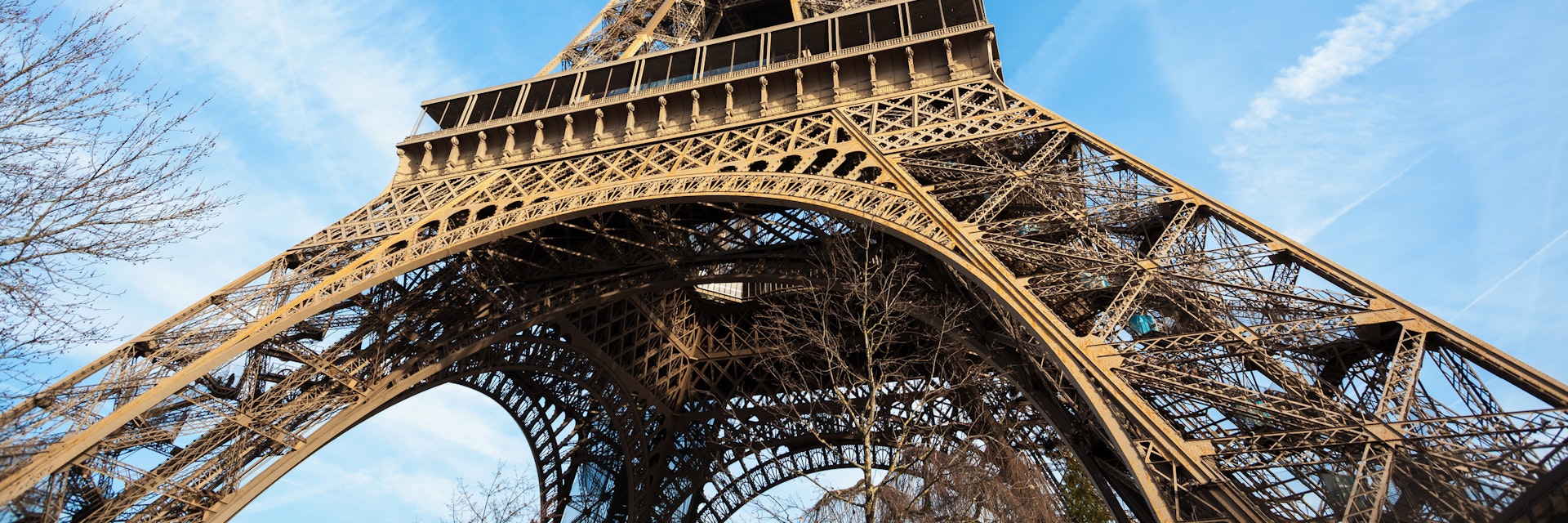
©k_samurkas/Shutterstock
Eiffel Tower
Top choice in Paris
Lonely Planet's Ultimate Guide
Explore insider tips, fascinating history and surprising secrets to make the most of your experience.
There are different ways to experience the Eiffel Tower, from a daytime trip or an evening ascent amid twinkling lights, to a meal in one of its restaurants. And even though some seven million people come annually, few would dispute that each visit is unique – and something that simply has to be done when in Paris.
Named after its designer, Gustave Eiffel, the Tour Eiffel was built for the 1889 Exposition Universelle (World's Fair). It took 300 workers, 2.5 million rivets and two years of nonstop labor to assemble. Upon completion, the tower became the tallest human-made structure in the world (324m) – a record held until the 1930 completion of New York's Chrysler Building. A symbol of the modern age, it faced opposition from Paris’ artistic and literary elite, and the ‘metal asparagus’, as some snidely called it, was originally slated to be torn down in 1909. It was spared only because it proved an ideal platform for the transmitting antennas needed for the newfangled science of radiotelegraphy.
Sporting six different colors throughout its lifetime, the tower has been painted red and bronze since 1968. Work is underway to strip the previous 19 coats and apply the yellow-brown shade originally conceived by Gustave Eiffel, giving it a new golden hue in time for the 2024 Olympics.

First floor: cafe and souvenir shop
Of the tower's three floors, the 1st (57m) has the most space but least impressive views. The glass-enclosed Pavillon Ferrié houses an immersion film along with a small cafe and souvenir shop, while the outer walkway features a discovery circuit to help visitors learn more about the tower’s ingenious design. Check out the sections of glass flooring that provide a dizzying view of the ant-like people walking on the ground far below. This level also hosts the restaurant 58 Tour Eiffel . The 1st floor's commercial areas are powered by two sleek wind turbines within the tower.
Second floor: Le Jules Verne restaurant
Views from the 2nd floor (115m) are the best – impressively high but still close enough to see the city below. Telescopes and panoramic maps pinpoint locations in Paris and beyond. Story windows give an overview of the lifts’ mechanics, and the vision well allows you to gaze through glass panels to the ground. Also up here are toilets, a souvenir shop, a macaron bar, and Michelin-starred restaurant Le Jules Verne .
Top floor: Champagne bar and 'secret apartment'
Views from the wind-buffeted top floor (276m) stretch up to 60km on a clear day, though at this height the panoramas are more sweeping than detailed. Celebrate your ascent with a glass of bubbly (€13 to €22) from the Champagne bar (open 10.15am to 10.15pm). Afterwards peep into Gustave Eiffel’s restored top-level office, otherwise known as the 'secret apartment', where lifelike wax models of Eiffel and his daughter Claire greet Thomas Edison.

Tours, tickets and other practicalities
Visitors must pass through security at the bullet-proof glass barriers surrounding the tower's base. The two entrances to the glass enclosure are on avenue Gustave Eiffel; the two exits are on quai Branly.
Ascend as far as the 2nd floor (either on foot or by lift), from where there's a separate lift to the top floor (closed during heavy winds). Pushchairs must be folded in lifts and bags or backpacks larger than aeroplane-cabin size aren't allowed. Note that the top floor and stairs aren't accessible to people with limited mobility.
Pre-purchasing tickets online gives you an allocated time slot and means you only have to queue for security. Print your ticket or show it on your phone. If you can’t reserve your tickets ahead of time, expect lengthy waits for tickets in high season.

Stair tickets can't be reserved online. Buy them at the south pillar, where the staircase can also be accessed: the climb consists of 360 steps to the 1st floor and another 360 steps to the 2nd floor.
If you have reservations for either restaurant, you're granted direct post-security access to the lifts.
For the best view of the light show, head across the Seine to the Jardins du Trocadéro.
How to get there
The nearest Metro stop is Bir Hakeim, while the nearest train station is Champ de Mars–Tour Eiffel (RER C).
Champ de Mars, 5 av Anatole France, 7e
Get In Touch
08 92 70 12 39
https://www.toureiffel.paris
Lonely Planet's must-see attractions
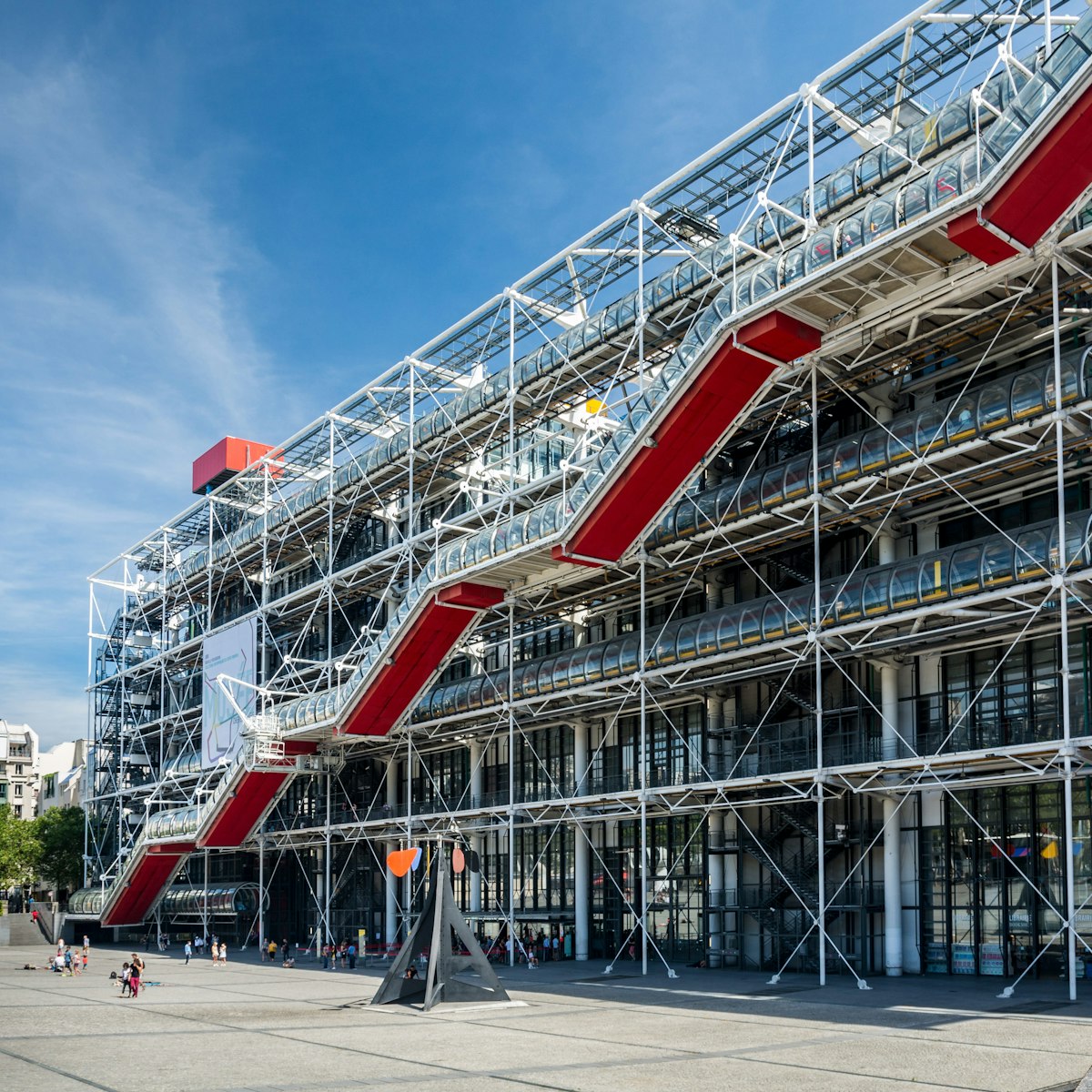
Centre Pompidou
Home to Europe's largest collection of modern and contemporary art, Centre Pompidou has amazed and delighted visitors ever since it opened in 1977, not…
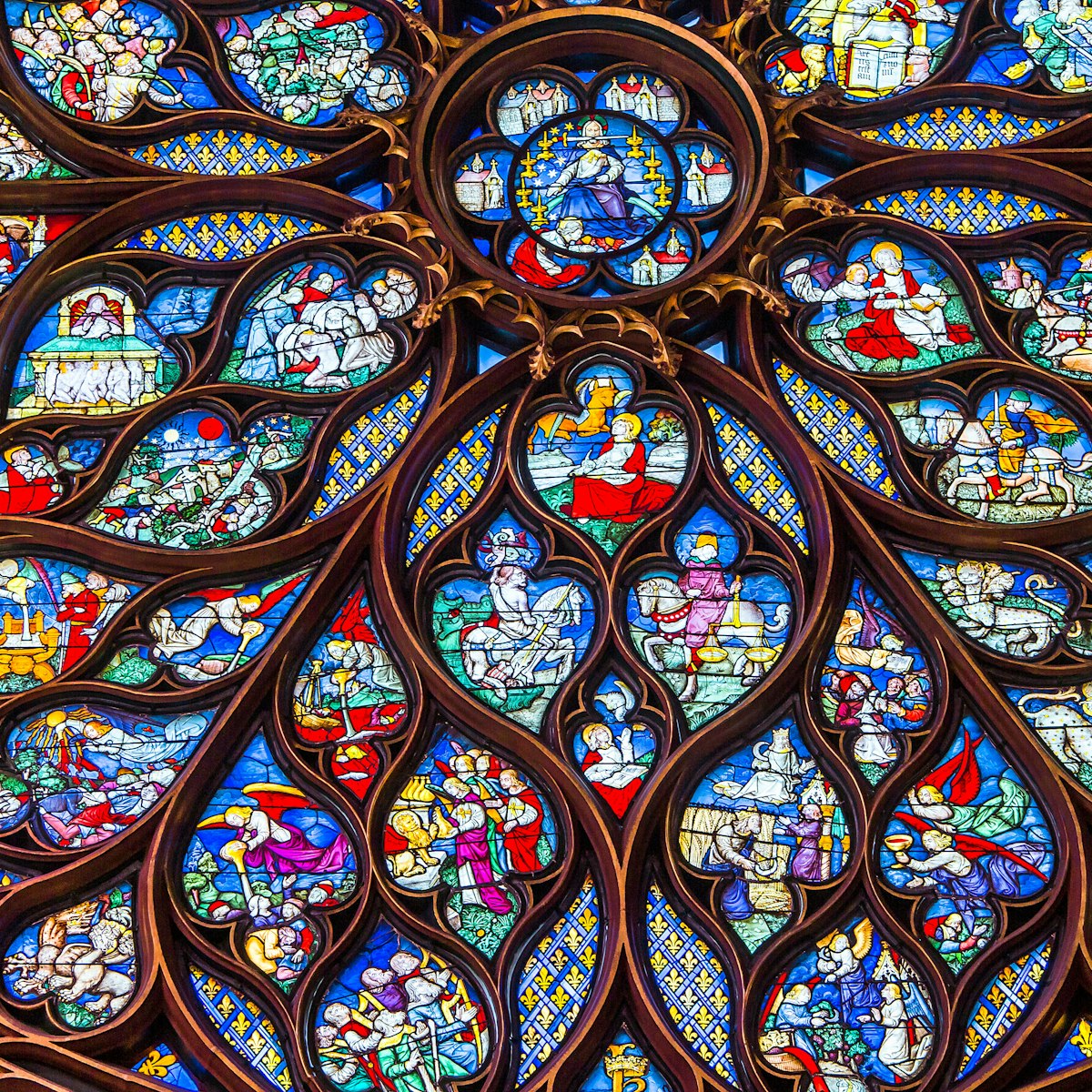
Sainte-Chapelle
Visit Sainte-Chapelle on a sunny day when Paris’ oldest, finest stained glass (1242–48) is at its dazzling best. The chapel is famous for its stained…
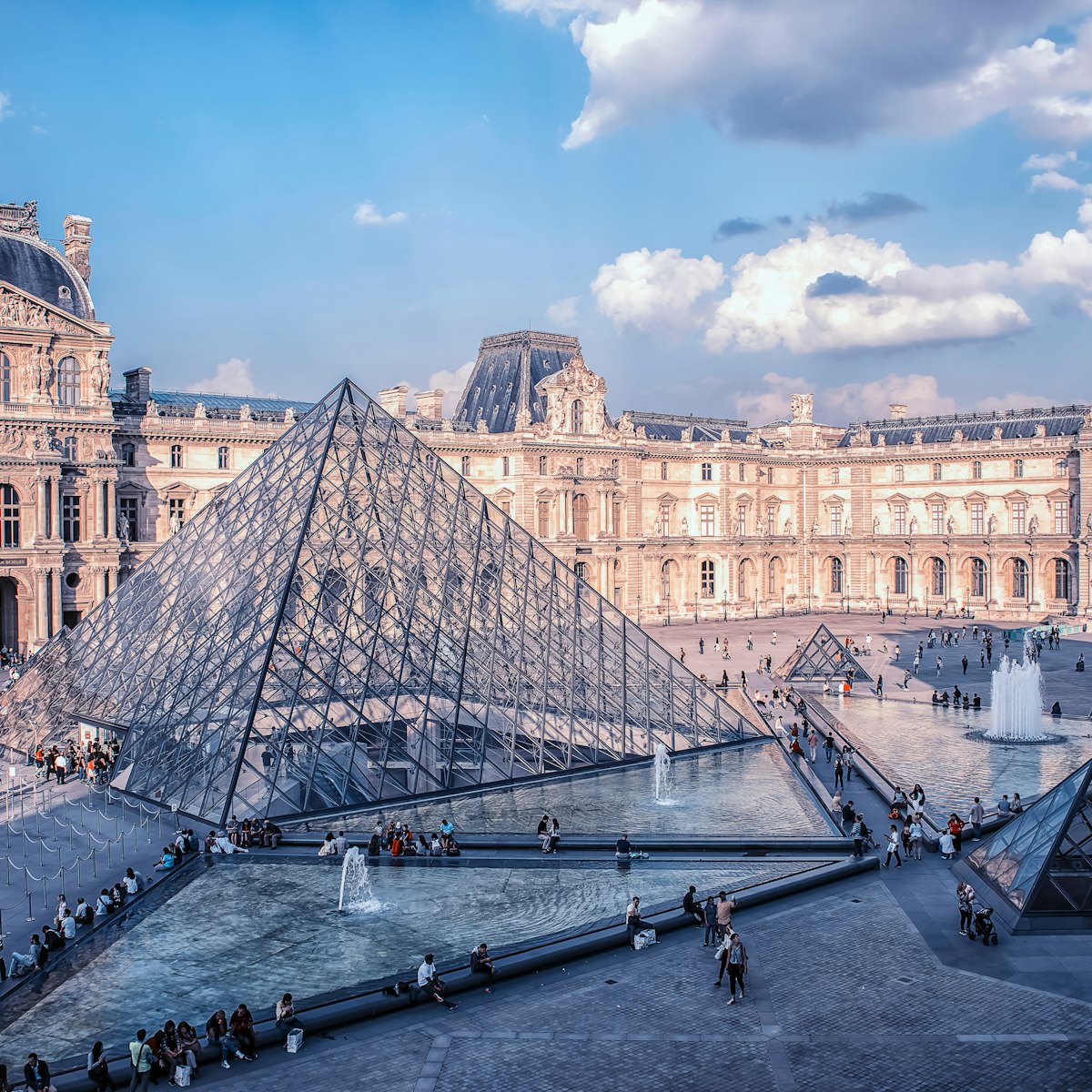
Musée du Louvre
It isn’t until you’re standing in the vast courtyard of the Louvre, with its glass pyramid and ornate façade, that you can truly say you’ve been to Paris.
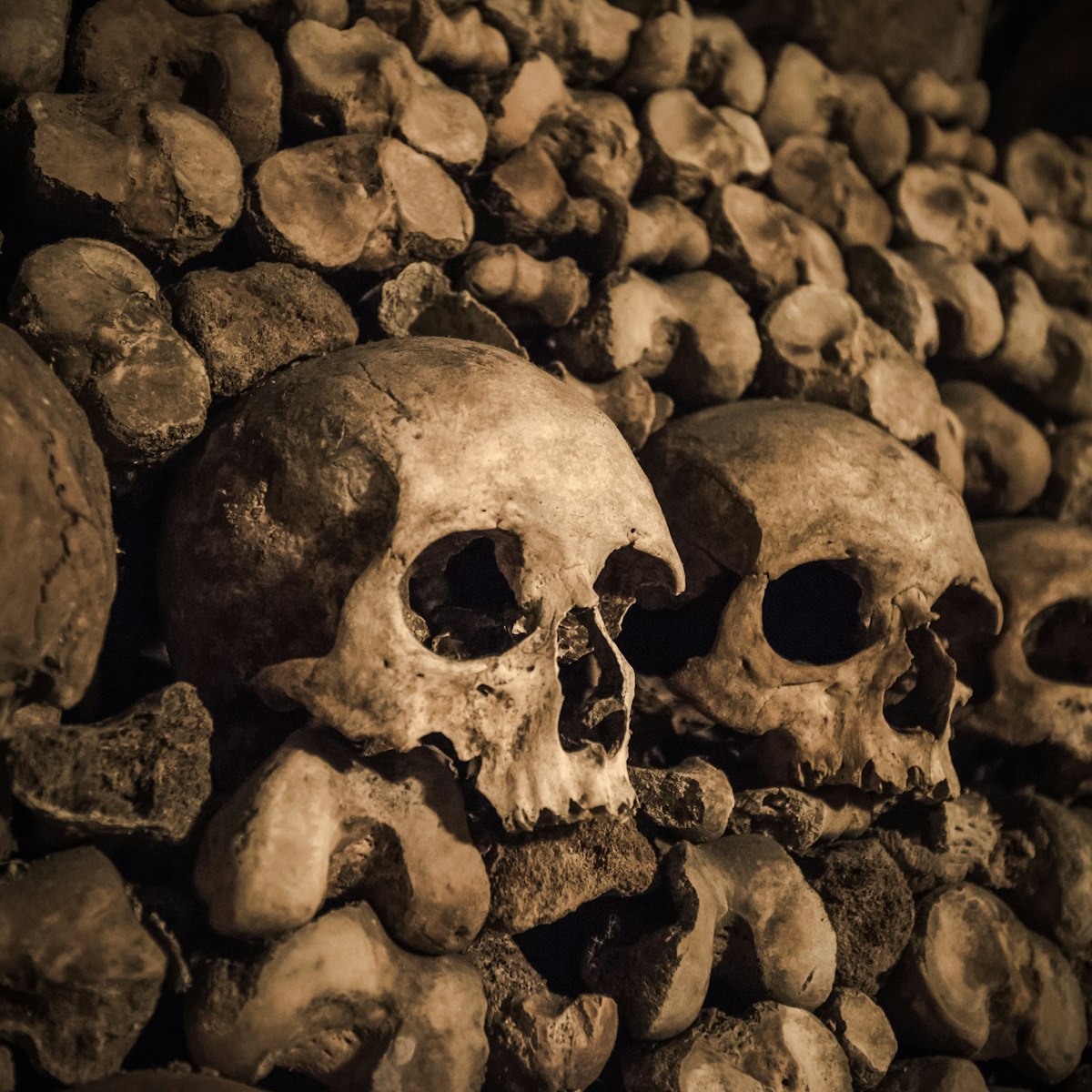
Les Catacombes
It’s gruesome, ghoulish and downright spooky, but it never fails to captivate visitors. In 1785, the subterranean tunnels of an abandoned quarry were…
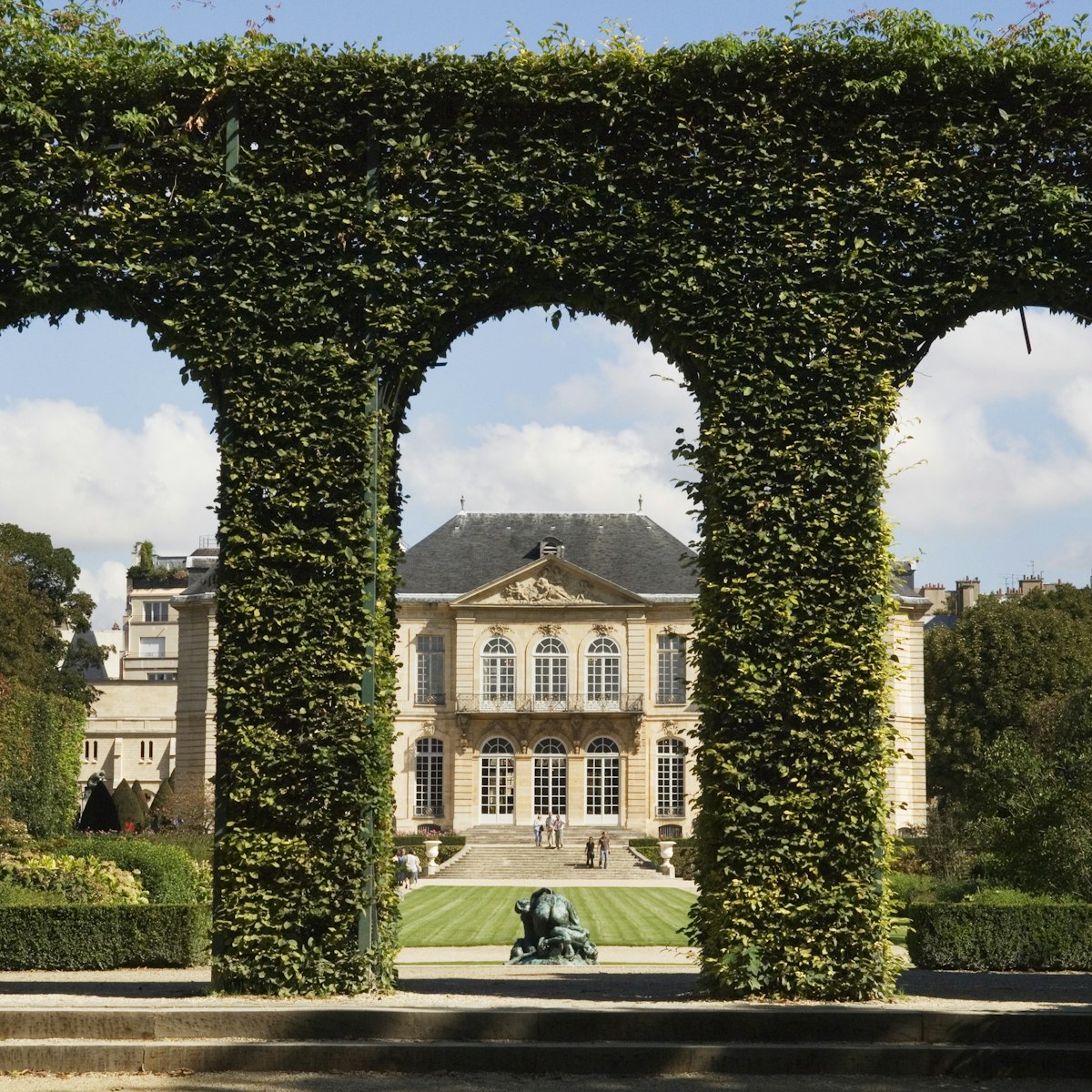
Musée Rodin
Even if you're not an art lover, it is worth visiting this high-profile art museum to lose yourself in its romantic gardens.
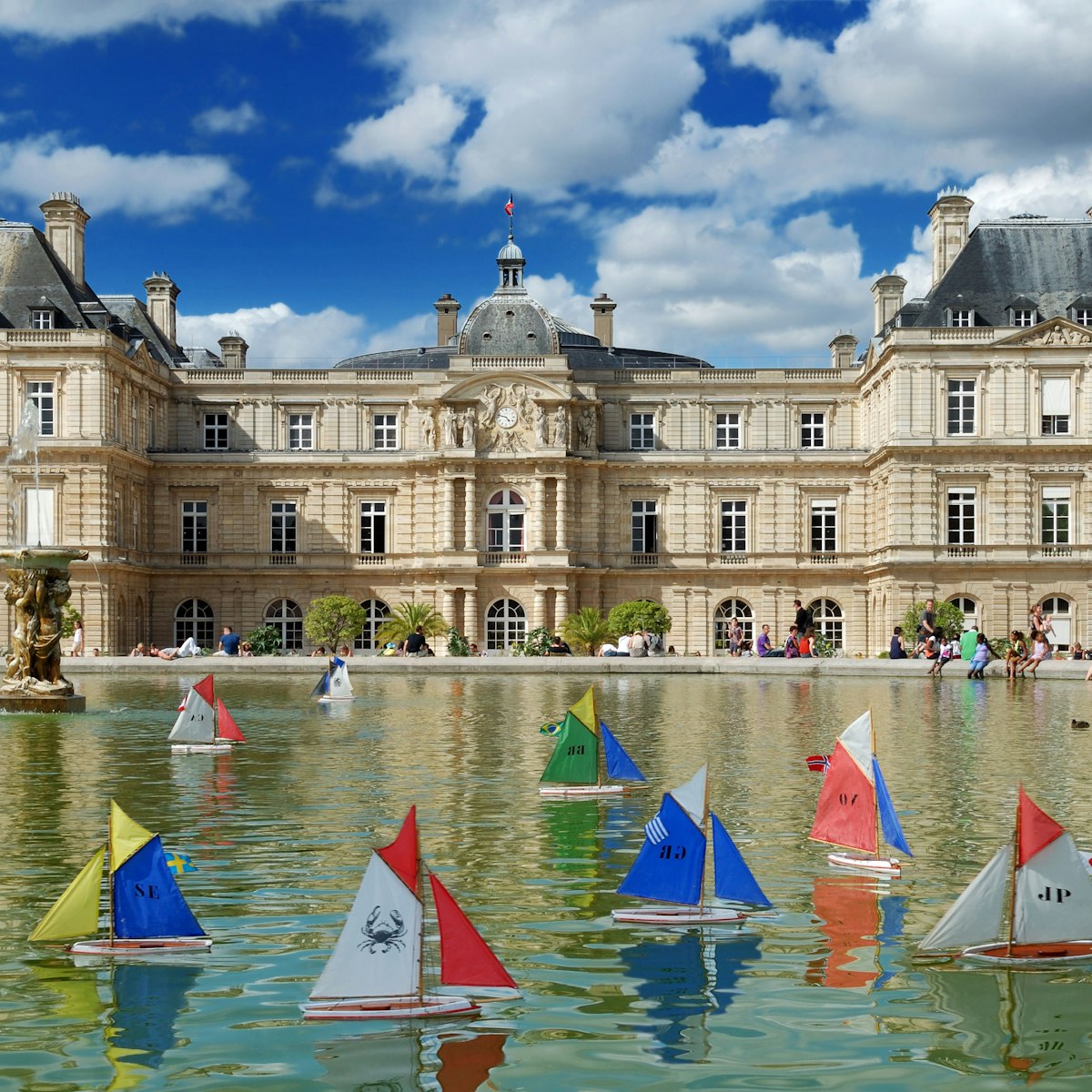
Jardin du Luxembourg
This famous inner-city oasis of formal terraces, chestnut groves and lush lawns has a special place in Parisians' hearts.
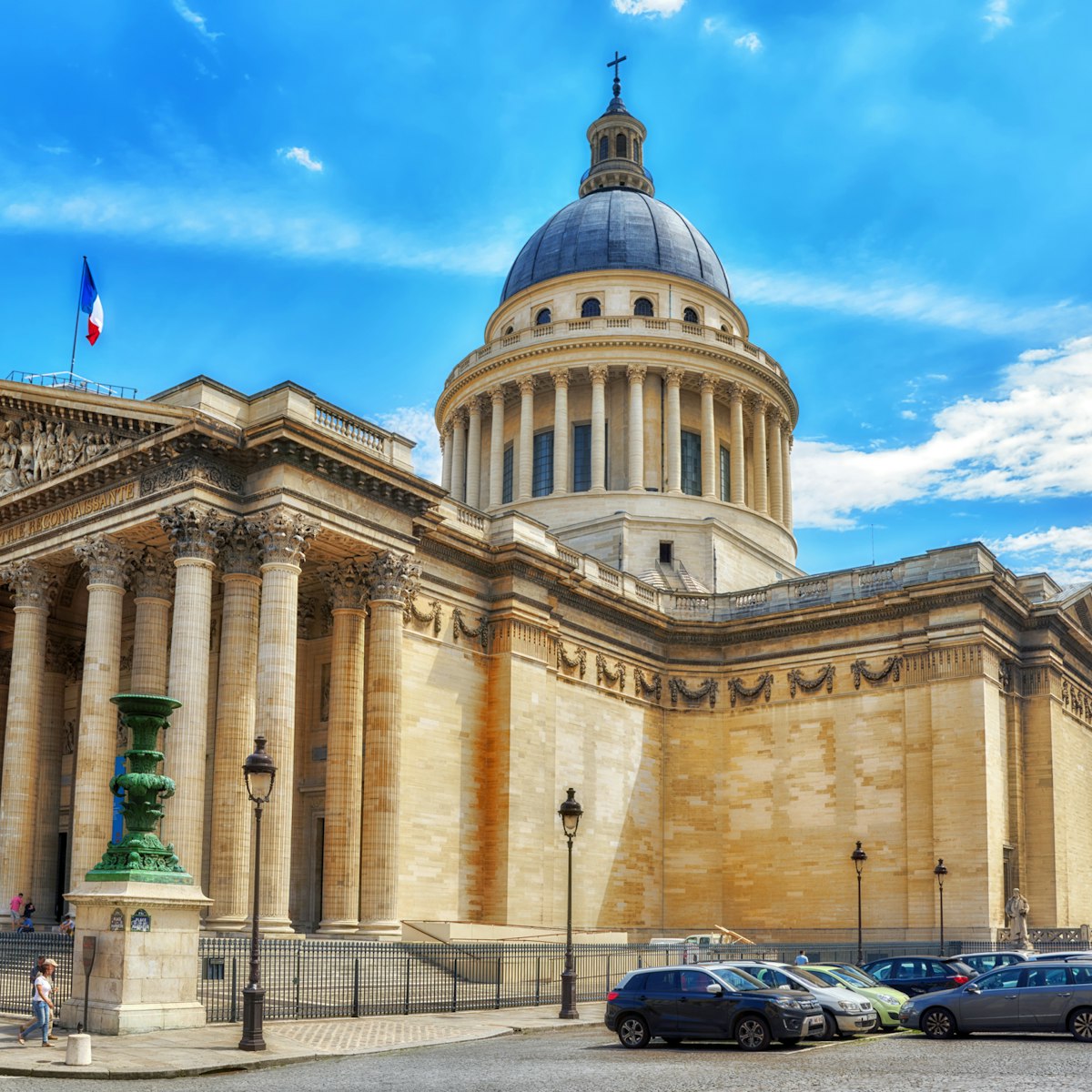
Elegant and regal in equal measure, the massive neoclassical dome of the Left Bank's iconic Panthéon is an icon of the Parisian skyline. Louis XV…
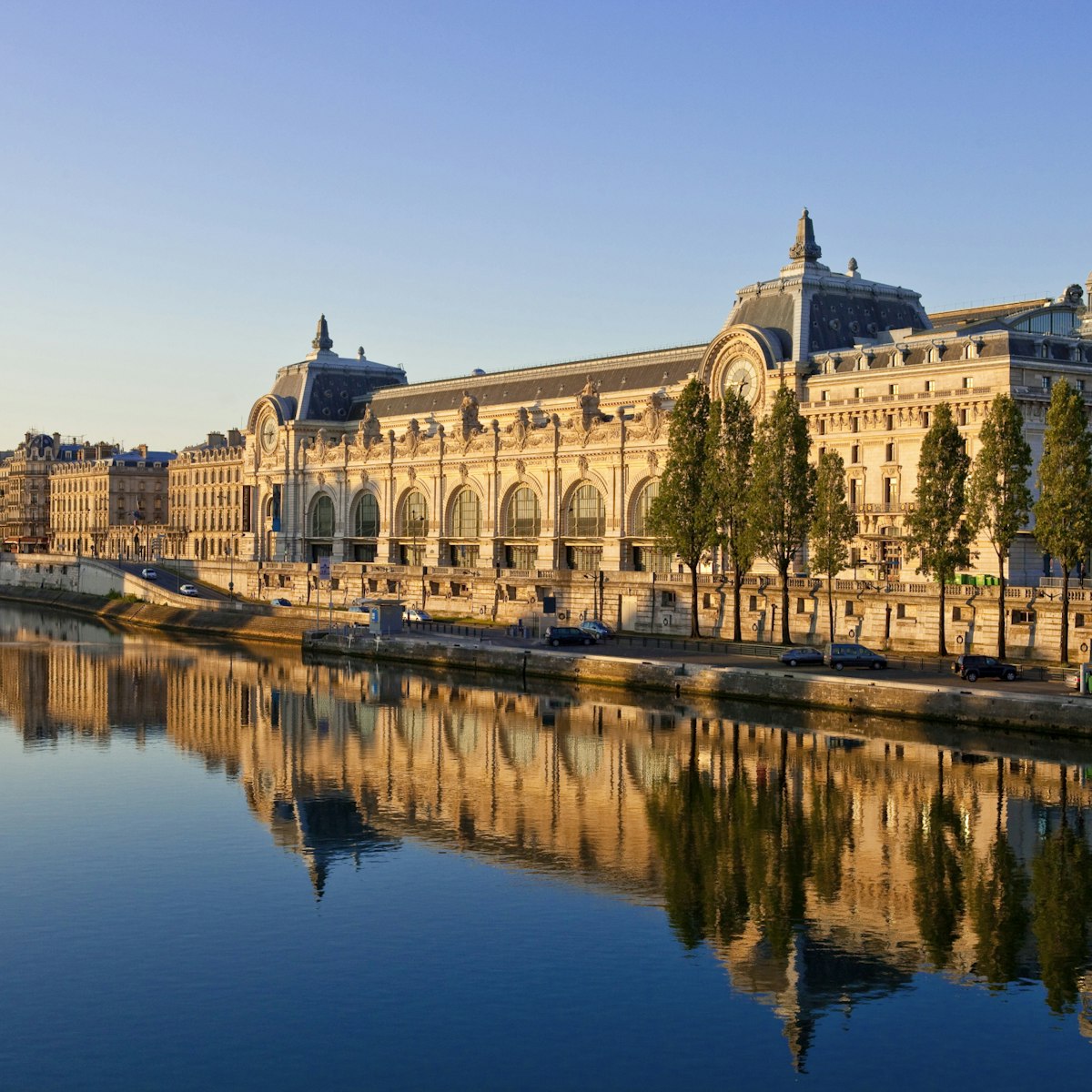
Musée d’Orsay
Musée d’Orsay may not be quite as famous as the Louvre—though it’s located a mere 10-minute walk away—but this Left Bank museum holds its own in its…
Nearby Paris attractions
1 . Musée du Quai Branly – Jacques Chirac
A tribute to the diversity of human culture, this museum's highly inspiring overview of indigenous and folk art spans four main sections – Oceania, Asia,…
2 . Immeuble Lavirotte
Let your eyes settle on the aesthetic minutiae of the fantastic art nouveau façade of this building, which is one of the most photogenic private edifices…
3 . Aquarium de Paris Cinéaqua
Paris’ aquarium, on the eastern side of the Jardins du Trocadéro, has a shark tank and 500-odd fish species to entertain families on rainy days. Three…
4 . Parc du Champ de Mars
Running southeast from the Eiffel Tower, the grassy Champ de Mars – an ideal summer picnic spot – was originally used as a parade ground for the cadets of…
5 . Palais de Chaillot
The two curved, colonnaded wings of this building (built for the 1937 International Expo) and central terrace afford an exceptional panorama of the…
6 . Cité de l’Architecture et du Patrimoine
This mammoth 23,000-sq-metre space is an ode on three floors to French architecture. The highlight is the light-filled ground floor with a beautiful…
7 . Cathédrale de la Sainte-Trinité de Paris
Shimmering gold onion domes top this striking Russian Orthodox cathedral by the Seine, which was designed by famed French architect Jean-Michel Wilmotte…
8 . Musée de l’Homme
Opened in 1882, this museum traces the evolution of humankind through artefacts gathered from around the world. Fascinating pieces on display include a…
- Skip to primary sidebar
- Skip to content
Paris Top Ten
Best of Paris
The Ultimate Travel Guide to the Eiffel Tower
The Eiffel Tower is one of the most iconic monuments in the world – if not the most iconic. It stands tall over Paris, France, and is a symbol of French culture and history.
It is also one of the most visited tourist attractions in the world, drawing roughly seven million visitors every year from all over the globe! But have you ever wondered exactly where it is located? Let’s explore its location and learn more about its history .
Table of Contents
Why was the Eiffel Tower built?
Not just any old iron, what is it used for today, location: where is the eiffel tower, eiffel tower tickets: an overview, interesting facts about the eiffel tower, attractions near the eiffel tower in paris, arc de triomphe, trocadéro gardens, avenue des champs-élysées, paris museum of modern art, national marine museum, les invalides, final thoughts, did the french build the eiffel tower, what do the french call the eiffel tower, why is the eiffel tower so famous.
The Eiffel Tower was designed by architect Gustave Eiffel as a temporary structure to commemorate the centennial celebration of the French Revolution. The tower was built between 1887 and 1889, with construction completed on March 31st, 1889.
In just two years, this landmark was erected at a total cost of 7.8 million francs (the equivalent of $2 billion today).

The Eiffel Tower was built in 1889 for the International Exposition, which was a “World’s Fair” type event held in Paris that year to celebrate the 100th anniversary of the French Revolution. The intention was to create a monument that would be a symbol of progress in engineering and architecture, while also bringing people from around the world together in celebration.
Gustave Eiffel and his team designed and constructed what is now known as one of the most iconic structures ever created — an iron lattice tower that stands more than 300 meters tall (the equivalent of 984 feet). To build it, they used more than 18,000 pieces of wrought iron beams connected with 2.5 million rivets! It took them two years to complete the project, with construction concluding just before the Expo opened its doors on May 6th, 1889.
See Related : Things To in Paris on Bastille Day: A Comprehensive Guide
At first glance, it may seem like an odd decision to build such a massive, intricate, decorative structure out of iron — but there were some compelling reasons for doing so. One was that iron allowed for greater structural stability than other materials available at the time; another was that because it wasn’t as heavy as stone or concrete, it allowed for taller buildings without putting too much strain on their foundations.
Next, since wrought iron had been used successfully for bridges throughout Europe for centuries prior to this project, Gustave Eiffel felt confident that he could pull off such a monumental task using this material— and he did!
Lastly, it was also a savvy marketing decision. Eagerness to prove the ease of construction and durability of his wrought iron lattice to promote his construction business were perhaps the largest inspiration for this mighty metal marvel.
But beyond practical considerations, there were also cultural implications to consider when designing and constructing such an iconic structure — namely how would it be received by people around the world? The answer to this question came when thousands of visitors flocked to see it during its opening ceremony; not only did they marvel at its sheer size but they also admired its intricate design features (like its four crisscrossing arches). The tower was a hit, and its place was cemented in French history and culture.
See Related: Top Paris Restaurants with a View of the Eiffel Tower
These days, millions of tourists flock to see the Eiffel Tower each year — making it one of Paris’s top attractions. But aside from being a tourist destination, it is also home to some unique events throughout the year. For example every New Year’s Eve there is a spectacular fireworks display from atop its summit; every summer there are free concerts held in its shadow, and during major sporting events (such as UEFA Euro 2016) fans gather here wearing their team colors and proudly waving flags!
Beyond these special occasions though, everyday visitors still come here just to take photos or simply admire its beauty—and who can blame them? After all these years, we still find ourselves captivated by what once seemed like an impossible feat: building an immense, intricate structure out of wrought iron!
The Eiffel Tower continues to be an incredible symbol of progress in engineering and architecture—not just in France but worldwide too! Its construction more than 130 years ago marked a turning point in our capability to build large structures out of something other than stone or concrete — showing us all just how far modern technology can take us if given enough time and effort.
See Related: When is the Best Time to Visit Paris?
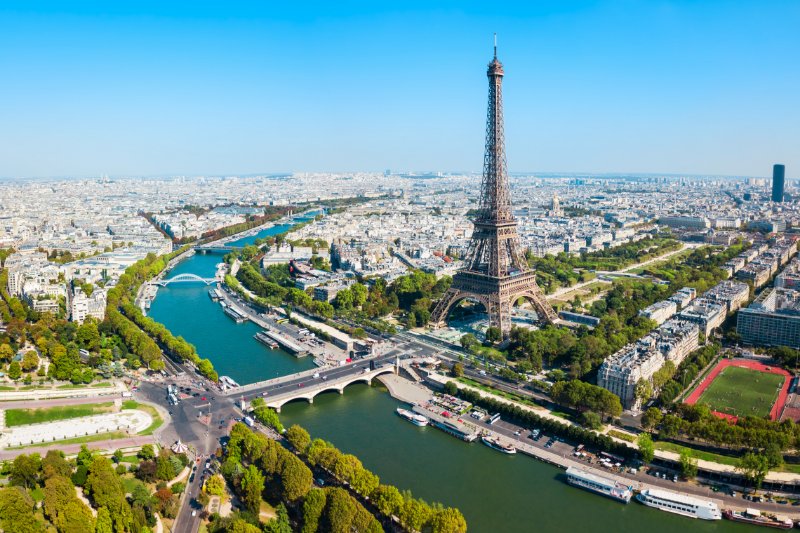
The Eiffel Tower is located in Paris , France. To be exact, it stands on Champ de Mars (Field of Mars) which is an area that spans from Trocadéro to Quai Branly in the 7th arrondissement of Paris. It’s situated near the banks of the River Seine between Trocadéro Gardens and Quai Branly Museum .
When you visit the Eiffel Tower, you will find three levels to explore: The first floor features an observation deck at 157 meters (515 feet) high with sweeping views over Paris; the second level features another observation deck at 276 meters (906 feet) high, and finally, there is a panoramic Champagne bar on top at 324 meters (1,063 feet).
See Related : Best Boat Tours in Paris, France
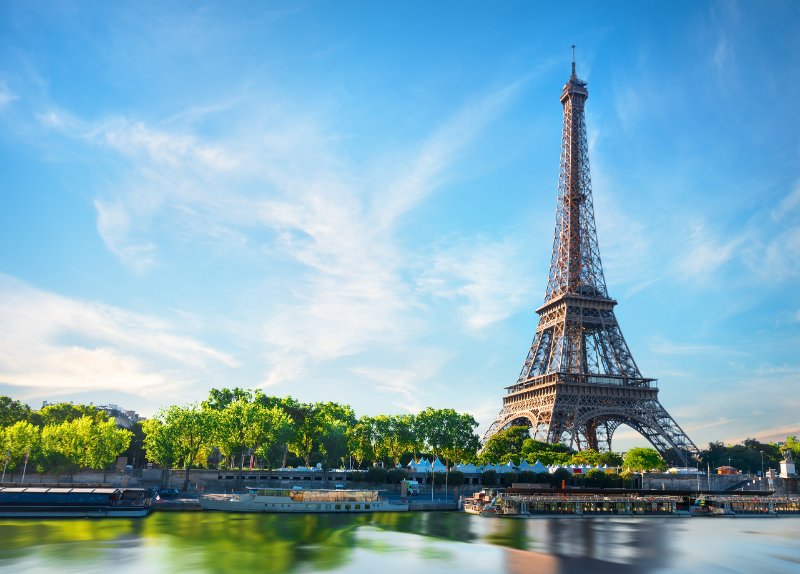
If you’re looking to visit the Eiffel Tower in Paris, there are a few things you need to know. First, tickets are required and can be purchased online or at the tower itself.
Second, there are several different Eiffel Tower ticket options, so be sure to choose the one that best suits your needs. Finally, the tower is open year-round, but hours of operation vary depending on the season.
Be prepared for long lines. The Eiffel Tower is one of the most popular tourist destinations in Paris, and there can often be long waits to get into the tower. So make sure to arrive early and pack plenty of patience!
See Related : Best Free Walking Tours in Paris, France
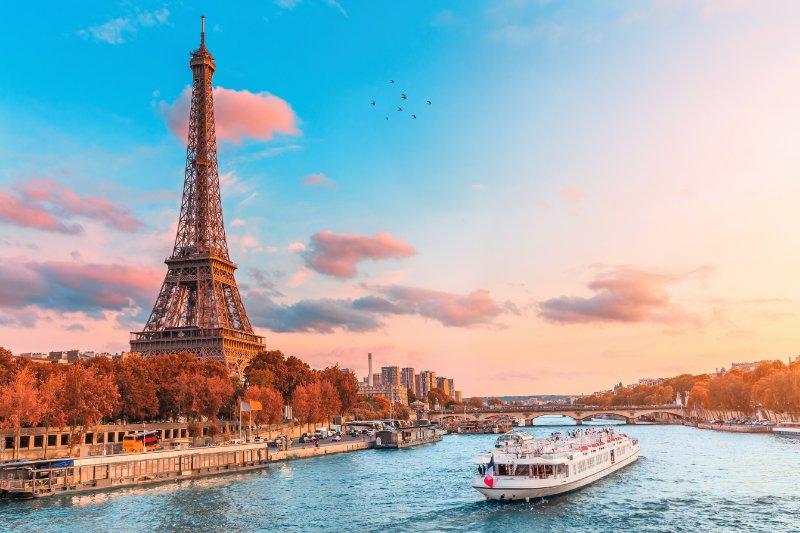
There are several interesting facts about this famous monument that many people may not know:
- The Eiffel Tower was originally only meant to be up for 20 years but proved so popular that it became permanent after World War I ended in 1919.
- The height of the tower changes depending on weather conditions since metal expands when hot and contracts when cold—it can grow as much as 15 cm!
- Since its inauguration more than 125 years ago, more than 300 million people have visited this iconic landmark making it one of Europe’s most popular tourist attractions!
- During summer months when light pollution is low, you can see up to 40 kilometers away from atop the Eiffel Tower due to its height!
- At night time, 20,000 bulbs light up creating a stunning view for tourists and locals alike – what’s not to love?!
- While it’s okay to snap personal pics of the Iron Lady, it’s illegal to photograph the Eiffel Tower at night for commercial use! The reason is that the lights displayed on the tower at night are copyrighted by the artist who installed them in 1985, Pierre Bideau.
See Related: Most Famous Historical Landmarks in Paris
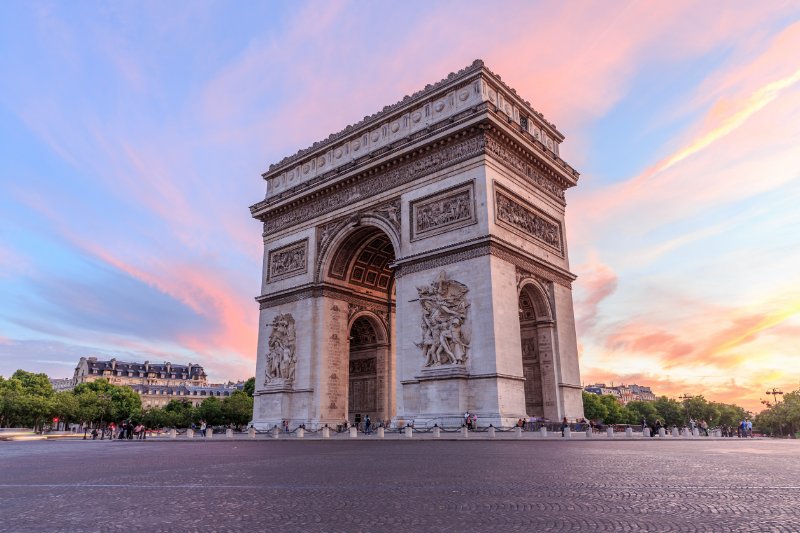
The Arc de Triomphe was built to commemorate the centenary of the 1815 Battle of Waterloo. The Arc de Triomphe is an imposing monument and is one of the world’s most iconic buildings. It was built by Napoleon’s architect, Georges Cuvier, and is located in the center of Paris, France. The Arc de Triomphe is the largest triumphal arch in the world. It is a place of historical significance and is a symbol of France and the French Empire. The Arc de Triomphe is also one of the most visited monuments in the world.
See Related : Arc de Triomphe: Exploring the Iconic Paris Arch
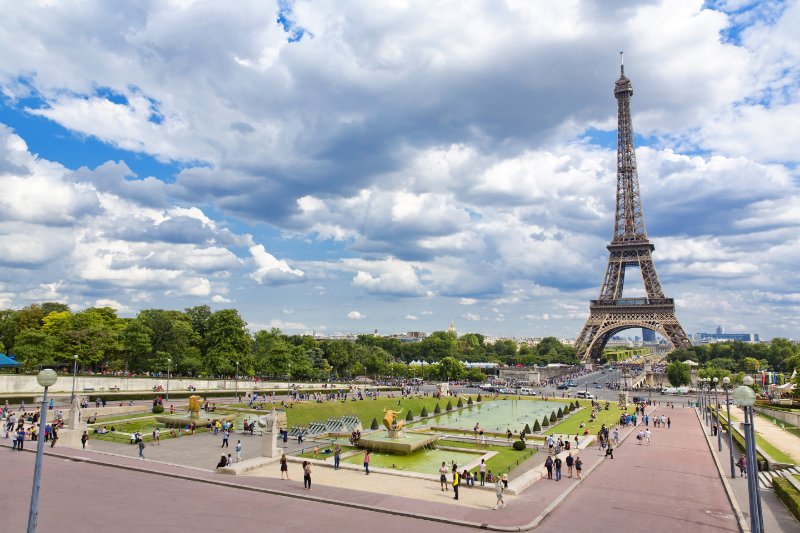
The Trocadéro Garden is one of the most famous parks in Paris . It is located in the 7th arrondissement of the city. The park is home to the Trocadéro Museum and the Palais de Chaillot. The Trocadéro is the highest point in Paris and from here there are magnificent views of the city. The Trocadéro is a short walk from the Champs-Élysées and is the site of the Paris Opera. The park is also home to the National Assembly and the Palais de l’Elysee.
The park is also home to the National Museum of Decorative Arts and the Musée de la Mode et du Textile. The museum is home to the Costume and Fashion exhibition, which is one of the biggest in the world. The exhibition explores the history of fashion from the ancient world to the present day. It contains over 4,000 original costumes from the museum’s collections. The Musée de la Mode et du Textile contains the world’s largest collection of fashion history and is home to the most important collection of fashion from the 18th to the 21st Century. The museum is
See Related: Best Things to do Near the Eiffel Tower
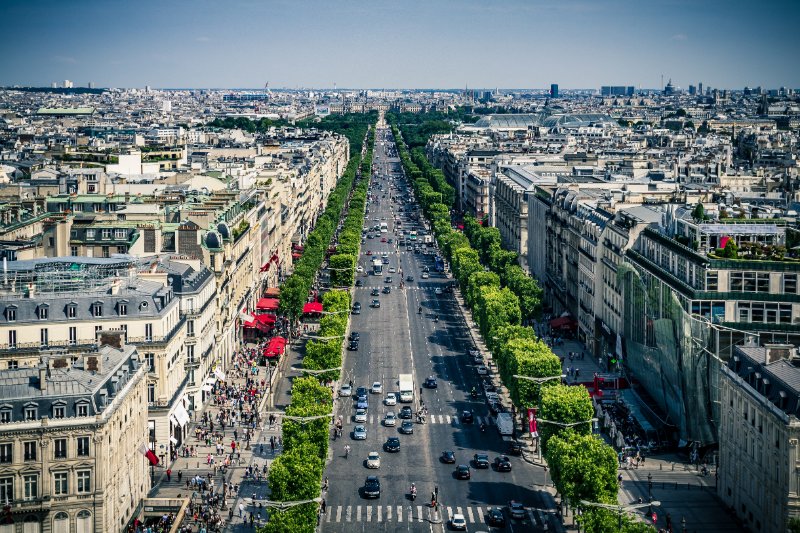
Avenue des Champs-Élysées is one of the most famous streets in the world. The street is famous because of its many high-end fashions and luxury brands and is well known for its elegant shops and high-end fashion. There are a number of famous buildings on Avenue des Champs-Élysées. Avenue des Champs-Élysées has a number of other famous buildings. These include the Hôtel de Crillon, home to the US Embassy; the Hôtel de Ville ; and the Hôtel de Sully. The Hôtel de Sully is a beautiful building and is one of the largest hotels in France.
See Related: When Does the Eiffel Tower Sparkle? A Guide to its Stunning Light Display
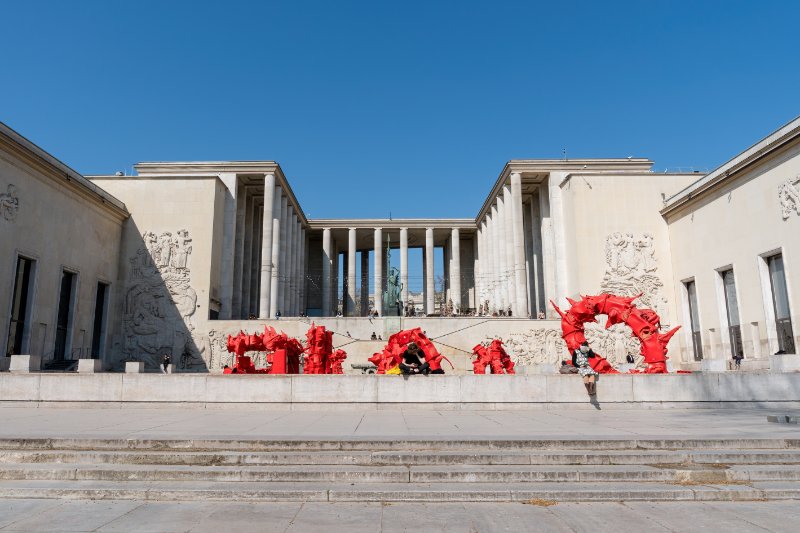
Paris Museum of Modern Art is one of the most popular museums in the world. It is home to some of the most famous art in the world and has works by Picasso, Dali, Matisse, and Monet. The museum is split into two main sections: the Picasso Museum and the Claude Monet Museum . The Picasso Museum is home to Picasso’s famous painting, Guernica, which was painted during the Spanish Civil War. The Monet Museum is home to the world-famous House at Giverny, the painting that gave rise to the name of the artist. The museum also has a collection of Claude Monet’s paintings and works by other artists.
See Related: Top Free Museums in Paris
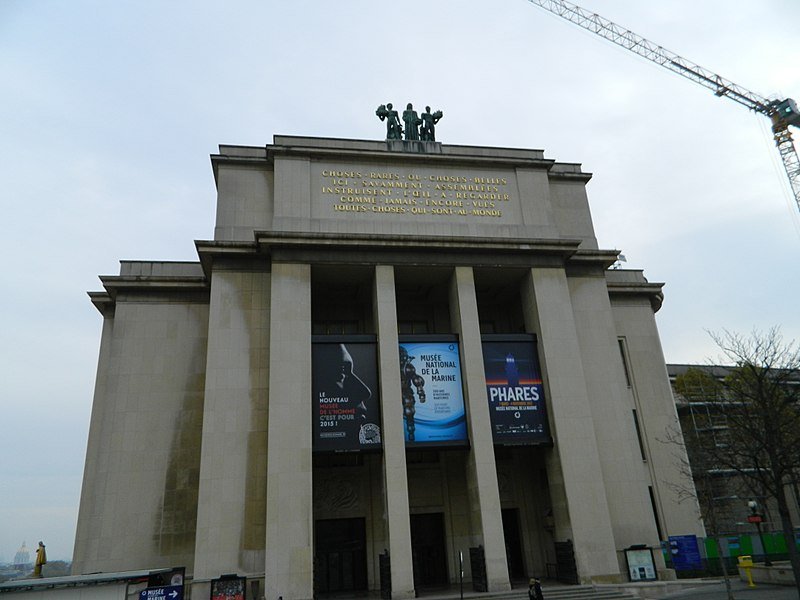
The National Marine Museum is located on the Ile Saint-Louis in central Paris, France. Its purpose is to preserve and study marine life and its conservation is the centerpiece of the museum’s activities. The Museum’s exhibitions, which are designed to be educational and entertaining, cover a wide range of marine life and are divided into sections dedicated to fish, invertebrates, mollusks, corals, sharks, shipwrecks, marine mammals, and vertebrates. The museum is open to the public and admission is free. The museum is open daily from 10 am – 6 pm (closed on Monday). It is accessible by public transport and is close to the Louvre and the Tuileries Gardens.
See Related: Best Travel Books About Paris: Must-Read Guides
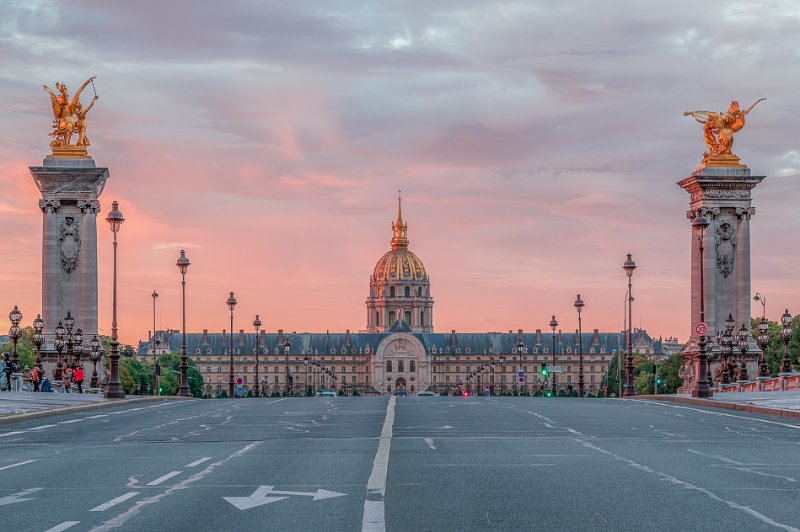
Les Invalides is a complex of buildings and gardens located in the heart of Paris, in the 5th arrondissement. It is home to the Musée de l’Armée, the Panthéon, and the Invalides, which is where Napoleon Bonaparte was buried. Les Invalides is home to the Panthéon , which is a church and mausoleum in the shape of a Greek cross. It is the resting place of many famous French people, including Voltaire, Rousseau, Molière, and many others. It is a UNESCO World Heritage Site and has the most famous dome in the world. The Invalides is a complex of buildings, including the Musée de l’Armée, which is a museum dedicated to the French military. Inside the museum, there is a large collection of military uniforms, weapons, and equipment. The Musée de l’Armée is one of the largest museums in Europe and is home to over 100,000 pieces of military equipment and weapons.
See Related: Paris Pass Review
The Eiffel Tower has become an icon around the world and visiting it should be on everyone’s travel bucket list! Its interesting history combined with spectacular views makes it a must-visit destination for travelers who are interested in learning about French culture or simply want to take in some breathtaking sights overlooking the Paris skyline!
Yes. The Eiffel Tower was designed and manufactured between 1885 and 1890 by French engineers Gustave Eiffel who specialized in steel structures.
La Tour Eiffel in French, and it is sometimes referred to as the Iron Lady. The iconic Eiffel Tower is a landmark of international importance. A centerpiece at the World Fair in 1889 it was aimed at commemorating a century in which France had achieved its greatest mechanical achievements.
For so many reasons, but primarily its unique beauty. The Eiffel Tower represents the most iconic symbol for Paris for nearly 150 years and is also the emblem of France. At its initial construction for the World Fair of 1889, it impressed everyone with its size and inventiveness and symbolized French know-how.
Related Resources
- Fun & Interesting Facts About Paris
- Best Cabarets in Paris, France
- Top Paris Restaurants with a View of the Eiffel Tower
Please rate this post
Your page rank:
Other Travel Guides
- Eiffel Tower History: The Iconic Landmark of Paris and Gustave Eiffel’s Masterpiece
- Expat Jobs in Paris: Discover Exciting Career Opportunities
- Job Opportunities in Paris: Can I Get Hired Without Speaking French?
- Immigration Attorneys in Paris, France: Expert Legal Services for Visas and Residency
- Best Coworking Spaces in Paris, France: The Ultimate Guide
- Mortgages in Paris France: A Guide to Financing Your Dream Home
10 Things You Must Know Before Visiting The Eiffel Tower in Paris 🗼
In this guide i'll tell you everything you need to know before visiting the eiffel tower in paris - from tickets to insider tips..
The Eiffel Tower in Paris is one of the most popular tourist attractions in the world, attracting around 7 million visitors each year.
I’ve been to Paris many times, so I’ve gathered quite a few insights and insider tips for visiting the Eiffel Tower; I’ll share these in this article.
- Eiffel Tower Highlights, Tickets & History
1. Visit Twice: Day and Night
2. carry minimal belongings, 3. allocate ample time for exploration, 4. opt for stairs over elevators, 5. check the weather, 6. download the eiffel tower app, 7. dine at the tower’s restaurants, 8. consider the paris passlib, 9. visit during off-peak times, 10. capture pre-visit photos at specific metro stops, when was the eiffel tower built, how tall is the eiffel tower, what is the cost of visiting the eiffel tower, what can you see from the top of the eiffel tower, what is the best time of day to visit the eiffel tower, eiffel tower highlights , tickets & history.

Let’s start with a few stats about the famous tower in Paris.
Opening Hours:
The Eiffel Tower is open year-round from 9:30 AM to 10:45 PM. Stair access may close earlier, so check the official website before visiting.
Advance Ticket Booking:
Due to long queues and high demand, especially for elevator tickets to the upper floors, booking tickets in advance is advisable.
This can be done online, offering benefits like Fast Track access, free cancellation, and guaranteed entry to all floors.
See the many different Eiffel Tower tickets here .
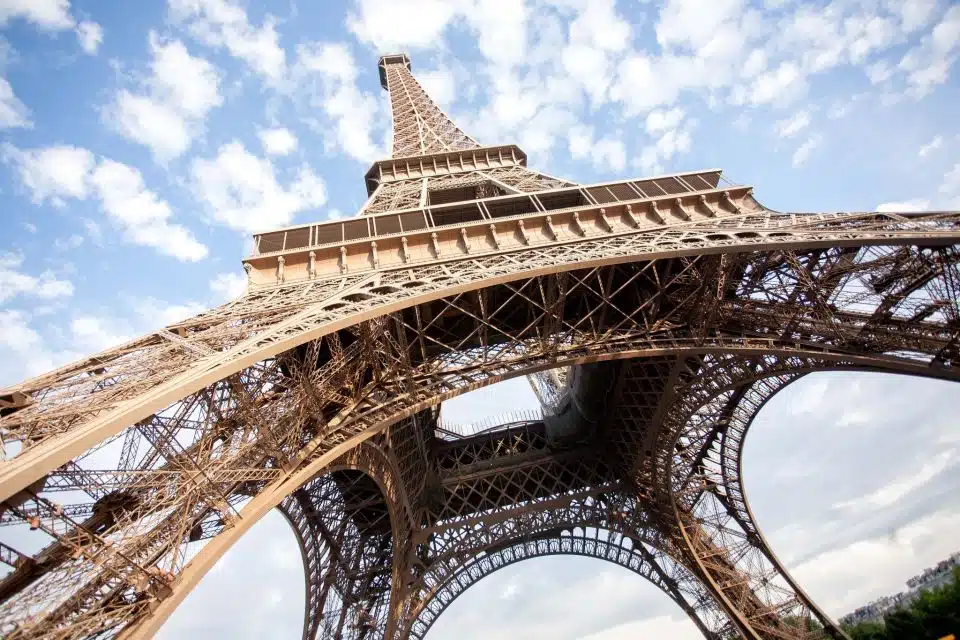
Height and Access:
The Eiffel Tower, including its antenna, stands at 330 meters, with the top accessible viewpoint at 276 meters. The first floor is 57 meters, the second is 125 meters, and there are 1,665 steps to the top if you take the stairs.
Elevator tickets must be purchased in advance.
Dining and Amenities:
On the second floor (125 meters), you’ll find the famous Le Jules Verne restaurant (reservation required) and a souvenir shop. Light snacks and drinks are also available inside the tower.
Designed by Gustave Eiffel , the tower was built between 1887 and 1888 for the 1889 World’s Fair.
It was initially intended as a temporary structure. It marked the centenary of the French Revolution and, despite initial criticism, has become a symbol of technological advancement.
Here’s a map showing where the Eiffel Tower is located in Paris:
If you don’t know Paris that well, check out my guide on the best areas to stay in Paris .
Here are my 10 things you need to know before visiting the Eiffel Tower in Paris.

Visiting the Eiffel Tower twice, once during daylight and once after sunset, offers contrasting but equally stunning views of Paris.
The daytime visit is ideal for enjoying panoramic city views and perhaps a delightful picnic in the surrounding gardens.
In contrast, an evening visit reveals the tower’s illuminated glory, creating a surreal backdrop for photographs and a romantic atmosphere.
With no locker facilities available, it’s essential to travel light when visiting the Eiffel Tower. Limit your items to essentials like your wallet, tickets, ID, and a small water bottle.
This approach not only eases your movement through the crowds but also minimizes the risk of theft, ensuring a worry-free experience.
To truly appreciate the Eiffel Tower, allocate at least 2 to 3 hours for your visit. This time frame lets you leisurely explore each floor, enjoy the dining options, and peruse the souvenir shop.
Rushing through the experience might cause you to miss out on the intricate details and the full breadth of what the tower offers.
Choosing the stairs over elevators can be a time-efficient and fascinating option. This route offers a unique perspective of the tower’s internal structure and provides a less crowded path to the second floor.
Additionally, it can be a good exercise and a memorable part of your visit, offering intimate glimpses of the tower’s engineering marvels.
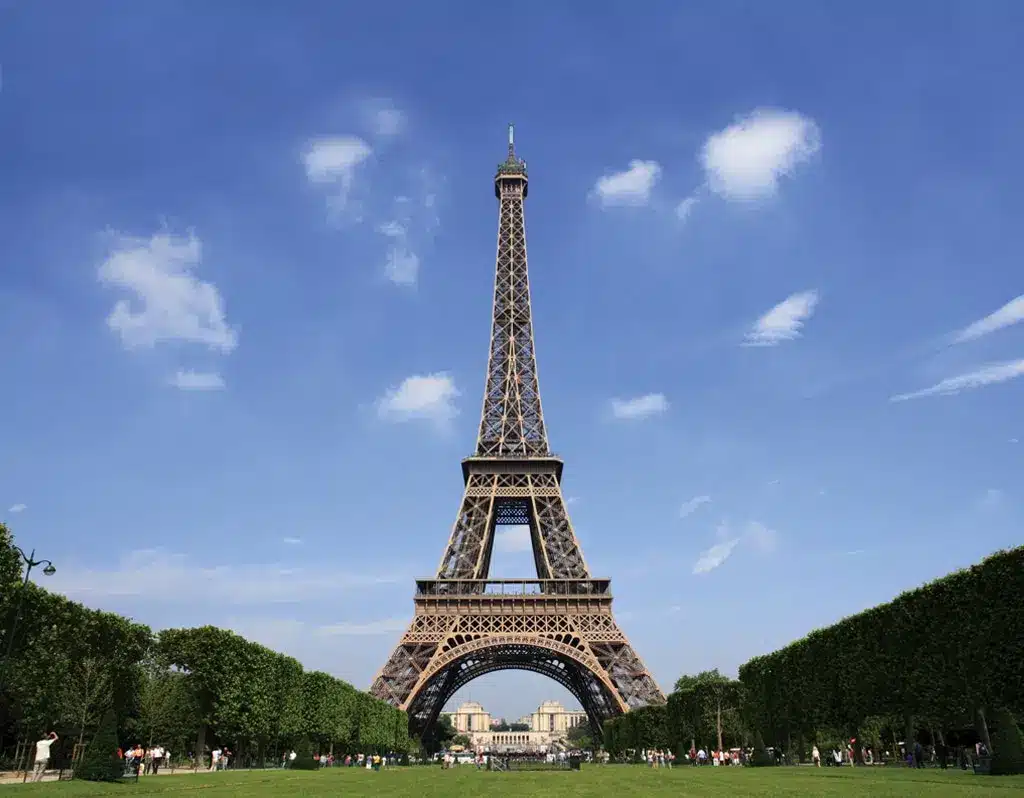
Weather plays a crucial role in the quality of your Eiffel Tower experience. Check the forecast and choose a day with clear skies for the best views.
Dressing appropriately for the weather, including comfortable footwear, ensures a pleasant visit, whether you’re walking up the stairs or standing in line for the elevator.
Enhance your visit by downloading the Eiffel Tower app . This app provides an extensive hour-long audio tour in several languages, offering insights into the tower’s history and architecture.
The app also aids in identifying significant landmarks visible from the tower, helping you understand and appreciate Paris’s landscape.
Experience fine dining at the Eiffel Tower’s restaurants, which offer exquisite cuisine and breathtaking views.
Reservations at these restaurants have the added advantage of skipping the regular entrance lines, providing a more relaxed entry.
Each restaurant has its unique ambiance and menu, adding a culinary highlight to your visit.
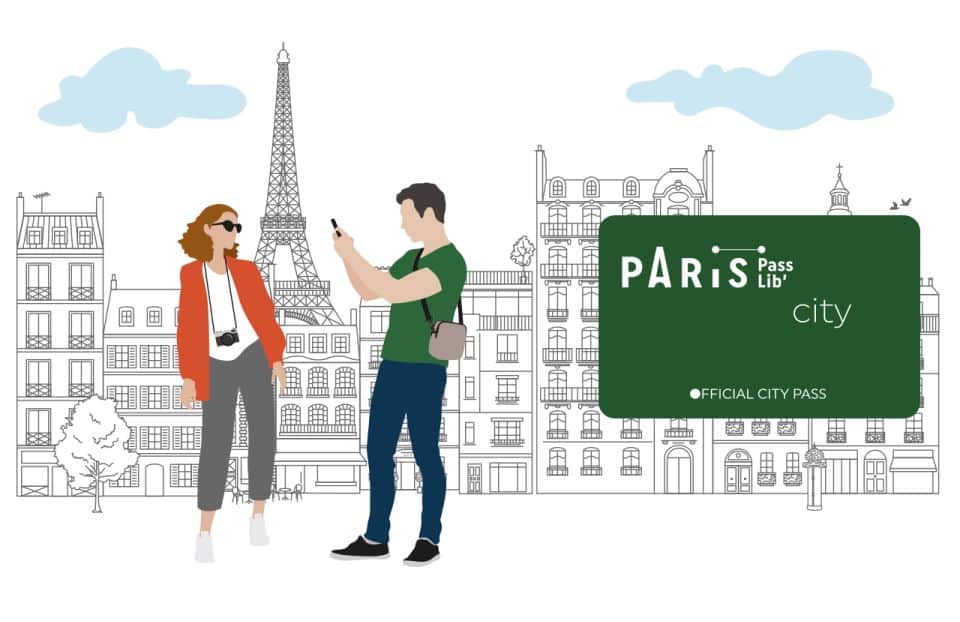
The Paris Passlib is a valuable investment for those planning to explore Paris extensively. It includes fast-track access to the Eiffel Tower and combines city attractions like a Seine cruise and a bus tour, offering a comprehensive Parisian experience.
It’s a cost-effective and convenient way to see the best of Paris, including its most famous landmark.
Read more on the Paris Passlib website or get it with free cancellation on GetYourGuide here .
Looking for more things to do in the French capital? Check my article with my favorite attractions & things to do in Paris .
Visiting during off-peak times, like winter weekdays, can significantly enhance your experience. These times are less crowded, allowing for a more relaxed visit.
It’s a perfect opportunity to take in the tower’s grandeur without the hustle and bustle of peak tourist seasons.
For the best photographs of the Eiffel Tower before your ascent, consider stopping at Trocadéro or Bir-Hakeim metro stations.
These spots offer excellent vantage points for capturing the tower’s glory. Early morning visits to these stations can help you avoid crowds, allowing for unobstructed photo opportunities.
By integrating these tips into your visit, your Eiffel Tower experience will be more than just a tourist checkmark; it will become a well-rounded and deep exploration of one of the world’s most famous landmarks.
Read all my Paris travel guides here .
The Eiffel Tower was built between 1887 and 1888 and was inaugurated on March 31, 1889.
The Eiffel Tower is 324 meters tall, including the antenna at the top. Without the antenna, it is 300 meters tall. It was the tallest building in the world when it was built in 1889 and remained so until 1930.
The prices for visiting the Eiffel Tower vary depending on the type of access desired. For example, tickets for taking the elevators to the top range between 16 and 25 euros, depending on one’s age and which elevator is taken. However, some money can be saved if one is willing to take the stairs – tickets for the stairway cost between 10 and 19 euros.
From the top of the Eiffel Tower, one can see a fantastic view of Paris and its surroundings. Many of the city’s landmarks are visible, including the Arc de Triomphe, the Louvre Museum, the Sacré-Cœur Basilica, and the River Seine. On a clear day, one can see as far as the Montmartre hill and other places outside the city.
To avoid the largest crowds, visiting the tower early in the morning or late in the evening is a good idea. In the summer, it is also possible to visit the tower at night when it is beautifully lit. If you wish to see the view in daylight, it may be best to visit the tower during daytime hours.
Websites I use to book my trips 👇 • Booking.com has the best offers on hotels and unique places to stay • GetYourGuide is the best place to book tours & activities with free cancellation • Omio is my go-to booking platform for trains in Europe • Welcome Pickups is the best & safest place to pre-book airport transfers Psst 👀 Have you subscribed to my Youtube channel and my Instagram where I provide more useful travel tips?
Leave a Reply Cancel reply
Your email address will not be published. Required fields are marked *
Save my name, email, and website in this browser for the next time I comment.
- Skip to main content
- Skip to primary sidebar
- Skip to footer

11 Things To Do Near the Eiffel Tower
Sean Finelli Last Updated: April 18, 2024
The Eiffel Tower is one of Europe’s top monuments. It is almost guaranteed that you’ll at least stop by Champ de Mars or Trocadéro to see it up close. But what do you do before or after? This article is dedicated to all the things that you can see and do near the Eiffel Tower.
Pro Tip: Planning your trip to the Eiffel Tower in Paris? Bookmark this post in your browser so you can easily find it when you’re in the city. Check out our guide to Paris and the Eiffel Tower for more planning resources and a list of the best tours of the Eiffel Tower .
Top 11 Things To See Near the Eiffel Tower
There’s no doubt that if you’re in Paris, you’ll head to the Eiffel Tower. It’s the city’s most iconic monument and a mesmerizing sight, especially at night.
While you’re in the vicinity, check out some of these top things to see and do near the Eiffel Tower. Looking for somewhere to eat? See our guide on where to eat near the Eiffel Tower too.
1. Seine River Boat Cruise
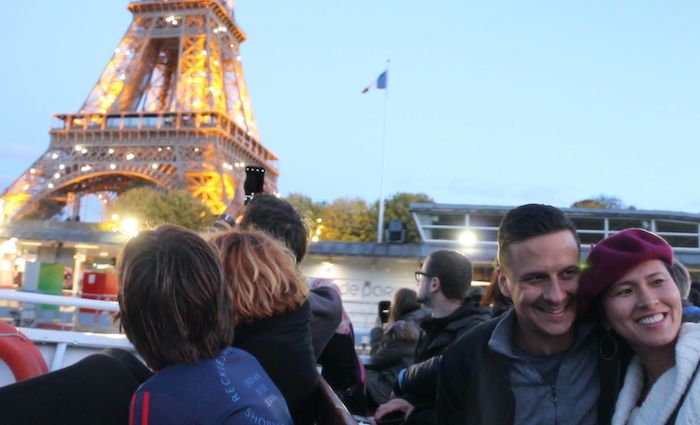
One of the great things about Paris is how clean they keep the Seine. I probably wouldn’t dive in but it was extremely common to take a dip in the Seine up until 1923 when the city of Paris banned it due to poor water quality, strong currents, and heavy traffic. That said, the river looks nice enough and the embankments lining the Seine are one of the most attractive features of the city.
Today, taking a Seine river cruise is practically compulsory. You’ll get an amazing perspective of the city from the Seine, especially at sunset. They also serve great food and cold drinks. You can take a dinner cruise or just have a couple of drinks.
We organize a Seine River cruise coupled with a tour of the Eiffel Tower . It’s a great way to combine the sites and not have to worry about logistics. We have hundreds of reviews stating it was the highlight of their time in Paris.
Not ready to book a tour? Find out if an Eiffel Tower tour is worth it .
2. L’île aux Cygnes
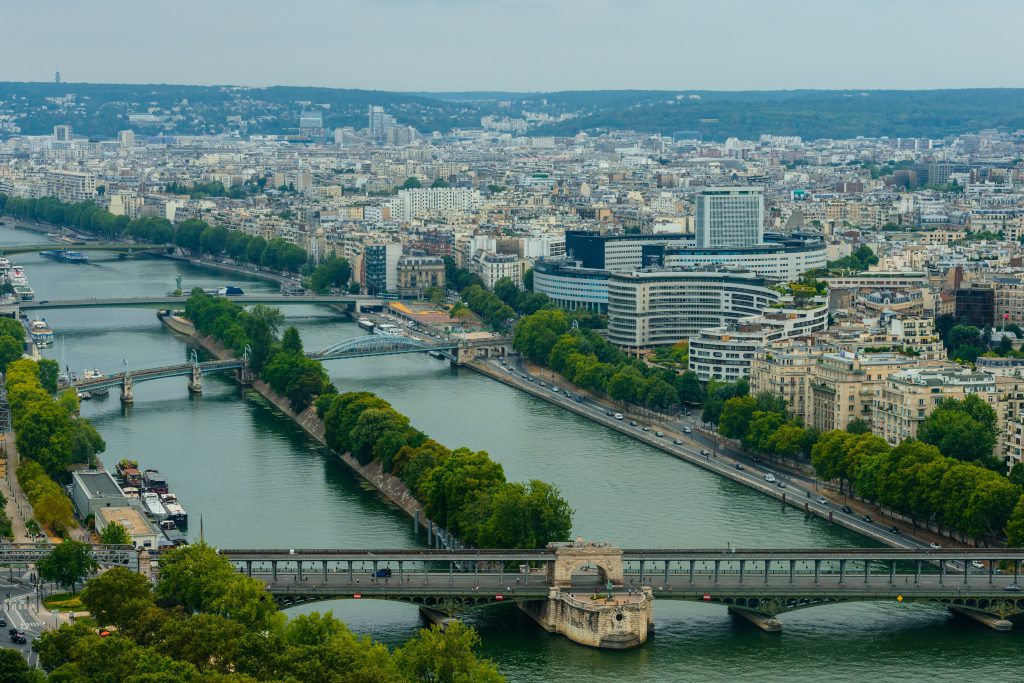
Another cool area is the island of Cygnes. It’s a man-made island on the Seine that connects two bridges, Ponte de Bir-Hakeim and Pont de Grenelle-Cadets de Saumur, and is a very Parisian thing to visit.
It is a 2,789-foot island (850 meters) with a single walkway on it named L’Allée des Cygnes. By now you’re probably wondering what cygnes means—swans! If you’re looking for something local to do near the Eiffel Tower, pop over to the Island of the Swans and walk the Path of the Swans.
It’s very popular for running in the morning and has a 22-meter-tall replica of the Statue of Liberty on it. Why? Well, the French built the Statue of Liberty and I guess they built this replica so nobody forgets it. It was inaugurated three years after the New York statue was erected on July 4th, 1889. The statue faces its big sister to the west.
Address: All. des Cygnes
3. Refreshments at Le Bal de la Marine
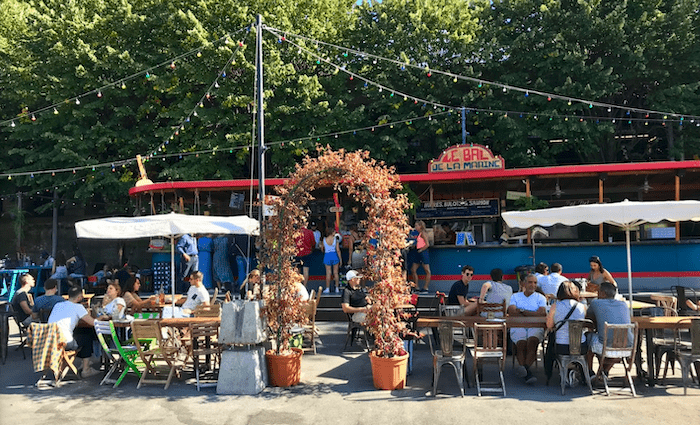
€€ | Bar and Restaurant on Seine | Outdoor Seating | Kid Friendly
This is a really cool spot on the Seine. If you get a nice warm day in Paris with some sun, you’ll probably find me here. They serve mostly seafood but also have pizza and other French fare.
The variety is great and the management supports suppliers who are focused on sustainability, “choosing winemakers concerned about respecting the land, brewers producing in France, and French drink manufacturers who compete with multinational soda companies.” I like it, and I’m sure you will too! The location and views don’t hurt either.
Address: Port de Suffren
4. Passerelle Debilly (Footbridge)
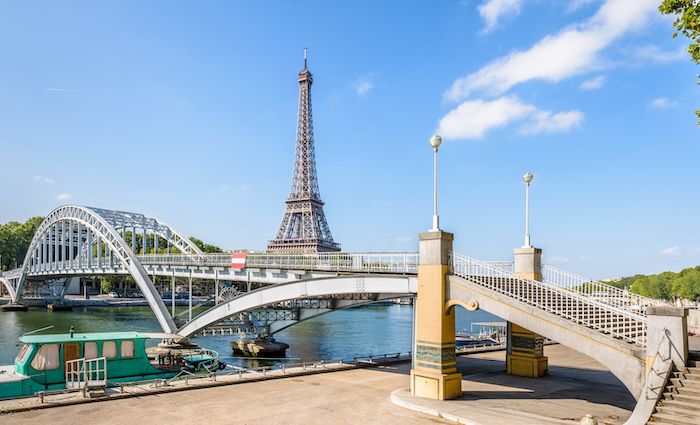
The Seine is a hustling and bustling part of Paris and as you near the Eiffel Tower, it gets even busier. There are ports where boats are docked and lots to do.
Passerelle Debilly, or the Debilly Footbridge, is the center of that. Don’t worry about cars here but the bikes may honk at you if you’re blocking the way! The views of the Eiffel Tower are pretty awesome from here.
Address: Passerelle Debilly
5. Palais de Tokyo
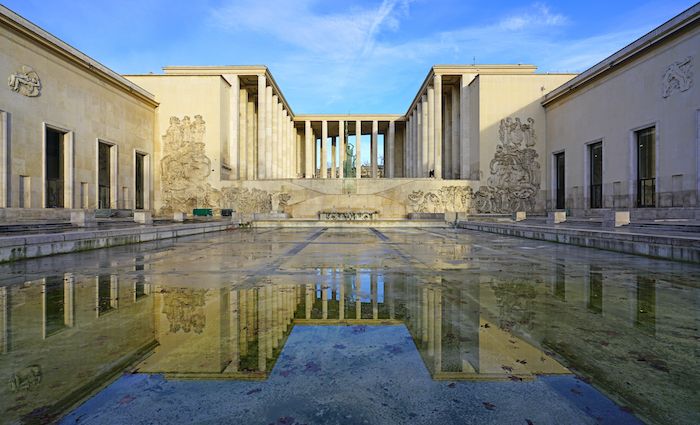
Attached to the Museum of Modern Art, Palais de Tokyo is the largest contemporary art museum in France dedicated to temporary exhibitions. The museum is one of my recommendations for children as modern art installations are creative, fun, and often colorful. The museum had a life-size doll house at one time.
Address: 13 venue du Président Wilson | Ticket: €12 adults, free for under 18-year-olds | Hours: Wed – Mon, Noon to 9 pm (closed Tuesdays)
Our Best Guided Tours of Paris
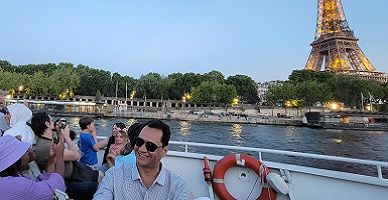
Likely to Sell out
Privileged Access Eiffel Tower Night Tour With Seine River Cruise
Sometimes the most amazing moments happen by chance. Other times, they are orchestrated by professionals. Our Eiffel Tower tour takes you on a cruise down the Seine River for incredible views of Notre-Dame and the Eiffel Tower. Champagne included, of course. Then you’ll be guided to the Eiffel Tower, skip the long lines, and head up the elevator to the second floor for a night to remember.
Top Selling
Ultimate Taste of Paris Food Tour in Le Marais
Embark on a culinary journey in Le Marais—one of the hippest neighborhoods in Paris. Most food tours in Paris offer cheese and wine, but we include a full, sit-down meal! Enjoy a feast of French cheeses, oysters, street food, boeuf bourguignon, crème brûlée, and more. This 3-hour food tour combines the best of Paris’ culinary heritage and you won’t find a better deal out there!
Not ready to book a tour? Check out our best Paris tours to take and why .
6. Bois de Boulogne
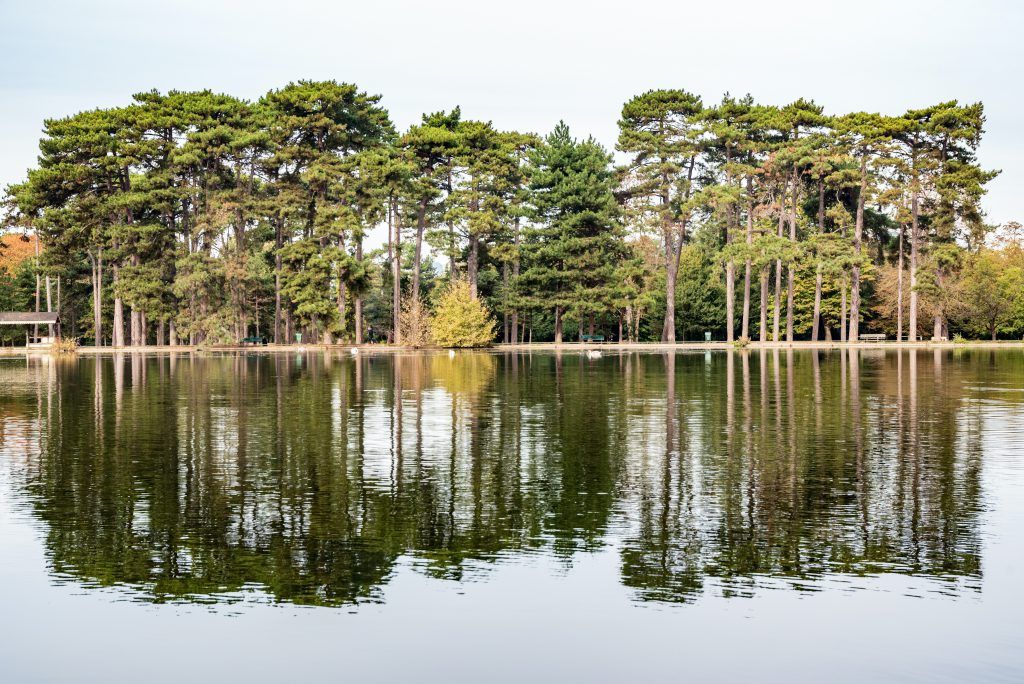
Of all the gardens on this list, Bois de Boulogne is the only extremely large park that you could really get lost in. You’ll also find an extremely high concentration of Parisians here as most tourists would gravitate towards a more famous park.
It is home to several lakes, one of which is large enough to have two islands in it. You’ll see people rowing, exercising, walking around, and generally enjoying nature.
This park is also home to the Louis Vuitton Foundation Museum. You’ll find a lot to do with kids here such as the Jardin d’Acclimatation . It’s a cool little spot with rides and such.
A very cool experience for romantics is to eat at Le Chalet des Iles . You’ll find it on an island in Lac Inférieur and you have to take a boat ferry to get there. It’s pretty expensive, so this would be a great place to go for a fancy night out. This park is free and doesn’t close, but I don’t recommend going too deep into the park too late at night.
Address: Bois de Boulogne
7. Rodin Museum
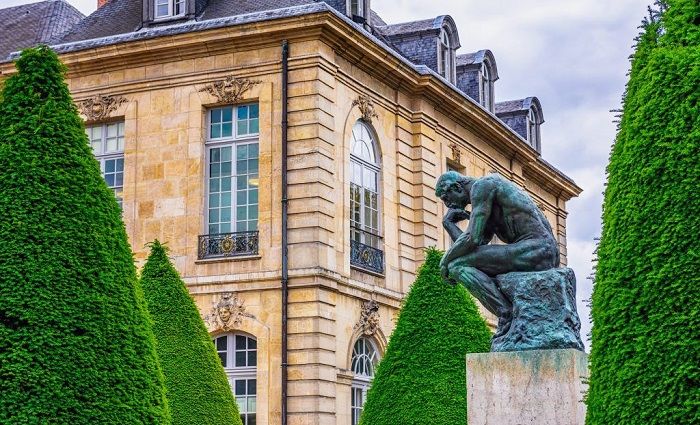
Auguste Rodin remains the most famous French sculptor to date. He is most famous for his sculpture The Thinker , which is located at the Rodin Museum in Paris, France.
The museum is located next to Invalides metropolitan station. There’s a garden and two structures, one of which is a gift shop and café, Boutique du musée Rodin.
Then there is the main structure, a mansion named Hôtel Biron. The name comes from a very wealthy previous owner by the name Louis-Antoine de Gontaut-Biron. Hence, Hôtel Biron.
The mansion sits in a large well-manicured garden dotted with various sculptures created by the master himself. There are also works from other artists including Rodin’s prize student Camille Claudel.
There are over 6000 sculptures in the collection but many are housed off-site. You will find The Thinker outside in the garden. This museum is a wonderful visit with a local guide.
Address: 77 Rue de Verenne | Hours: 10 am – 6:30 pm (closed Mondays)
8. Hôtel National Des Invalides and Musée De L’Armée
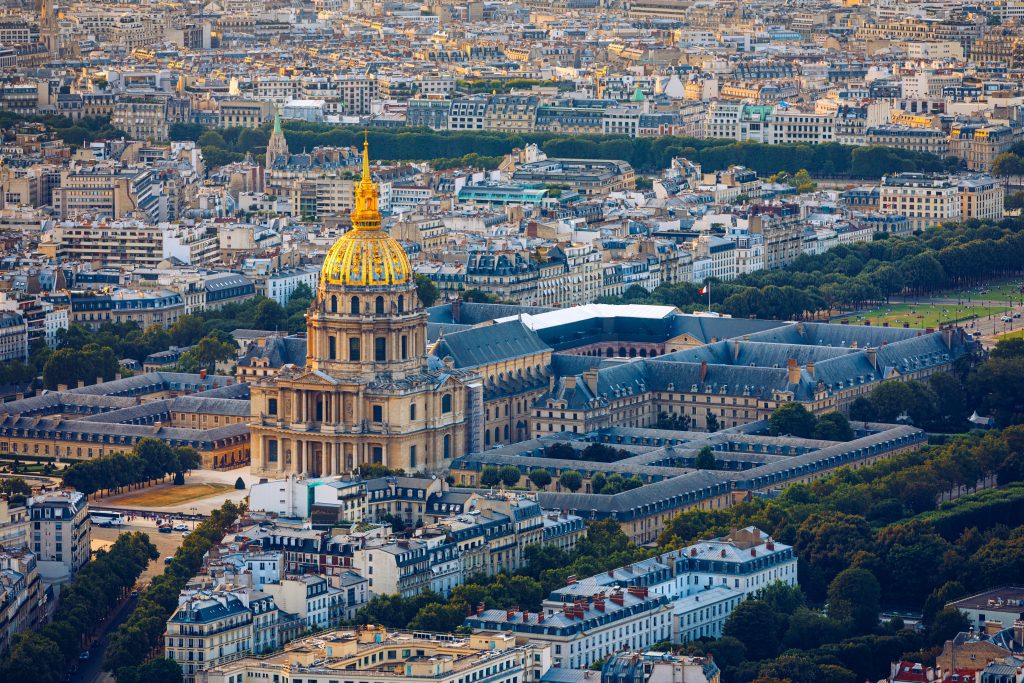
This massive structure is most commonly known for being the tomb of the famed French Emperor, Napoleon Bonaparte. The structure is 351 feet tall (107 meters) topped with a golden dome. Yes, real gold. About 30 pounds of gold leaf (12.65 kilos).
The exact meaning of invalides is “disabled,” but the translation doesn’t do it much justice in this case. It refers more to “the departed” people. It’s a very cool building and houses a military museum behind the tomb.
Admission will run you €14, which I thought was a little high for what you get. I would probably only recommend it to deep lovers of military history. I personally would rather spend my money entering our next stop—the Rodin Museum and check out Invalides from the exterior. There is a military museum in the adjoining complex, which is included with the ticket (Musée de l’Armée).
Address: 129 Rue de Grenelle | Hours: Daily, 10 am – 5 pm
9. Paris Museum of Modern Art
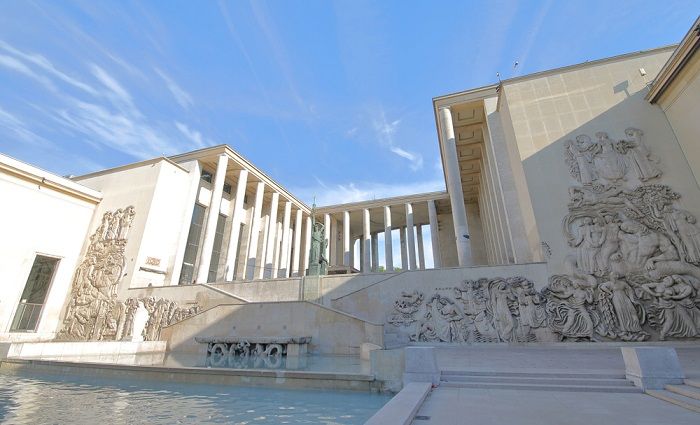
Been to Paris so many times and are way too cool for the Louvre? I have the museum for you. Musée d’Art Moderne de Paris or MAM Paris.
This is a pretty cool collection that you can pass through on your own, possibly after a cocktail and before seeing the Eiffel Tower. It has a few huge works of art and a ton of other eye-grabbers. See it for yourself —I think you’ll be convinced.
The Paris Modern Art Museum is technically free to visit but they ask for a non-mandatory donation of €5 to see the permanent artwork.
This museum is also great for exhibitions. They charge between €7 to €13 for different exhibitions. While we love and appreciate classical art, we recommend visiting this museum to promote the curation and creation of modern art. One day, our modern art will be the classical art of future generations and it won’t compare without our support.
Address: 11 Avenue du Président Wilson | Hours: Tues – Sun, 10 am – 6 pm (closed Mondays)

10. Champ de Mars
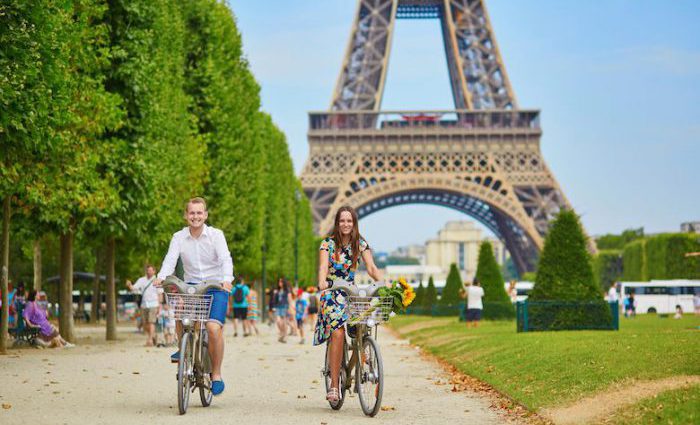
Champ de Mars is a massive public park in Paris that forms a sort of runway to the Eiffel Tower. Like the Eiffel Tower, the Champ de Mars is in the 7th arrondissement and is a huge draw for the area. Having a picnic on the Champ de Mars while admiring the Eiffel Tower has become the thing to do for travelers.
The name derives from the Campus Martiu s or Field of Mars in Rome—an area that was historically flooded and is home to famous attractions like the Pantheon, Piazza Navona, and Campo de’ Fiori. Why name this park in Paris after a crowded area with virtually no parks in Rome?
The Champ de Mars was an area where the French military famously trained in Paris. Mars is the god of war and everyone likes Rome, so why not? Today, you can enjoy this massive green space and have a picnic or take a stroll through it on your way to a warm lunch at a restaurant near the Eiffel Tower .
Address: 2 Allée Adrienne Lecouvreur
11. Trocadéro Platform
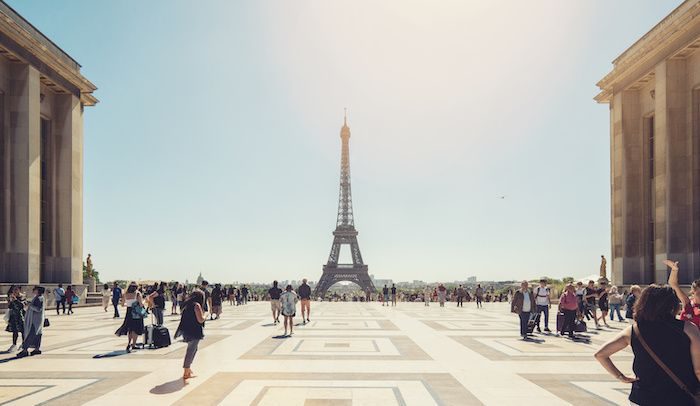
Trocadéro doesn’t sound French to you? That’s because it’s named after an island in Spain known as Isla del Trocadero. This was the location of a famous battle won by France against Spanish rebellion forces in 1823.
The French weren’t fighting to take over Spain. They were actually fighting to help restore King Ferdinand VII’s power. A little help from your neighbors. The result: King Ferdinand comes back into power and a beautiful park is built that will eventually provide the best Eiffel Tower photo opportunity.
In this area, there was once a massive and beautiful palace named Palais du Trocadéro. It was demolished to make way for Palais de Chaillot, which still stands today. While the former palace was a more beautiful structure, the current structure is the best place to view the Eiffel Tower.
If you get off at Trocadéro metro station, you can’t miss the Eiffel Tower no matter how hard you try. The platform is the Palais de Chaillot and an incredible place to take a photo. After, you can walk all the way to the Eiffel Tower—no directions needed.
Address: 1 Pl. du Trocadéro et du 11 Novembre

Privileged Access Eiffel Tower Night Tour with Seine River Cruise
Sometimes the most amazing moments happen by chance. Other times, they are orchestrated by professionals. Our Eiffel tower tour cruises by the famed monument as it lights up and you drink champagne. After, you’ll have tickets to enter the tower and ascend to the 2nd level with an elevator.
Secrets of the Louvre Museum Tour with Mona Lisa
The Louvre is the largest art museum on Earth and the crowning jewel of Paris. It embodies the French vigor for life. Join a passionate English speaking guide for a tour of the most famous artwork. Skip the line admissions included.
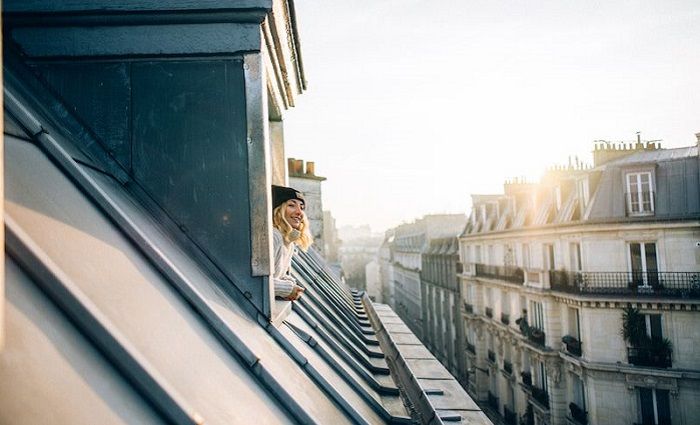
Where To Stay in Paris
With a city as magnificent as Paris, it can be hard to find the perfect hotel at the perfect price. Explore the best hotels and places to stay in these incredible neighborhoods in Paris.
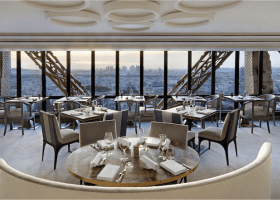
About Sean Finelli
Sean is a co-founder and owner of The Tour Guy and its subsidiary The Roman Guy. He studied finance and statistics, but that is his "Dr. Jekyll" side! His "Mr. Hyde" is in love with travel, art, history, and culture. Sean has read libraries of historical text and believes that all internet content should come from books. A practice he follows!
Reader Interactions
Leave a comment cancel reply.
Your email address will not be published. Required fields are marked *
- Travel Guide
- In The Press
Eiffel Tower, the Iron Lady
Inspiration
Paris Cultural Heritage Nature and Outdoor Activities With Family Couples

Reading time: 0 min Published on 16 January 2024, updated on 16 April 2024
World icon and quintessential symbol of Paris and of France, the Eiffel Tower dazzles her visitors from all over the world. 1062 ft high, the famous "Iron Lady" has dominated the city of Paris since 1889. Although it is not at the residence of the President of the Republic, the Eiffel Tower is undoubtedly the First Lady of France. Let's discover without further delay the secrets of this tower unlike any others.
The Parisian Icon
The Universal Exhibition in Paris in 1889 saw her birth. Since then, the banks of the Seine have been her kingdom. The Eiffel Tower rests on the green carpet of the Champs de Mars gardens, facing the Trocadéro Gardens.
Gustave Eiffel’s Tower dares those who are brave enough to climb the 1,665 steps (and those who prefer the lift!) to admire the exceptional 360⁰ views across Paris’s cityscape. As the poet Jean Cocteau liked to describe it, as soon as your set your eyes on "the beautiful lace giraffe", your pupils dilate.
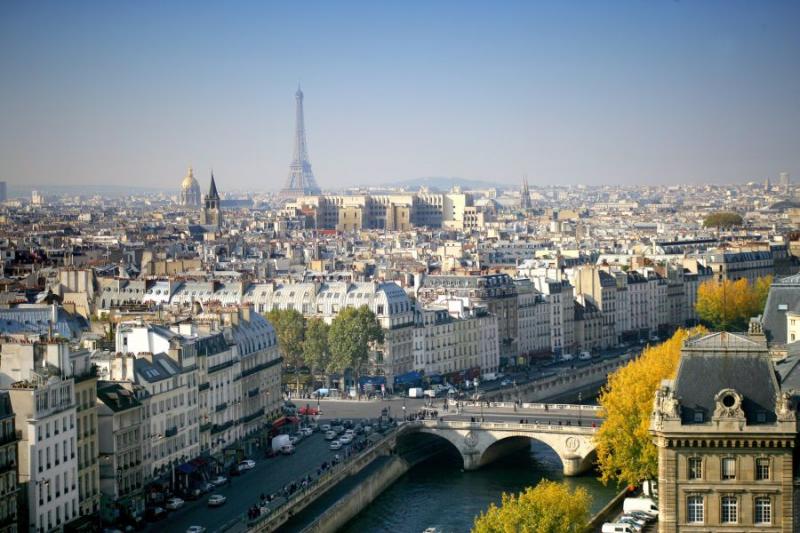
The Iron Lady, a seductress.
The Iron Lady stands still on Champ-de-Mars. At nightfall, she puts on her clothes of light. On special occasions such as the National Holiday on July 14, she illuminates Paris with different colors. The Iron Lady remains the most visited monument in the world throughout time.
At the end of the last century (1985-1990), the Eiffel Tower goes through a slight makeover: new elevators (4 in each pylon), weight reduction (2960808 pounds) and lighting worthy of her elegance. All these efforts allow her to continue to affirm her vocation for Paris, the City of Light.

Le Jules Verne
Experience with your loved ones an extraordinary gastronomic journey at Le Jule Verne restaurant with the capital of romanticism at your feet. Le Jules Verne is truly a tasteful experience in a magical place. Enjoy French cuisine at 410 ft of Paris (2nd floor).
Want to elevate this experience? A few steps to climb, and here you are on the 3rd and top floor. You will be surrounded by clouds at 905 ft above the ground and a panoramic view of the French capital.
Already time to get down to earth? Instead, extend these magical moments by joining the 1st floor where thrills await you. Discover the glass floor at 187ft above the ground and unforgettable gifts in the local shops.
Symbol of modernity
The renowned French symbol might have never existed. The Eiffel tower went through few oppositions during the Universal Exposition in Paris in 1889. However, Gustave Eiffel stood tall and defended his project.Once qualified as "useless" and "monstrous" by a group of artists, Gustave Eiffel responded that the Iron Lady project was a "symbol of contemporary science build for the glory of Paris".
After two years, two months and five days of work, Eiffel finished the tower that defies the laws of physics and stands out against the strong winds. The Eiffel Tower became, in the 1920s, a symbol of modernity and technological superiority.

Visit the Eiffel Tower
FACEBOOK - Eiffel Tower YOUTUBE - Eiffel Tower
Find out more: - 9 anecdotes revealing all you need to know about the Eiffel Tower - Why you should visit the Eiffel Tower this year - Visit Paris from the sky with FlyView - Book your visit to the Eiffel Tower

By Redaction France.fr
The magazine of the destination unravels an unexpected France that revisits tradition and cultivates creativity. A France far beyond what you can imagine…
8 Luxurious Boutiques in Paris

A Virtual Rendezvous with French Castles
A perfect getaway to France
Loire Valley

Paris region

Provins: a medieval jewel in Île-de-France

The Most Beautiful Golf Courses in France
Northern France

Touring Paris’ trendiest district- Le Marais
Tasting paris region: the best local specialities.

Sensational seafood at Rech in Paris, a Ducasse 's restaurant

31 Top-Rated Tourist Attractions in Paris
Written by Lisa Alexander Updated Mar 21, 2024 We may earn a commission from affiliate links ( )
Whether sunshine is sparkling on the café terraces of Boulevard Saint-Germain, or melancholy mists of the Seine River are shrouding Notre-Dame Cathedral, Paris has a way of romancing visitors. The love affair might begin with a first glimpse of the Eiffel Tower, then continue with strolls along the wide tree-lined avenues and in lavish formal gardens.
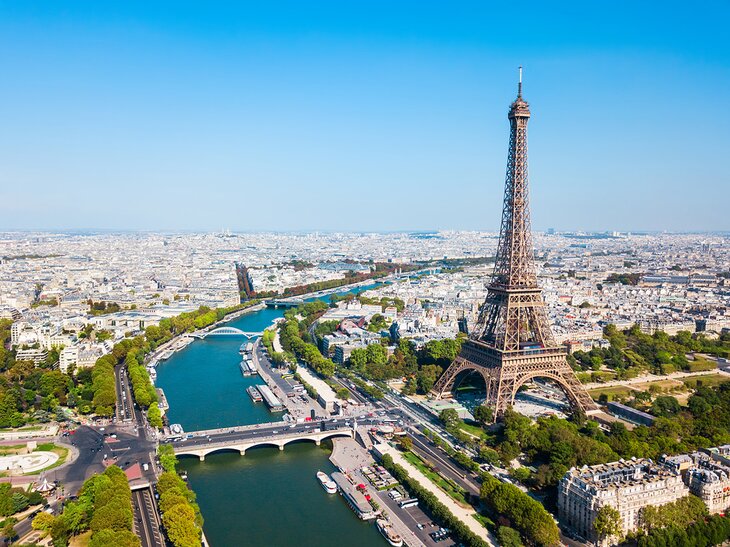
The city is seductively beautiful. Each neighborhood ( quartier ) reveals its unique personality. The Latin Quarter is a small cluster of pedestrian streets and narrow medieval alleyways where bookshops vie for space with university students' cafés and eateries. The fashionable Champs-Élysées buzzes with energy. Outside the city center, Montmartre still feels like a country village and flaunts its bohemian past.
After seeing the museums and monuments, you will want to seek out the small surprises, like family-run bistros with handwritten menus; cobblestone lanes full of quaint shops; secluded squares adorned with flowing fountains; and elegant tea salons, where dainty jewel-like desserts beckon from glass-covered pastry cases.
In every hidden corner and at all the famous sites, Paris casts a spell of enchantment. One visit may inspire a lifelong passion.
Discover what makes the City of Light so captivating and learn about the best places to explore with our list of the top tourist attractions in Paris.
See also: Where to Stay in Paris
1. Eiffel Tower
2. musée du louvre, 3. avenue des champs-élysées, 4. musée d'orsay, 5. palais garnier, opéra national de paris, 6. cathédrale notre-dame de paris, 7. place de la concorde, 8. arc de triomphe, 9. hôtel de la marine, 10. jardin des tuileries, 11. seine river cruises, 12. musical concerts at sainte-chapelle, 13. bustling boulevards and legendary cafés, 14. jardin du luxembourg, 15. sacré-coeur and quartier montmartre, 16. panthéon, 17. place des vosges, 18. musée rodin, 19. place vendôme, 20. centre pompidou, 21. hôtel national des invalides, 22. domaine national du palais-royal, 23. place de la bastille, 24. place du châtelet and tour saint-jacques, 25. la conciergerie, 26. fondation louis vuitton, 27. parc de la villette, 28. paris plages, 29. cimetière du père lachaise, 30. parc des buttes-chaumont, 31. grande arche de la défense, where to stay in paris for sightseeing, tips and tours: how to make the most of your visit to paris, best time to visit paris, france.
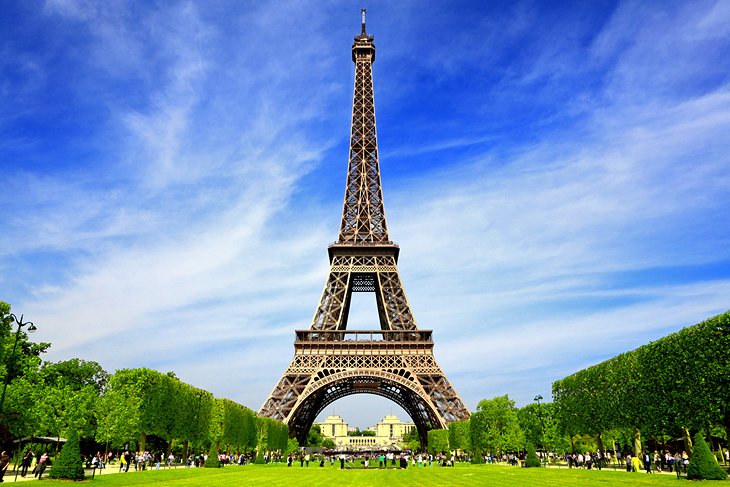
The Eiffel Tower (la Tour Eiffel) ranks high on the list of places to visit in France and is one of the most-visited tourist attractions in the world. So it's hard to believe that the structure was originally dismissed as a monstrosity. The innovative metal structure shocked Victorian-era audiences when it was unveiled by Alexandre-Gustave Eiffel for the Paris Exhibition of 1889 .
Whether loved or hated, the Eiffel Tower has always impressed. Reaching a height of 324 meters, the tower is comprised of 18,000 sturdy iron sections held together by 2.5 million rivets. Although no longer the world's tallest building, the Eiffel Tower has achieved the status of an icon.
For first-time visitors, seeing the Eiffel Tower is an unforgettable experience. Upon arrival at the esplanade, the sight of the four massive pillars that support this 10,100-ton monument leaves many awestruck.
Author's Tip : Purchase your tickets to the Eiffel Tower in advance online. You first choose a specific date and during the online process, you will reserve a specific time slot for the visit. (You must arrive on time.) Tickets sell out during high season (July and August), so you should purchase your tickets as far in advance as possible.
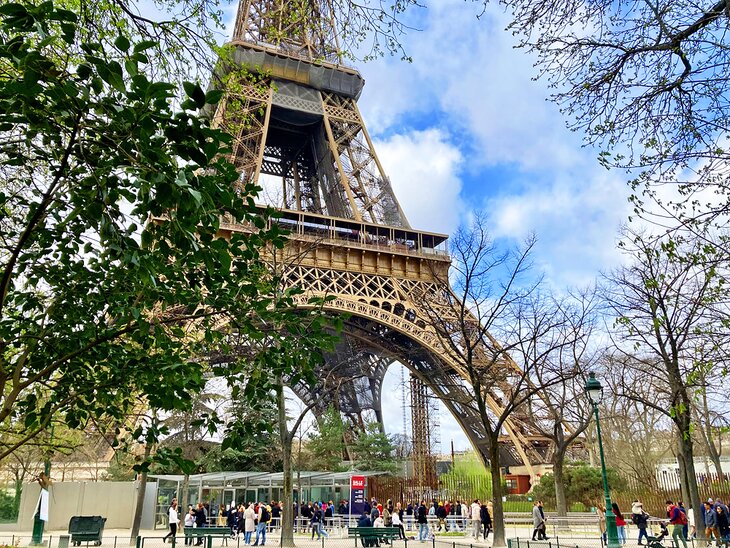
When you arrive at the Eiffel Tower, you will first walk through the esplanade gardens. Then you will look for the correct queue (which will be labeled "Visitors with tickets"). The recently renovated gardens feature leafy trees and pedestrian pathways with close-up views of the Iron Lady.
To arrive at the Eiffel Tower's 1st floor (at 57 meters) requires an elevator ride or a walk up the 360 steps. This level has public restrooms, a gift shop, a cafeteria, a brasserie restaurant, and an open-air terrace space for admiring the views.
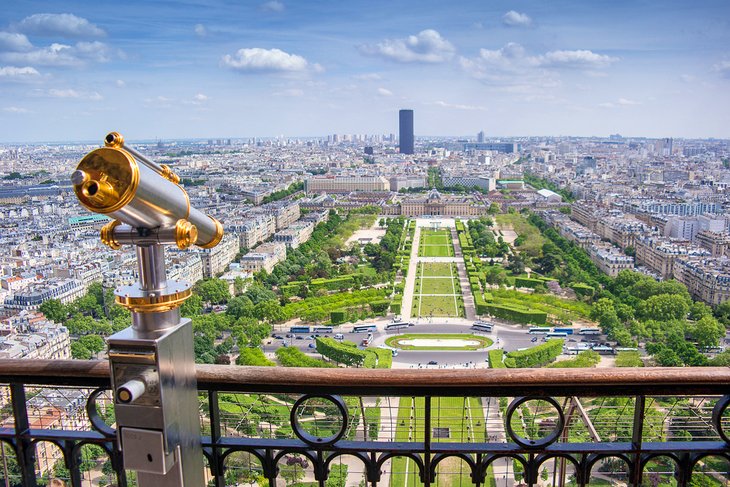
The 2nd floor (at 125 meters) of the Eiffel Tower is reached from the 1st floor by a staircase of 344 more steps or an elevator ride. This level has similar amenities as the 1st floor, except the viewing platforms offer a perspective onto more of the Paris monuments (such as the Notre-Dame, the Louvre, and the Basilique du Sacré-Coeur).
A highlight of the 2nd floor, the Michelin-starred Le Jules Verne delivers exceptional haute cuisine in a dreamy setting. The restaurant's dining rooms feature expansive windows, which provide a peak of the Eiffel Tower's structural beams and glimpses of Paris cityscapes. You'll also find a buffet-style cafeteria and the Pierre Hermé macaron boutique.
To arrive at the top floor (276 meters in elevation) requires an exhilarating elevator ride from the 2nd floor. The staircases only go up to the 2nd floor, so climbing up to the top is not an option.
Visiting the top floor of the Eiffel Tower is one of the most thrilling things to do in Paris , but it's not for the faint of heart. When you walk out onto the compact viewing platform at this level, you are overwhelmed by the far-reaching views and strong gusts of wind. Up this high, it feels like another world, and you can no longer hear the noise of street traffic below.
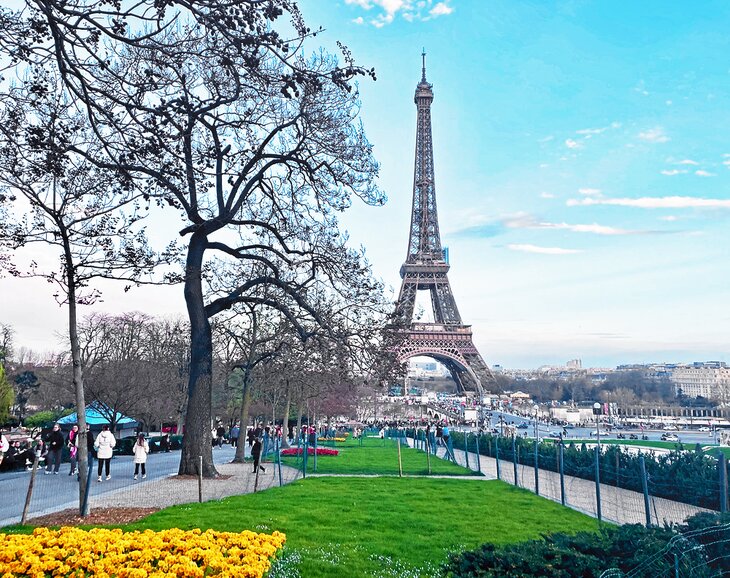
You definitely will want to spend some time taking photos of the Eiffel Tower. From either the Jardins du Trocadéro (a short walk across the Seine River) or the Parc du Champ de Mars (the lawns in front of the tower), there is just the right distance for picture-perfect photo-ops.
Address: La Tour Eiffel, Champ de Mars, 75007 Paris (Métro: Bir-Hakeim, Trocadéro, Iéna, or Passy station)
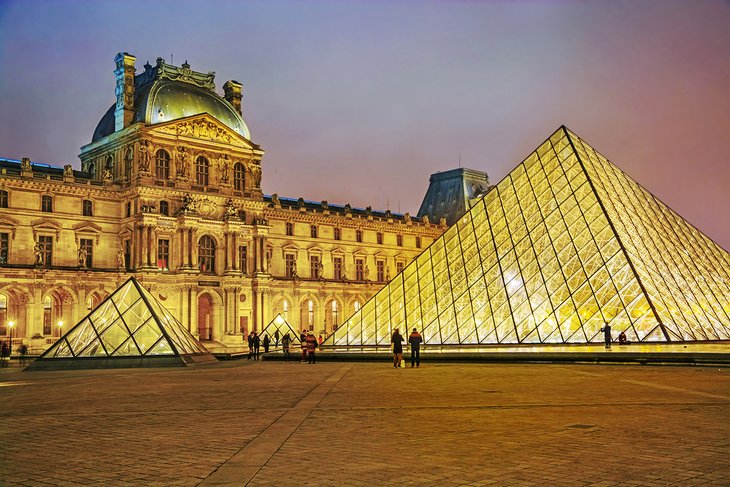
The Louvre is the most prestigious of Paris' museums and the crème de la crème of the city's cultural attractions. Besides its exceptional art collection, the building has a regal past: The Louvre was formerly the residential palace of France's kings.
Today, the Musée du Louvre displays thousands of artworks, many of which are considered masterpieces, from antiquities to European paintings of the 15th to 19th centuries.
It is impossible to see it all in one visit, but you can focus on a particular gallery, such as classical sculpture, Italian Renaissance art, or 17th-century French paintings, or take a self-guided tour to cover the Louvre Museum's highlights.
Of course, you will want to get a look at the Mona Lisa or La Gioconda (or La Joconde in French) painted by Leonardo da Vinci in 1503-1505. Many tourists breeze through the museum just to glance at this one piece, but there are other must-see works of art to admire even if time is limited.
Other masterpieces of the Louvre include the ancient Vénus de Milo sculpture; the monumental Victoire de Samothrace of the Hellenistic period; the immense Wedding Feast at Cana painting by Veronese (1563); Sandro Botticelli's Venus and the Three Graces fresco; and Liberty Leading the People (1831) by Eugène Delacroix, depicting the Parisian uprising of July 1830.
To get the most out of a visit to the Louvre, join a guided tour. The museum offers tours in multiple languages. These focus on the highlights and provide information on the palace.
The Louvre Museum Skip-the-Line Tour is another option that also takes you straight to the museum's most famous artworks, including the Venus de Milo and the Mona Lisa . On this three-hour tour, a guide (who is an art historian) provides in-depth commentary about the masterpieces.
Author's Tips : Most visitors enter the museum in the courtyard of the palace at the Pyramid du Louvre , the glass pyramid designed by Ieoh Ming Pei in 1917. This entrance almost always has long lines. The wait is especially long without a timed entrance ticket. (See tips below for alternative entrances to the museum.)
Avoid the lines of the Pyramid entrance by going to one of the lesser-known entrances. If you already have a Louvre museum ticket or a Paris Museum Pass, head to the Carrousel entrance (99 Rue de Rivoli) where you likely can walk right in without waiting in line. You may save some time at this entrance if you haven't reserved a specific time slot for admission.
Purchase a museum pass : If you plan to visit multiple museums, you can save money and time by purchasing a Paris Museum Pass . The savings depends on how many museums you visit. The advantage is that you don't have to purchase a ticket at each museum. However, you still need to reserve a specific time slot (free of charge) to visit the Louvre, the Musée d'Orsay, and Château de Versailles (otherwise you may have to wait in line).
If you have not already purchased a ticket or Paris Museum Pass, you may use the Porte des Lions entrance on the 4 Quai François Mitterrand.
Address: Musée du Louvre, Rue de Rivoli, 75001 Paris (Métro: Palais-Royal Musée du Louvre or Pyramides station)
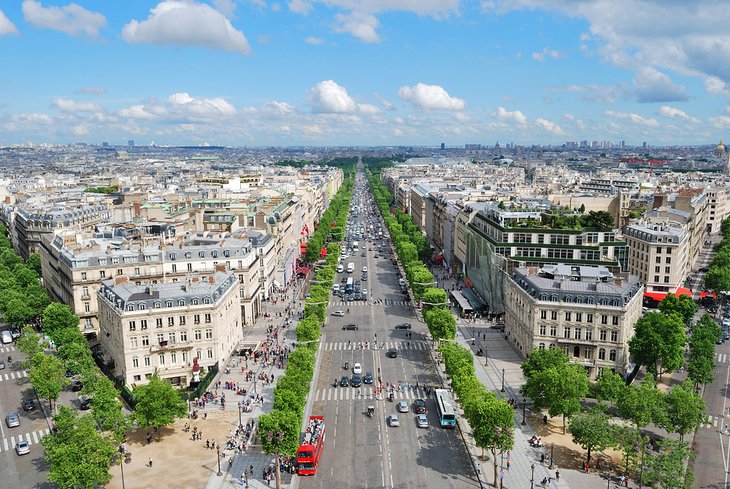
Brimming with fancy boutiques and dining terraces, the Champs-Élysées epitomizes the fashionable panache of Paris.
You'd never guess that the most monumental boulevard in Paris used to be a desolate swamp. The marshland was converted into an avenue by renowned landscape designer André Le Nôtre in the 17th century. Two centuries later, the city planner Baron Georges-Eugène Haussmann added the grey stone Mansard-roofed buildings that give the boulevard its classic Parisian look.
The Champs-Élysées is divided into two parts with the Rond-Point des Champs-Élysées as its intersection.
The lower part of the Champs-Élysées, bordering the Place de la Concorde , includes a spacious park, the Jardins des Champs-Élysées , and the Petit Palais fine arts museum. The upper part, extending to the Arc de Triomphe, is lined by luxury shops, hotels, restaurants, cafés, cinemas, and theaters. This bustling area draws many tourists and is a gathering place for Parisians.
The Champs-Élysées is famous for its prestigious establishments, such as Maison Ladurée (75 Avenue des Champs-Élysées), a pâtisserie boutique and tea salon that offers exquisite French pastries (macarons are the house specialty), and upscale designer boutiques like Tiffany & Co. (62 Avenue des Champs-Élysées), Louis-Vuitton (101 Avenue des Champs-Élysées), and Cartier (154 Avenue des Champs-Élysées).
For fine dining , the top choices are the legendary brasserie Fouquet's (99 Avenue des Champs-Élysées) and the swanky gastronomic restaurant L'Atelier de Joël Robuchon Étoile (133 Avenue des Champs-Élysées), which has one Michelin star.
Although the Champs-Élysées has an image of refinement, there are many affordable places that cater to tourists and students on a budget, such as Starbucks, Quick, Burger King, and McDonald's.
Address: Avenue des Champs-Elysées, 75008 Paris (Métro: Champs-Élysées Clemenceau station to visit the Jardins des Champs-Élysées and Petit Palais, Franklin d. Roosevelt station for Ladurée, George V station for the main shopping area).
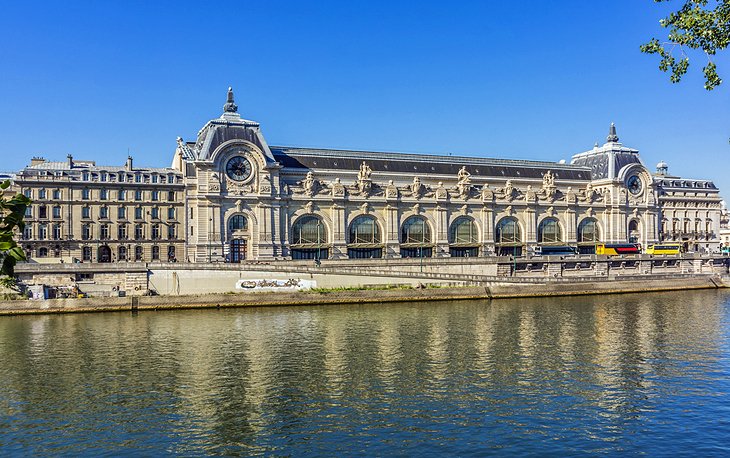
You haven't seen the best of French art until you visit the Musée d'Orsay . The Musée du Louvre may hold the most masterpieces of European painting, but the Musée d'Orsay focuses on works by celebrated French artists including Monet, Renoir, and Degas.
If you love Impressionist art , this is the place to go. The Musée d'Orsay displays a splendid collection of 19th- and 20th-century art (created from 1848 to 1914).
Although the museum's inventory begins with 19th-century Realist paintings and landscape paintings, the highlight of the museum is the Impressionism collection. Also on display are Post-Impressionist works by artists such as Pierre Bonnard, Paul Cézanne, and Vincent van Gogh, and bohemian artists like Henri de Toulouse-Lautrec.
Some of the museum's famous paintings include Claude Monet's The Magpie , Gare Saint-Lazare, Poppy Field , and Luncheon on the Grass ; Vincent van Gogh's self-portrait and Starry Night ; and Renoir's Dance at Moulin de la Galette, which depicts a festive party scene in Montmartre.
You may rent an audioguide to take a self-guided tour. The commentary (available in English and French) covers over 300 works.
The museum also has a bookstore/gift shop, two casual cafés, and a fine-dining restaurant, which is worth the splurge. Formerly the Hôtel d'Orsay (a luxury hotel within the original Gare d'Orsay) and listed as a Monument Historique , the Musée d'Orsay Restaurant features gilded ceilings and sparkling chandeliers.
On the square in front of the museum, there is a kiosk that sells sandwiches and falafel.
Address: Musée d'Orsay, Esplanade Valéry Giscard d'Estaing 75007 Paris (Métro: Musée d'Orsay, Assemblée Nationale, or Solférino station)
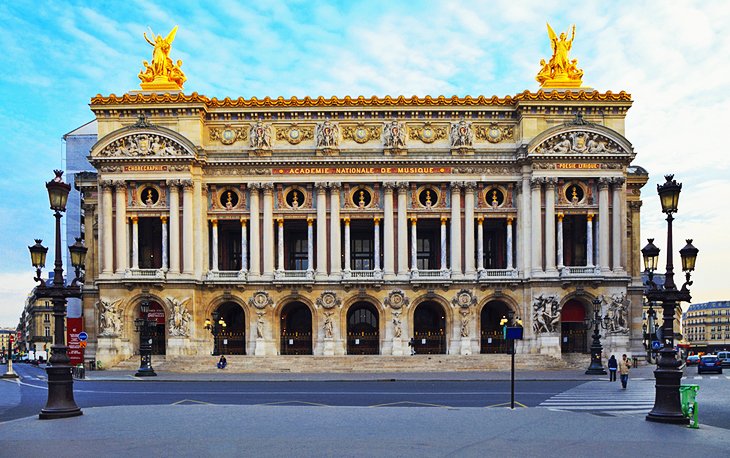
Commissioned by Napoleon III in 1860, the Palais Garnier Opera House was designed by Charles Garnier in an exuberant Baroque style. Garnier worked tirelessly on the project for over a decade, from 1862 to 1875. Today, this show-stopping landmark is a symbol of Napoleon's Imperial regime.
Upon entering the building, you are dazzled by the lavish 11,000-square-meter interior. Much of the building's space is dedicated to the main foyer with its fabulous Grand Escalier , marble entrance staircase, adorned by ornate gilded lamps, and the Salon du Glacier , a sumptuous Belle Époque hall decorated with mirrors, Corinthian columns painted gold, colorful mosaics, and music-themed ceiling paintings.
The horseshoe-shaped auditorium has an intimate feel, although it can accommodate 2,105 people in its plush velvet seats. Gilded balconies, an enormous crystal chandelier, and a Chagall ceiling painting add to the theater's marvelousness, creating the perfect dramatic backdrop for ballet, opera, and music performances.
The Opéra Garnier hosts a prestigious calendar of events in addition to galas. Attending a performance is one of the most exciting things to do in Paris at night. It's a wonderful way to see the building's interior while enjoying a glamorous evening. Another option is to visit (entry ticket required) on a self-guided tour or take a guided tour during the daytime.
Connoisseurs of fine dining will be delighted to discover CoCo, a chic restaurant within the Opera House (entrance is at 1 Place Jacques Rouché) that serves contemporary French cuisine prepared from seasonal ingredients. CoCo offers lunch and dinner daily, as well as weekend brunch (every Saturday and Sunday) featuring musical entertainment. The garden terrace is open Tuesday through Saturday during summertime. Reservations are recommended.
Address: Palais Garnier, Place de l'Opéra, 8 Rue Scribe (at Auber) 75009 Paris (Métro: Opéra, Chaussée d'Antin-La Fayette or Havre-Caumartin station)
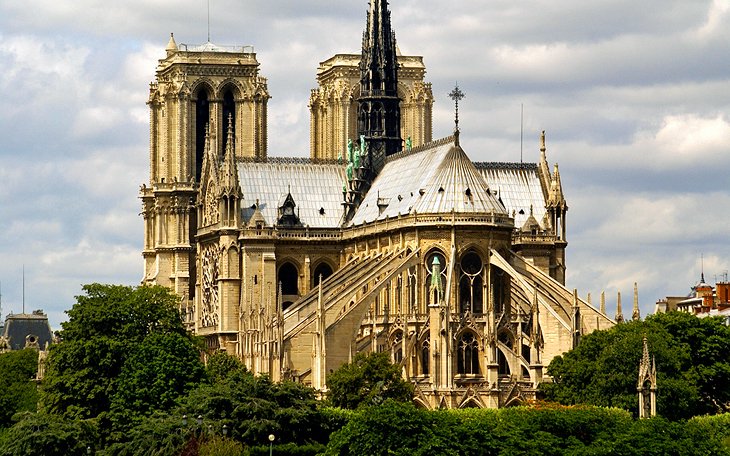
Despite the damage done by the 2019 fire, it is still worth seeing the Notre-Dame Cathedral. This awe-inspiring medieval monument stands at the heart of Paris on the Île-de-la-Cité, an island in the Seine River. To get here from the Latin Quarter , simply cross the Petit Pont bridge.
The Cathédrale Notre-Dame de Paris was founded in 1163 by King Louis IX (Saint Louis) and Bishop Maurice de Sully, and the construction took more than 150 years. The cathedral was first created in the Early Gothic style, while later additions (the west front and the nave) show the transition to High Gothic style.
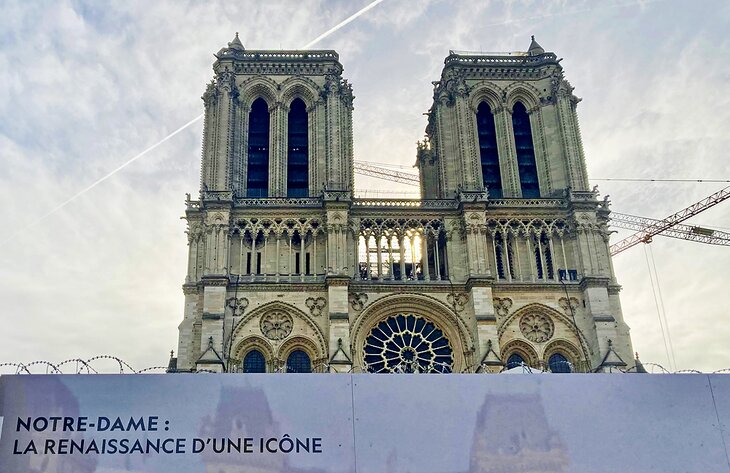
Note: A large fire in April of 2019 caused considerable damage to the cathedral: The medieval roof and the 19th-century spire collapsed. However, the monument was partly saved thanks to the work of hundreds of firefighters.
A project to repair the structure is underway. The city plans to rebuild the cathedral and restore it to its previous state. Restoration work is ongoing.
Currently, the interior of the cathedral (including the towers) and the space immediately in front of the cathedral (on the Parvis Notre-Dame) are closed to the public. A few steps away from the cathedral's facade, a section of the Parvis Notre-Dame (square) is now used for educational exhibits about the cathedral.
The Notre-Dame de Paris Cathedral anticipates reopening in December 2024. A project to redesign the landscaping around the cathedral is scheduled for completion in 2027.
Until the reopening, the Notre-Dame de Paris congregation will celebrate Mass at the Eglise Saint-Germain l'Auxerrois (2 Place du Louvre) in the 1st arrondissement.
Address: Cathédrale Notre-Dame de Paris, 6 Parvis Notre-Dame - Place Jean-Paul II, 75004 Paris (Métro: Cité or Saint-Michel Notre-Dame station)
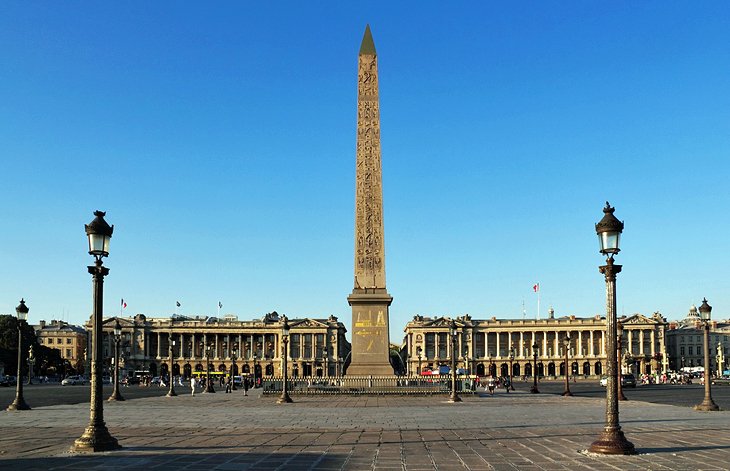
The Place de la Concorde stands at the heart of Paris both literally and figuratively. The square was created in 1772 by the architect of King Louis XV. During the French Revolution, the Place de la Concorde was the scene of state-ordered executions , including Louis XVI and Marie-Antoinette, among other victims of the guillotine. The square was also part of Napoleon's triumphal route.
One of the largest and most central squares in the city, the Place de la Concorde offers a sensational perspective of the city's landmarks. In one direction, you can admire the Arc de Triomphe and in the other, the Louvre, while the Eiffel Tower can be seen in the distance.
Two ornately decorated fountains and an Egyptian obelisk are found in the middle of the square. However, it's a bit of a hassle to get up close because you have to walk through heavy traffic. The Place de la Concorde is one of the busiest intersections in Paris.
Tip for Pedestrians : You will notice cars circulating the square at high speeds. French drivers don't always pay attention to pedestrians. Make sure to get out of the way of oncoming cars!
During summertime , the Place de la Concorde adopts a fairground ambiance, with a Ferris wheel gracing the square from June through August. The neighboring Jardin des Tuileries also has amusement park rides and fairground treats during summertime.
To arrive at the Place de la Concorde, walk from the Louvre through the Jardin des Tuileries or the Rue de Rivoli, or follow the Quai des Tuileries along the Seine River. Alternatively, you may take the Métro to Concorde station.
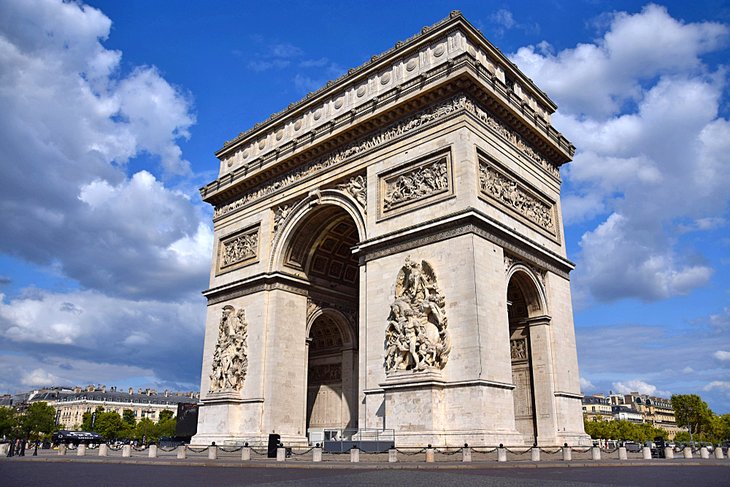
Nothing says capital city grandeur quite like a triumphal arch. Paris' Arc de Triomphe is dedicated to the soldiers who fought in the French armies of the Revolution and the Napoleonic Wars. Napoleon I commissioned the building of this mighty structure in 1806 but did not live to see its completion in 1836.
The monument was modeled after the Arch of Titus in Rome. The massive 50-meter-high arch features bas-reliefs with larger-than-life-size figures, which depict the departure, victories, and glorious return of the French armies.
Particularly noteworthy is the bas-relief by François Rude on the Champs-Elysées-facing side: Departure of the Volunteers of 1792 , also known as La Marseillaise , illustrating the troops led by the winged spirit of Liberty. On the inner surface of the arch are the names of more than 660 generals and over a hundred battles.
The Arc de Triomphe stands at the end of the Champs-Élysées, presiding over a circular intersection (the Place de l'Étoile).
From the top of the monument, a viewing terrace affords a panoramic outlook onto the 12 avenues that radiate from the Place de l'Étoile, including the route from the Avenue des Champs-Elysées to the Place de la Concorde and the Louvre. It's also possible to see all the way to La Défense, the hilltop neighborhood of Montmartre, and the Eiffel Tower.
At the foot of the Arc de Triomphe is the Tomb of the Unknown Soldier , dedicated in 1921 as a memorial to an anonymous soldier (symbol of the many other unknown soldiers who valiantly died for their country during World War One without ever receiving recognition).
The Flame of Remembrance was ignited at the Tomb of the Unknown Soldier on November 11th, 1923, and since that date has not ever been extinguished. Every evening at 6:30pm , a ritual takes place to rekindle the memorial flame at the tomb.
Throughout the year, events to honor national holidays are held at the Arc de Triomphe, including the November 11th (anniversary of the Armistice of 1918) ceremony commemorating those who perished in the war; the May 8th Fête de la Victoire (Victory Day) celebrating the end of WWII, and the liberation from Nazi occupation; as well as festivities for July 14th (Bastille Day).
Admission requires an entrance ticket. You may reserve a ticket in advance online. Free admission is included with the Paris Museum Pass (no reservations required). Guided tours are available.
For visitors with reduced mobility and young children, there is an elevator to reach the viewing terrace. Otherwise, you must take the stairs (284 steps).
Address: Arc de Triomphe, Place Charles de Gaulle, 75008 Paris (Métro: Charles de Gaulle-Étoile, Kléber or Argentine station)
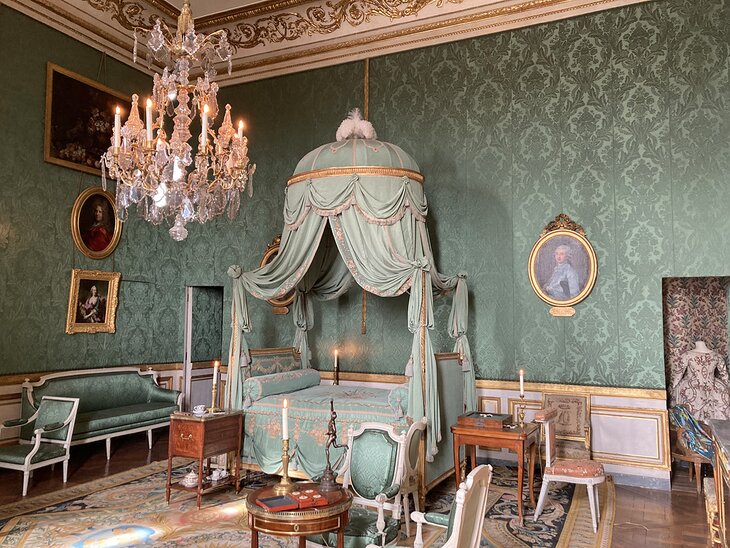
A fascinating glimpse of ancien régime (old regime) splendor awaits you at the Hôtel de la Marine . During the reign of Louis XV, this Neoclassical palace housed the apartments of the Intendants du Garde-Meuble de la Couronne (the King's Furniture Storage Intendants). The intendant had an important job: procuring and maintaining the furnishings for the king's elaborate palaces.
The Hôtel de la Marine opened to the public in 2021 after several years of painstaking restoration work. This monument is one of the newest tourist attractions in Paris.
You enter the Hôtel de la Marine through a cobblestone courtyard off the Place de la Concorde. Then walk up the massive marble staircase and into the reception rooms, where you feel like you have stepped back in time. The interior decor has been restored to a state of perfect preservation.
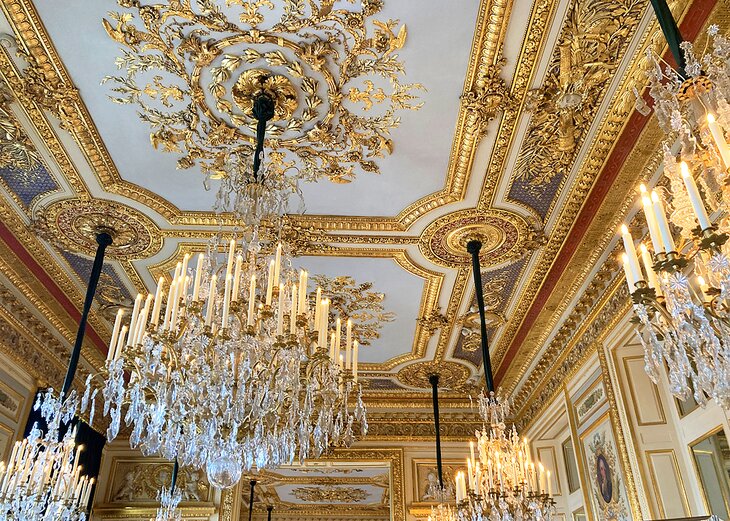
Adorned with gilded moldings and crystal chandeliers, the Salons d'Honneur salons resemble the Hall of Mirrors at Versailles . Other rooms in the Intendant's Apartments reveal the refinement of the Age of Enlightenment.
During this period, aristocratic residences were lavishly decorated with exquisite furnishings, wallpaper, curtains, and paintings. You'll also see precious antiques such as a desk created by Jean-Henri Riesener , a renowned 18th-century cabinetmaker.
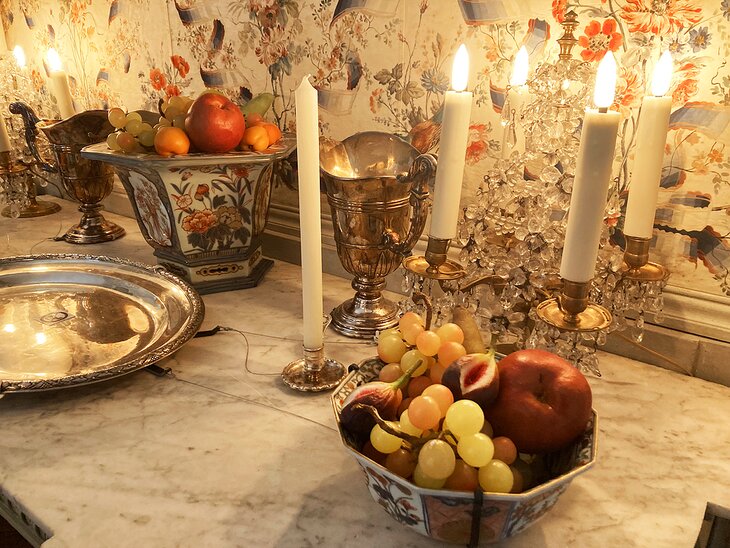
The dining room of the Intendant's Apartments, with its floral-patterned porcelain dinnerware, appears ready to welcome guests. On the guided tour, you will learn that the host placed servings of sugar (a precious commodity at the time) on the table to show off his wealth, along with bread, oysters, and bowls of fresh apricots, grapes, figs, and apples.
Be sure to step out onto the Hôtel de la Marine's Loggia , a colonnaded balcony that overlooks the Place de la Concorde. From this privileged spot, you can admire views of the Eiffel Tower, the gold-domed Hôtel National des Invalides, and the Jardins des Champs-Élysées.
Historical Notes : The Hôtel de la Marine is found on the Place de la Concorde, the square created in 1748 to display an equestrian statue of Louis XV and originally called Place Louis XV. During the French Revolution, the statue of the king was removed and the Crown jewels were stolen from the Hôtel de la Marine. In 1795, the square was renamed the "Place de la Concorde."
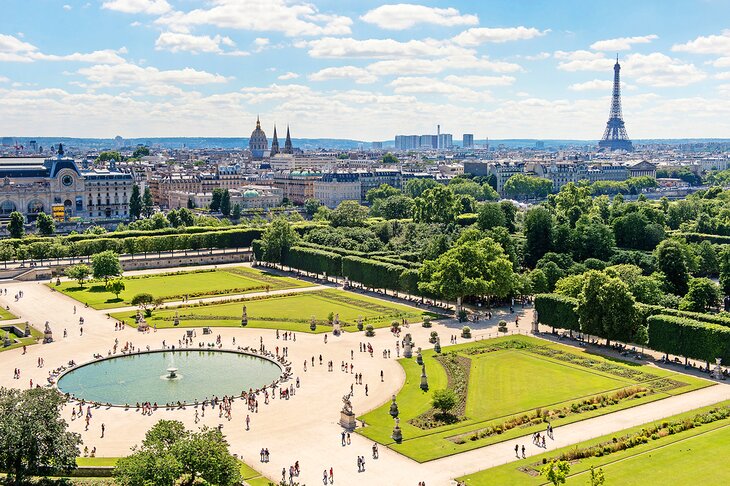
Treat yourself to some time relaxing and wandering the beautiful Jardin des Tuileries. After visiting the Hôtel de la Marine, the Place de la Concorde, or the Louvre Museum, you should spend some time wandering the nearby Jardin des Tuileries. This French formal garden was designed by celebrated landscape architect André Le Nôtre in the 17th century.
Today the garden offers an escape from the hustle and bustle in central Paris, but the ambiance was not always so idyllic. This garden is the site of the Palais des Tuileries where Louis XVI and Marie-Antoinette were essentially imprisoned during the French Revolution. The palace was destroyed by a fire in the 19th century; all that remains is the gorgeous garden.
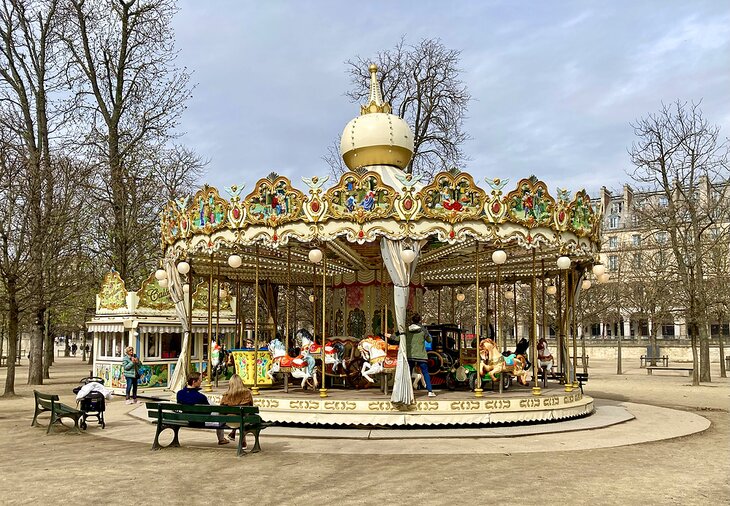
The leafy grounds feature perfectly manicured trees, statues, and pathways. You can relax on the wooden park benches or on individual green chairs which may be moved around. Find the spot that appeals to you and lounge there for a bit, while listening to birds chirp. You'll see locals having a picnic lunch or reading a book in the sunshine.
For snacks and quick meals, head to La Terrasse de Pomone , a kiosk where you can order crepes and sandwiches to-go or for dining at the outdoor tables; the Petit Plisson kiosk that sells quiches and sandwiches for dining at shaded tables; or Petit Farmers , a purveyor of artisanal ice cream.
The park's two café-restaurants, Le Pavillon des Tuileries and the Café des Marronniers offer casual meals in a tranquil setting beneath the leafy chestnut trees.
Tips : Check the opening hours of the café-restaurants and food kiosks as the hours change during different seasons. You will only find the Petit Farmers ice cream truck & stand at the Jardin des Tuileries from April through October.
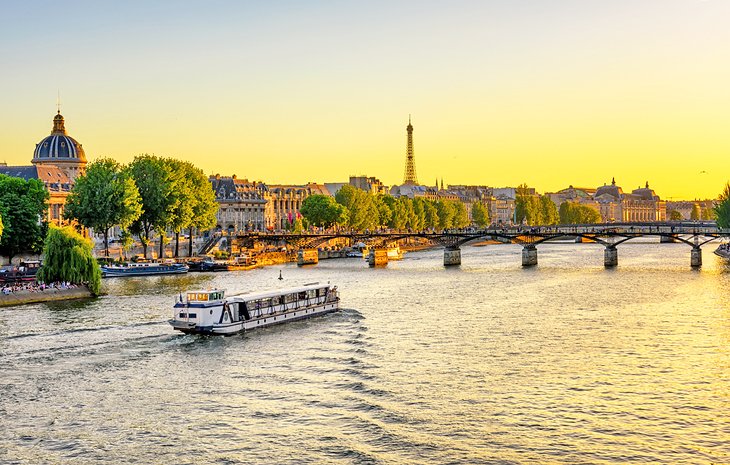
Soak up the scenery of Paris on a Seine River cruise. You'll have a chance to see the sights from a different perspective. The Seine River bridges, the Eiffel Tower, the Notre-Dame Cathedral, and the Louvre Museum look stunning from the viewpoint of a riverboat.
While a daytime cruise allows you to appreciate the glory of the monuments brightened by sunshine, the most romantic experience is an evening cruise. After sunset, the city's landmarks are illuminated, which creates a special effect, and somehow the city seems more magical.
For a cruise that includes dinner, try the Paris Seine River Dinner Cruise with Live Music by Bateaux Mouches. This luxurious riverboat cruise departs at the Pont de l'Alma (a short walk from the Eiffel Tower) and treats you to a romantic four-course meal. If you prefer a more casual boat ride, a good choice is the Seine River Direct Access Guided Cruise by Vedettes de Paris which includes commentary from a knowledgeable guide and breakfast or lunch.
Gourmands will be tempted by the Ducasse sur Seine restaurant boat, which departs from Port Debilly. This dining cruise offers a haute cuisine experience. Options include a lunch (two, three, or four-course meal) or dinner (four or five-course meal). Menus focus on contemporary-style French dishes prepared from seasonal ingredients.
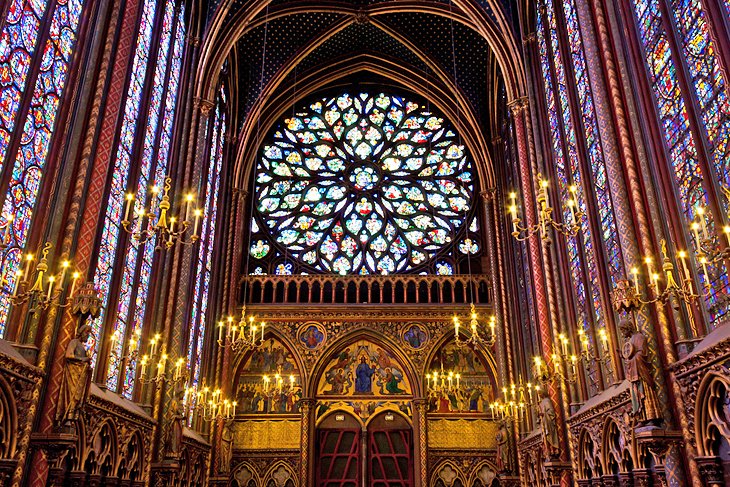
Sainte-Chapelle is considered a rare jewel among medieval houses of worship and is certainly one of the most exquisite churches in Paris . The ravishing 13th-century chapel is tucked away on the Île-de-la-Cité , just a few blocks (about a 10-minute walk) from the Notre-Dame Cathedral.
This masterpiece of Rayonnant Gothic architecture was built from 1242 to 1248 for King Louis IX (Saint Louis) to house the precious relics he had acquired from the Byzantine Emperor. The altar displays a relic of the Crown of Thorns.
An expanse of 13th-century stained-glass windows sets this chapel apart from any other church in the world. The windows' beauty and brilliance are best appreciated on a sunny day and in the morning. If possible, try to schedule your visit accordingly.
The chapel's over 1,000 stained-glass windows (covering 600 square meters) depict scenes from the bible, both Old Testament and New Testament stories. The colors and light symbolize divinity and the Heavenly Jerusalem.
Only used for church services on rare occasions, Sainte-Chapelle is open to the public as a museum (entrance tickets are required). For an additional fee, audioguides (available in French, English, German, Italian, Spanish, and Japanese) provide one hour of commentary to help visitors appreciate the art, architecture, and history of Sainte-Chapelle.
To truly experience the serene ambiance of Sainte-Chapelle, attend one of the classical music concerts held here. In the iridescent glow of the sanctuary, performances of Baroque chamber music, sacred music, or Vivaldi string quartets have a sublime quality. A regular program of concerts is held at Sainte-Chapelle year-round, with events scheduled several times a week.
Sainte-Chapelle is located in the Palais de la Cité. To find the chapel, enter the iron gate of the Palais de Justice and walk through the inner courtyard.
Another attraction nearby is La Conciergerie (tourists may purchase combined entry tickets), the prison where Marie-Antoinette was detained during the French Revolution.
Address: Sainte-Chapelle, 8 Boulevard du Palais, 75001 Paris (Métro: Cité, Saint-Michel Notre-Dame or Châtelet station)
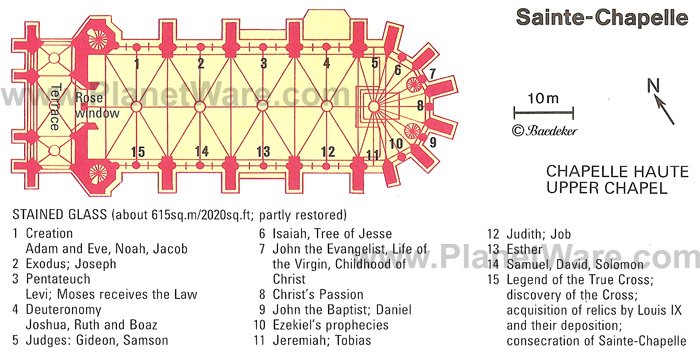
A visit to the City of Light is not complete without spending time on the sidewalk terrace or bustling interior of a famous café. It's the ultimate Parisian people-watching scene and a chance to imagine the historic rendezvous that occurred here.
To discover the legendary Paris cafés, the best place to start is the Boulevard Saint-Germain-des-Prés in the 6th arrondissement. This broad tree-lined boulevard features an enticing array of storefronts: designer fashion boutiques, prestigious cafés, and old-fashioned brasseries.
The most celebrated cafés are the Café de Flore (172 Boulevard Saint-Germain-des-Prés), which was the meeting place of Jean-Paul Sartre and Simone de Beauvoir, and Les Deux Magots (6 Place Saint-Germain-des-Prés), once the haunt of poets, authors, and artists, including Arthur Rimbaud, Paul Verlaine, James Joyce, Pablo Picasso, and Ernest Hemingway.
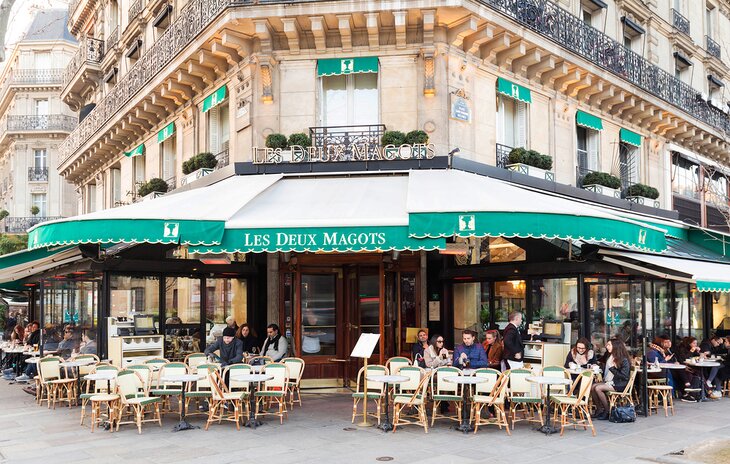
Across from Les Deux Magots is the Eglise Saint-Germain-des-Prés , one of the most important churches in Paris .
At both Café de Flore and Les Deux Magots, you will get the classic Parisian café experience, complete with waiters wearing bow ties. Although the waiters have a reputation for their brusque service, their formality adds to the authentic ambiance.
The Saint-Germain-des-Prés area also has excellent pâtisserie boutiques, boulangeries, and chocolate shops such as the Ladurée tea salon (21 Rue Bonaparte), the Maison Le Roux Chocolatier & Caramélier (1 Rue de Bourbon le Château), and Debauve & Gallais (30 Rue des Saints-Pères), a boutique founded in 1779 that supplied Marie-Antoinette with chocolates.
Join the Paris Sweet Tooth Stroll small-group tour to sample the neighborhood's finest sweet treats.
The brasseries of Boulevard du Montparnasse were also frequented by artists and writers during the early 20th century. Le Dôme in Montparnasse is a Paris institution (108 Boulevard du Montparnasse) that has attracted luminaries including Sartre, Simone de Beauvoir, and Picasso. In its glittering Art Deco dining room, the restaurant serves exceptional seafood.
Another atmospheric French brasserie with a mythical past, La Coupole (102 Boulevard du Montparnasse) has, since the 1920s, been visited by artists such as André Derain, Fernand Léger, Man Ray, Pablo Picasso, and Marc Chagall as well as the novelist Albert Camus and the philosopher Jean-Paul Sartre.
La Rotonde Montparnasse (105 Boulevard du Montparnasse) has been a gathering place for painters and writers since 1911 and still attracts cinematographers and artists today.
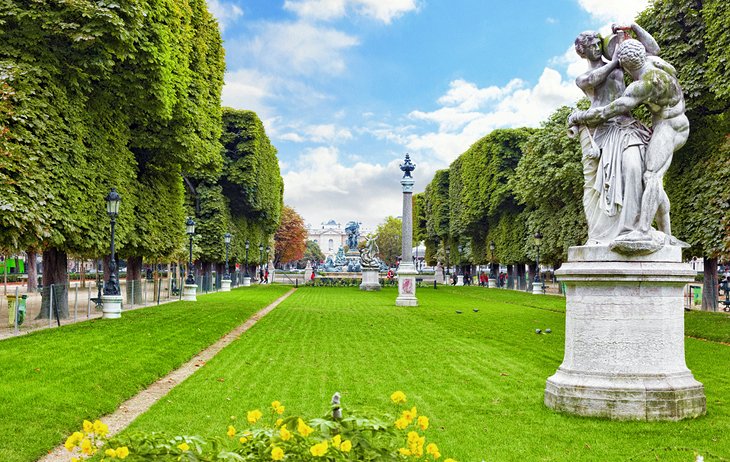
The Jardin du Luxembourg is the best-known park in Paris after the Tuileries. The 25-hectare park features a formal French garden, similar to the Jardin des Tuileries, as well as an English garden with shady groves of overgrown trees.
On a nice day, it's fun to grab a baguette sandwich at a nearby bakery and then find a chair in front of the garden's duck pond. This is the Paris version of going to the beach when the weather is pleasant. You'll notice many local residents taking a lunch break or simply soaking up some sunshine at the park. It's an especially popular spot among students of the Latin Quarter.
You can also visit a rose garden, apiary, Orangerie (orangery), and greenhouses filled with exotic orchids, as well as an orchard where heirloom varieties of apples flourish.
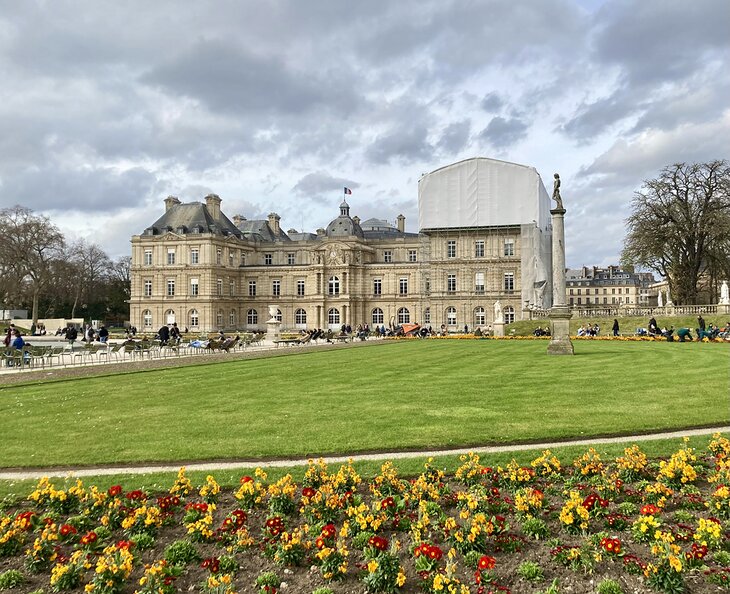
Artistic treasures are found throughout the gardens, such as the picturesque 17th-century Fontaine Médicis , a fountain basin nestled under trees opposite the east front of the Palais du Luxembourg , which today is used by the French state as the seat of the Senate.
Steps away from the Fontaine Médicis is La Terrasse de Madame , a little café-restaurant in a charming setting. You may dine at outdoor tables beneath the leafy chestnut trees. The menu includes coffee and croissants for breakfast and bistro meals for lunch, such as steak, Croque Monsieur (sandwiches), quiche, grilled fish, charcuterie, and salads. Also on the menu are traditional French desserts like profiteroles and crème brûlée .
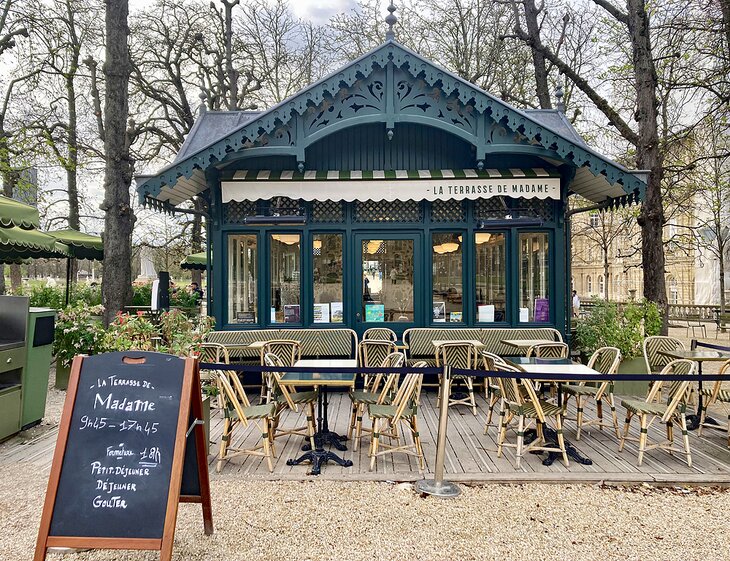
Children love the playground, which features swings, slides, a sandpit, a games area, and pony rides. A favorite activity for the youngest visitors at the Jardin du Luxembourg is steering miniature sailboats around in the octagonal pool (the boats can be hired at a kiosk by the pond).
For French-speaking kids, watching a puppet show at the Théâtre des Marionnettes is not to be missed. The Théâtre des Marionnettes is a modern venue, in the southwest area of the park near the tennis courts, that accommodates an audience of up to 275 children and adults (which makes it the largest puppet theater in France).
Address: Jardin du Luxembourg, Rue de Vaugirard/Rue de Médicis, 75006 Paris (Métro: Luxembourg or Odéon station)
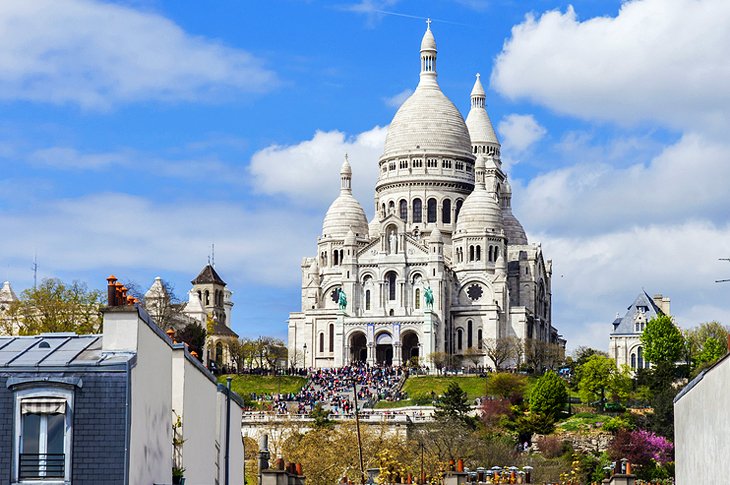
Sitting at the highest point in Paris like an ornamental decoration, the Basilique du Sacré-Coeur de Montmartre has a special aura. Its alabaster facade blends Romanesque and Byzantine styles, and from far away, it looks like a wedding cake (which is its nickname).
If you walk to the Sacré-Coeur Basilica from the Métro station, you must walk up the Esplanade, a staircase of over 200 steps, to arrive at the Basilica.
Inside the Basilica, the striking mosaic of Christ with a flaming heart gives the sanctuary an emotional and spiritual intensity, fitting for a church that was created as a symbol of hope after the Franco-Prussian War. In keeping with the somber ambiance, the Basilica's sanctuary is quite dark except for a plethora of flickering candles.
The atmosphere outside the church is quite a contrast, with Parisian joie de vivre in full swing. Locals like to hang out on the grass lawns of the Esplanade while listening to street musicians. You'll see tourists taking selfies, couples embracing, and kids playing on the grass. Below the Esplanade is an old-fashioned carousel, adding to the sense of festivity.
You can spend time on the terrace in front of the Basilica admiring the views of Paris or climb (300 steps) up to the Basilica's Dome for an even higher perspective with unobstructed panoramas. Admission to the Dome requires an entrance fee, but you may visit the Basilica free of charge .
After visiting the Sacré-Coeur, be sure to explore the enchanting neighborhood of Montmartre . This medieval country village (once considered outside of the city) has been incorporated into the city of Paris as the 18th arrondissement.
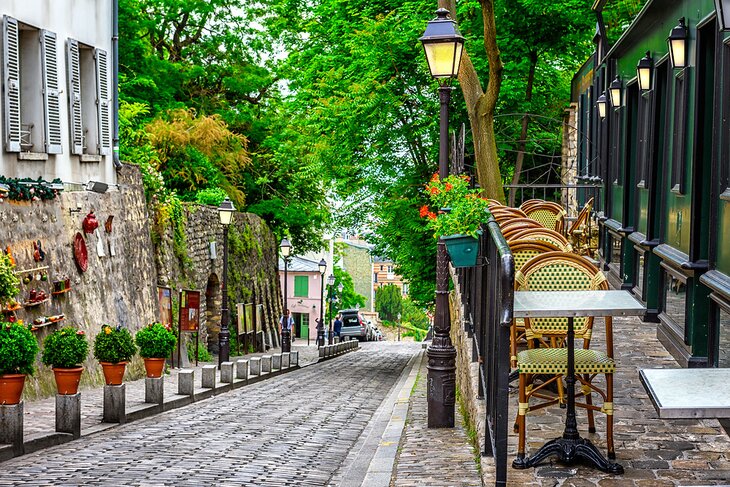
Montmartre exudes old-fashioned charm along with an avant-garde edge. Winding cobblestone streets and pedestrian staircases lead to small locally owned boutiques and restaurants, art galleries that evoke the quarter's bohemian past, and quiet squares filled with outdoor cafés .
During the Belle Époque, the village of Montmartre began to attract artists such as Henri de Toulouse-Lautrec and Edgar Degas. The bohemian creative spirit of Montmartre is still found here, especially around the Place du Tertre and the Carré Roland Dorgelès .
Montmartre has several excellent art museums, where you can admire the creations of artists who resided here in the late 19th and early 20th century (the Belle Époque). During that era, the quarter was famous for its cabarets and artists' studios.
The Musée de Montmartre (12 Rue Cortot) occupies a historic house where Auguste Renoir, Raoul Dufy, Suzanne Valadon, and other artists once lived and worked. Tucked away within the museum's gardens, you'll find the Café Renoir , which features outdoor seating in the delightful space where Renoir painted several masterpieces.
If you are intrigued by Surrealist art, be sure to visit the Dalí Paris museum (11 Rue Poulbot). This innovative museum displays more than 300 works created by Salvador Dalí. The exhibits are presented in a way that reveals the symbols and motifs used in his artworks.
Address: Basilique du Sacré-Coeur, 35 Rue du Chevalier-de-la-Barre, 75018 Paris (Métro: Abbesses)
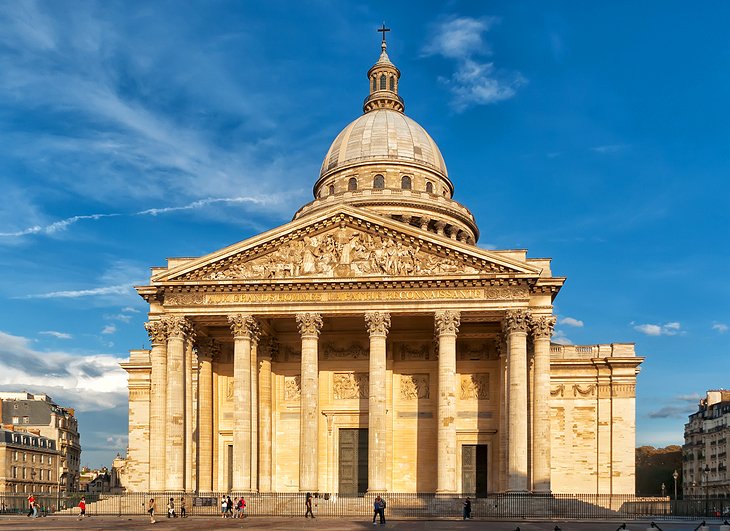
The Panthéon is the national mausoleum of France's greatest citizens. You get a sense of the important heritage just by glancing at this grand monument. The colonnaded facade and enormous dome were modeled after the ancient Pantheon in Rome.
The architecture of the Panthéon marks a clear break from the fanciful Rococo style of the Louis XV era and instead presents a simpler and more somber Neoclassical style. The inscription on the Panthéon's facade reads " Aux Grands Hommes La Patrie Reconnaissante " (" To the Great Men Recognized by Their Country ").
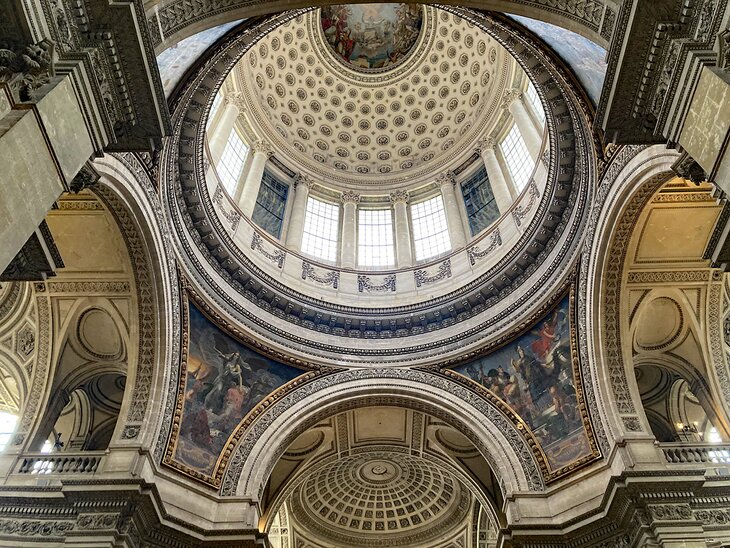
Many famous men (75 in total) are buried here, including philosophers Voltaire, Jean-Jacques Rousseau, and René Descartes; and the writers Victor Hugo, Alexandre Dumas, Émile Zola, and André Malraux. Although the monument was originally dedicated exclusively to France's male citizens, this has changed recently.
Since 1995, several of France's most esteemed female citizens have been buried in the Panthéon including the physicist Marie Curie, a two-time winner of the Nobel Prize. Five other women are buried at the Panthéon. In November 2021, Josephine Baker (the famous Black American expatriate dancer and singer) became the sixth woman to receive the honor of being inducted into the Panthéon.
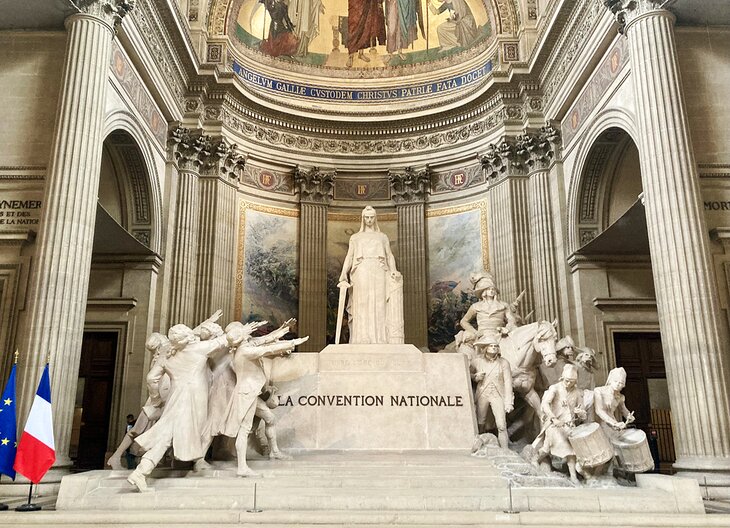
When you step inside the Neoclassical sanctuary, you will be awed by the spacious domed interior, the floor-to-ceiling paintings that depict scenes of Christian saints, and the enormous sculpture that celebrates French Revolution deputies ( La Convention Nationale ).
Beneath the monumental rotunda is an unusual centerpiece: a science experiment rather than a work of art. Foucault's pendulum , created by French physicist Léon Foucault, was installed in 1851 to demonstrate his theory that the Earth rotates. The brass pendulum hangs from the dome on a steel wire and constantly oscillates in a circular trajectory.
To find the famous citizen's monuments and tombs, you will need a map (available on-site). The underground crypt is arranged in a geometric fashion, but it is easy to get lost.
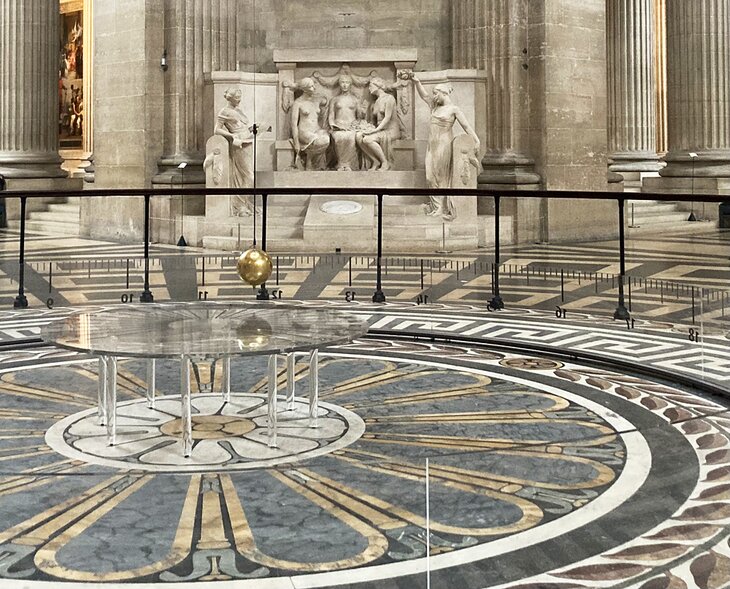
Entrance to the Panthéon requires an admission fee, unless you have a Paris Museum Pass and except for the first Sunday of every month from November through March.
From April through September (for an additional entrance fee), you may ascend to the Panthéon's dome, where a colonnaded balcony provides a sensational view of the city's landmarks. You can see the Notre-Dame Cathedral, the Louvre Museum, the Eiffel Tower, and the Sacré-Coeur Basilica in the hilltop neighborhood of Montmartre.
Address: Panthéon, Place du Panthéon, 75005 Paris (Métro: Luxembourg station)
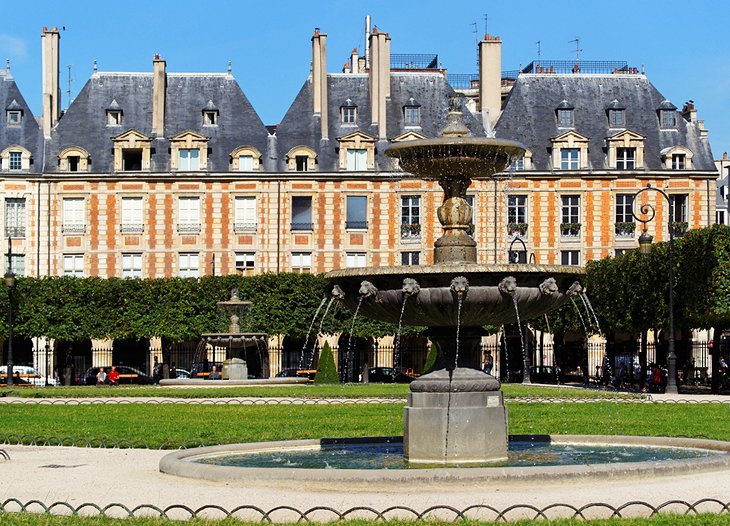
In the charming Marais district, the Place des Vosges is Paris' oldest public square. With its uniform red-brick architecture, this elegant square provided a model for other squares such as Place Vendôme and Place de la Concorde.
The Place des Vosges was constructed between 1605 and 1612 (called Place Royale at the time) for King Henri IV. The buildings originally housed aristocratic residences.
The Place Royale offered a splendid setting for festive occasions in the 17th century, such as tournaments, state receptions, and court weddings. It was also a favorite spot for duels, in spite of Cardinal Richelieu's ban on dueling. The celebrated courtesan of Louis XIII's reign lived at number 11, and the future Madame de Sévigné was born in 1626 at number 1 on the square.
Victor Hugo rented an apartment at number 6 on the Place Royale between 1832 and 1848. Today this apartment is a museum, the Maison de Victor Hugo (6 Place des Vosges) which is devoted to educating visitors about the life and work of Victor Hugo.
The Place des Vosges is at the heart of Le Marais, a medieval quarter with narrow cobblestone streets, grand Renaissance palaces, and hôtels particuliers (mansions) of the 16th and 17th centuries. Several of these stately old buildings have been converted into museums.
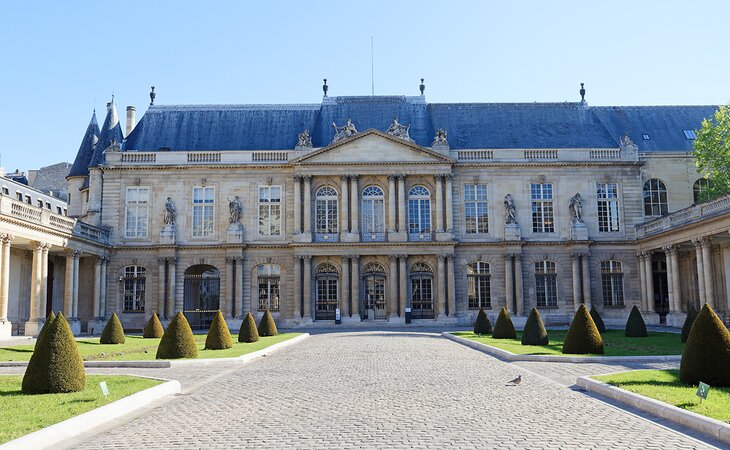
A fascinating glimpse of France's history awaits you at the Musée des Archives Nationales (Museum of the National Archives) in the 17th-century Hôtel de Soubise (60 Rue des Francs-Bourgeois). The museum presents historical exhibits including the Edict of Nantes, French Revolution objects, Marie-Antoinette's last testament, and a letter written to Napoleon.
The most important museum of the quarter is the Musée Carnavalet - Histoire de Paris. This recently renovated museum illustrates the history of Paris from antiquity through the French Revolution and the Belle Époque until the present day.
In the Hôtel Salé (a 17th-century aristocratic mansion), the Musée National Picasso-Paris (5 Rue de Thorigny) wows you with its incredibly extensive collection (over 5,000 pieces) of Picasso's artwork, including some of his most iconic masterpieces.
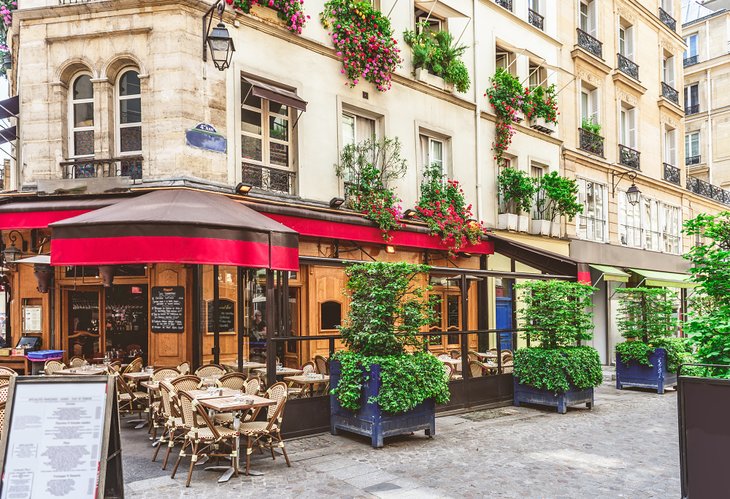
More than just an open-air museum filled with historic monuments, Le Marais has become a trendy quarter full of fashion boutiques, cute cafés, and unique shops. Spend some time wandering the Rue de Sévigné and its cross street, the Rue des Francs Bourgeois . This area brims with youthful energy and is a fun place to visit for a stroll or a coffee break.
Another interesting fact about Le Marais is that it has a significant Jewish community. The Musée d'Art et d'Histoire du Judaïsme (71 Rue du Temple) presents the 2,000-year history of France's Jewish communities, along with educational programs about Jewish culture and exhibitions of artwork by Jewish artists such as Chagall and Modigliani.
Nearby, the Jardin Anne Frank offers the tranquility of a secluded garden. This quiet, leafy green space features benches, shady trees, and an orchard. One of the chestnut trees in the garden was grafted from a tree that Anne Frank could see from the window of the annex where she lived in Amsterdam.
For those in search of a refined Parisian experience, the Mariage Frères (30 Rue du Bourg-Tibourg) is the place to go. This tea salon serves its aromatic tea with savory and sweet delicacies in a French colonial-style dining room; its adjoining shop sells a wide selection of scented teas in distinctive tins.
Many tourists wait in line to try the authentic falafel at L'As du Fallafel (34 Rue des Rosiers), considered one of the best Middle Eastern restaurants in Paris. This area has several kosher restaurants and kosher bakeries.
Tip : Keep in mind that L'As du Fallafel and other Jewish-owned shops in the Marais are closed on Shabbat (Friday evening and Saturday during the daytime).
Address: Place des Vosges, 75004 Paris (Métro: Saint-Paul or Bastille station)
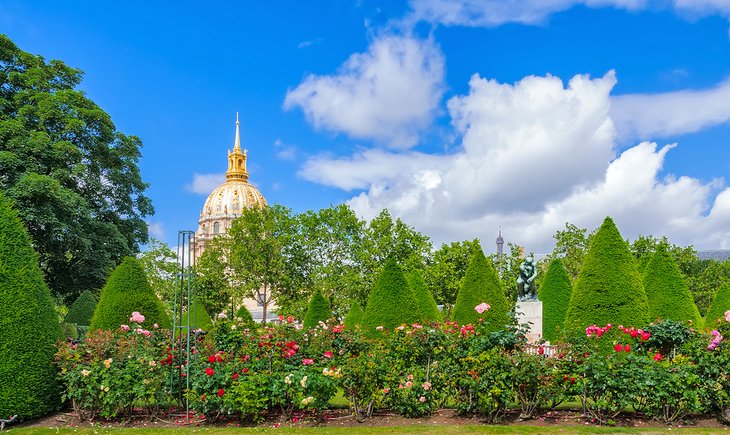
The Musée Rodin is a hidden gem in the posh 7th arrondissement. This peaceful haven of refinement occupies the Hôtel Biron , an 18th-century mansion where sculptor Auguste Rodin lived and worked for many years. The property includes a seven-acre Sculpture Garden that blooms with flowers throughout the year.
In 1908, Auguste Rodin began to rent several rooms on the ground floor of the Hôtel Biron to use as an atelier. Rodin later took over the entire Hôtel Biron, which became his place of residence for the rest of his life. In 1916, Rodin donated his artworks and collection of antiquities to the French state, and the museum was established soon thereafter.
The Musée Rodin displays a remarkable assortment of Rodin's sculptures, as well as the works of Camille Claudel. Rodin masterpieces presented in the Hôtel Biron include Danaïd , an expressive marble sculpture depicting a mythological character (created in 1890); The Age of Bronze (created in 1877); The Cathedral , a stone sculpture of two intertwined hands (created in 1908); and The Kiss , one of Rodin's most sensual works (created around 1882).
Several monumental Rodin sculptures preside over various corners of the Sculpture Garden. The Thinker , Rodin's most iconic work of art , sits on a pedestal overlooking the perfectly manicured formal garden. The expressive Monument to Balzac stands in a shady spot beneath leafy trees, while a bronze statue of Adam is sheltered behind dense shrubbery.
Adding to the romance of the garden are the park benches and the café-restaurant, L'Augustine , where you may relax on an outdoor terrace. The café-restaurant also has a casual indoor dining space. Here you can savor a classic French meal, complete with dessert supplied by the renowned Maison Lenôtre pâtisserie.
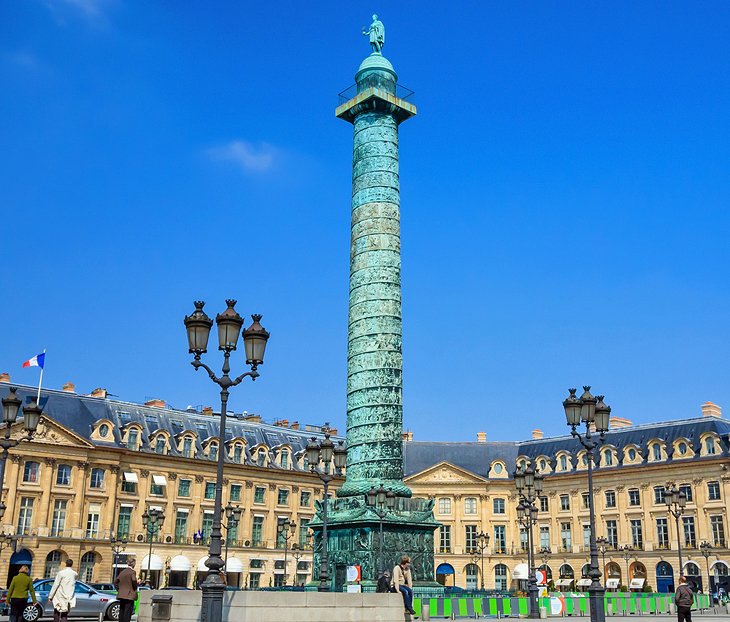
This graceful 17th-century square was designed by Jules Hardouin-Mansart , one of the leading architects of Le Grand Siècle (during the reign of Louis XIV). Originally, the square was called Place Louis le Grand and was intended to house royal establishments.
The charm of the Place Vendôme is that it has retained the consistency of the overall design, which combines regal ostentation with civic simplicity. Following careful restoration in the early '90s, it has been restored in all its splendor.
The square is known for its upscale jewelry boutiques including Boucheron, Chaumet, Van Cleef & Arpels, and Cartier. Another luxury establishment here is the Ritz Hotel , which was frequented by Ernest Hemingway, Scott Fitzgerald, and Gertrude Stein.
Coco Chanel made the Ritz Paris her home for 34 years; she decorated her suite in her signature style with velvet-upholstered sofas, lacquered furniture, and gilded mirrors. The Ritz Paris still has a suite named after Coco Chanel that exemplifies her vision of Parisian chic.
At the center of the Place Vendôme stands a landmark of historic importance, the Colonne de la Grande Armée (replacing a statue of Louis XIV that was removed in 1792). Built between 1806 and 1810, the 42-meter-high column is dedicated to Napoleon and his Grande Armée (army) who fought heroically and victoriously in the Battle of Austerlitz (in December 1805).
The column's facade is crafted from bronze plaques embossed with 108 spiraling bas-relief friezes (similar to Trajan's Column in Rome), which tell the story of the glorious events that took place during Napoleon's campaign of 1805.
Address: Place Vendôme, 75001 Paris (Métro: Tuileries or Opéra station)
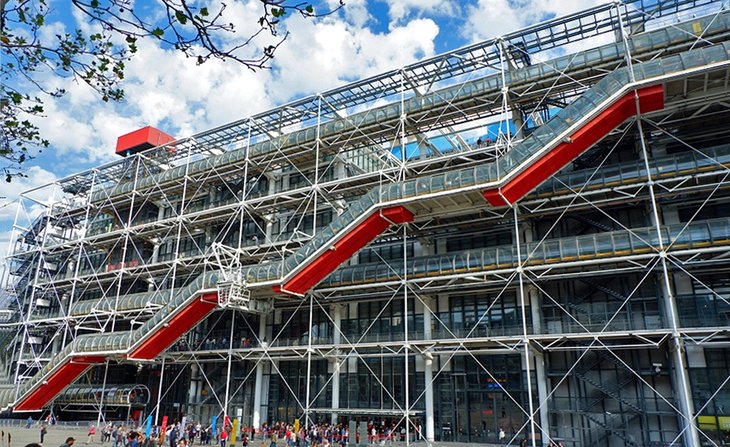
In the charming Le Marais quarter, the Centre Pompidou is a cultural center devoted to modern art. The building itself features shocking modern architecture, sometimes described as an "inside out" design because the architectural details of staircases and elevators appear on the exterior.
The main attraction of the Centre Pompidou is the Musée National d'Art Moderne (National Museum of Modern Art), which displays iconic works of art chosen from an extensive collection of over 100,000 pieces. The collection focuses on contemporary art created from 1905 to the present.
The collection covers all the movements of modern art, beginning with the Post-Impressionist "Fauves" and "Les Nabis" movements (André Derain, Raoul Dufy, Henri Matisse, Pierre Bonnard, and Marc Chagall) and continuing with the famous movement of Cubism (Pablo Picasso, Georges Braque, Fernand Léger, and Robert Delaunay).
Each room highlights a specific time period or artistic movements such as Expressionism, Constructivism (Paul Klee and Piet Mondrian), Surrealism (Salvador Dalí, Max Ernst, René Magritte, and André Masson), Abstract Expressionism (Mark Rothko, Nicolas de Staël, Hans Hartung, and Serge Poliakoff), Informal Art (Jean Dubuffet), New Realism, and Pop Art (Andy Warhol, Claes Oldenburg).
Several masterpieces of the collection are not to be missed : Avec l'Arc Noir by Wassily Kandinsky, Manège de Cochons by Robert Delaunay, Portrait de la Journaliste Sylvia von Harden by Otto Dix, The Frame by Frida Kahlo, Les Mariés de la Tour Eiffel by Marc Chagall, La Blouse Roumaine by Henri Matisse, New York City by Piet Mondrian, and Les Loisirs-Hommage à Louis David by Fernand Léger.
The center has two bookstores, a casual café, and a boutique that sells gift items inspired by contemporary art.
For a special dining experience, head to the Centre Pompidou's restaurant on the museum's top floor. Restaurant Georges features floor-to-ceiling windows with spectacular panoramic views of the Paris cityscape. Tables on the terrace look out directly onto the Notre-Dame Cathedral, the Eiffel Tower, and Montmartre.
Address: Centre Pompidou, Place Georges-Pompidou, 75004 Paris (Métro: Rambuteau, Hôtel de Ville, Châtelet or Rambuteau station)
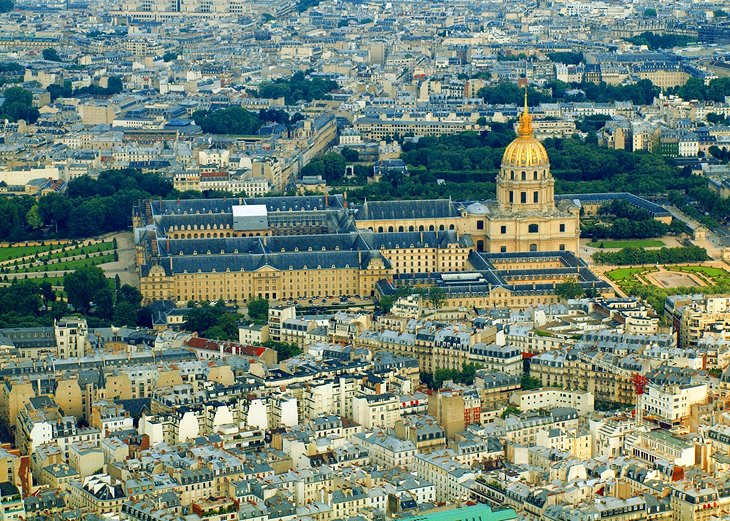
Louis XIV founded the Hôtel Royal des Invalides in the late 17th century as a home for disabled soldiers. The building was constructed between 1671 and 1676 under the direction of the architect Libéral Bruant and centered on the Eglise Saint-Louis-des-Invalides, which was later redesigned by the architect Jules Hardouin-Mansart in 1706.
Today, the Hôtel National des Invalides still has a hospital (Institution Nationale des Invalides) that provides medical care for disabled veterans.
The monument also includes several tourist attractions: three museums and two historic churches. You could easily spend hours here, and luckily the site has excellent amenities: a café-restaurant, the Angelina tearoom (famous for its hot chocolate and pastries) in a tree-shaded courtyard, and a bookstore/gift shop.
Founded in 1794, the Musée de l'Armée (Army Museum) presents a large collection of military equipment and uniforms, weapons, prints, and armor from various historical periods. The museum covers the military history of France from the 13th century (the Crusades) to the 17th century. There are also paintings of Napoleon and well-known generals, as well as maps that depict the French campaigns.
The Musée de l'Ordre de la Libération honors the soldiers who fought for the liberation of France during the Second World War, from 1940 to 1945. This museum also educates visitors about the deportation of Jews from France, the Resistance, and life in France during the war.
The military strategy of the 17th century comes to life at the Musée des Plans-Reliefs (Museum of Relief Maps). The museum displays 97 detailed (1 to 600 scale) relief maps of France's fortified towns (citadels) and fortresses that date from 1668 to 1871. Louis XIV's Minister of War (and later ministers) used the maps for military planning purposes.
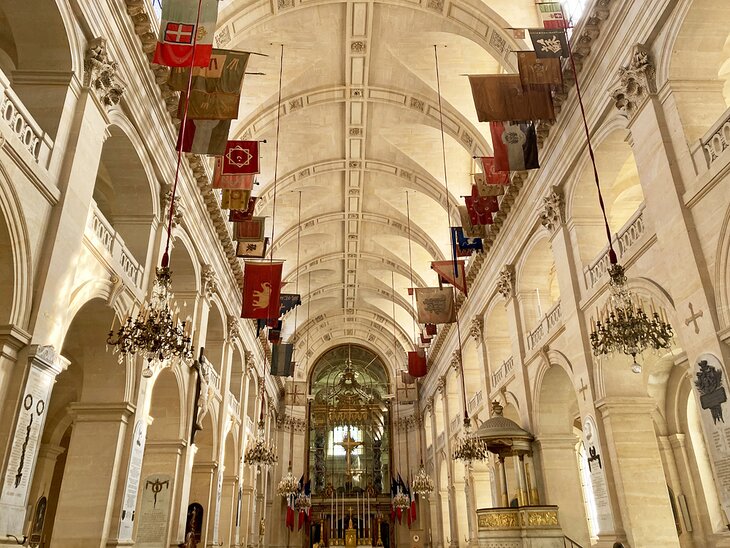
A gold-domed Neoclassical church, the Eglise du Dôme des Invalides was built in 1677 as a royal chapel for Louis XIV but is most famous for being the site of Napoleon's Tomb , installed here in 1861 by the orders of King Louis-Philippe. The imperial tomb stands beneath a magnificent cupola, which was painted by Charles de la Fosse.
Designed for veterans to worship, the Cathédrale Saint-Louis des Invalides (constructed around 1676) connects with the Eglise du Dôme des Invalides. This chapel was built in keeping with the etiquette of the 17th century and has a separate entrance from the Eglise du Dôme. The Eglise Saint-Louis des Invalides still serves as the cathedral for the French army.
Address: Hôtel National des Invalides, Esplanade des Invalides, 129 Rue de Grenelle, 75007 Paris
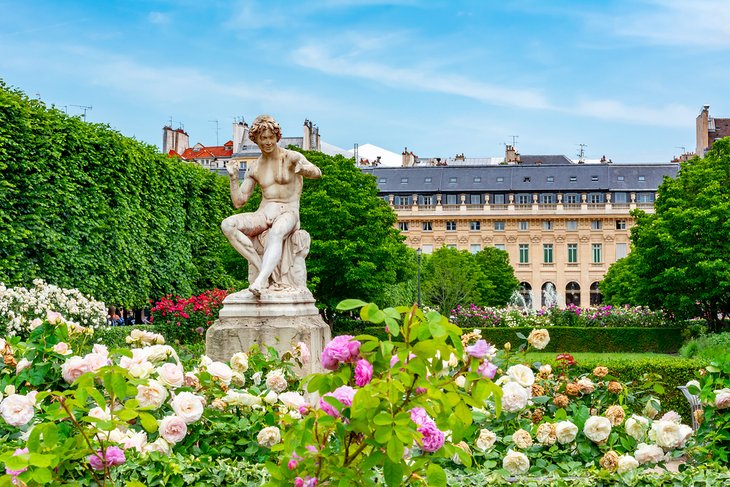
Just steps away from the Louvre Museum, you will find a welcome retreat amid the bustle of Paris' 1st arrondissement. Visiting this secluded spot feels like a secret getaway, even though it's right in the center of the city.
The Palais-Royal was created as a residence for Cardinal Richelieu in 1633, during the reign of Louis XIII. Richelieu later bequeathed the palace to the royal family, and it became the childhood home of Louis XIV.
Exemplifying classical French architecture, the Domaine National du Palais-Royal is made up of 60 pavilions surrounding a courtyard and a garden, the Jardin du Palais-Royal . This peaceful enclosed space has the feeling of being its own little village within the city.
After wandering the busy streets of Paris, you will be delighted by the lush tree-shaded grounds. You might be surprised to see that the courtyard features a contemporary sculpture installation, a striking contrast to the historic architecture.
The buildings are connected by a colonnaded pathway and arcaded galleries (verandas) filled with high-end boutiques . There are fancy cafés with pleasant outdoor terraces and two gastronomic restaurants: the haute-cuisine Palais Royal Restaurant (two Michelin stars); and Le Grand Véfour in an 18th-century dining room featuring ornate " art décoratif " design motifs.
The Palais-Royal area has two theaters: the Théâtre du Palais-Royal (38 Rue de Montpensier), which dates back to 1783 and continues to present theater performances in French; and La Comédie-Française (1 Place Colette), a theater known as the " La Maison de Molière " because it has staged so many of the famous playwright's works. The Comédie-Française was inaugurated in 1790 and is still in use during its theater season.
A lovely place for a stroll, the Domaine National du Palais-Royal is open every day, free of charge. The Centre des Monuments Nationaux offers guided group tours.
Address: Domaine National du Palais-Royal, 8 Rue Montpensier, 75001 Paris (Métro: Palais Royal-Musée du Louvre or Pyramides station)
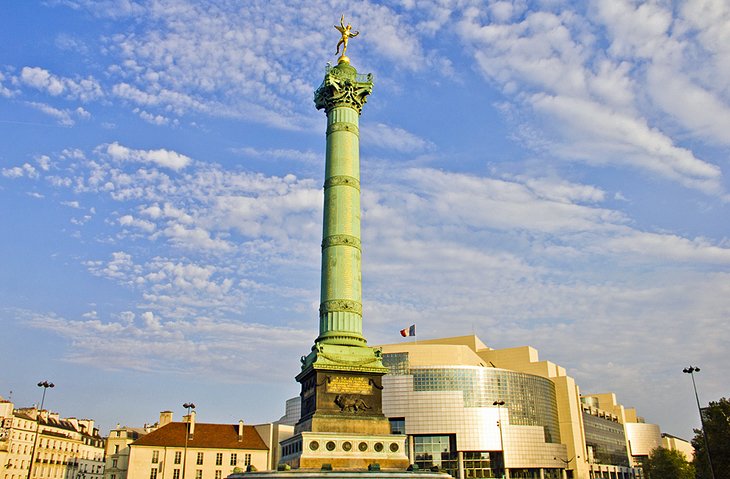
Now, only the name of this square is a reminder that the notorious state prison known as the Bastille, the much-hated symbol of absolutist power, once stood here. After the storming of the Bastille on July 14, 1789, the prison was completely demolished.
In the center of Place de la Bastille is the 51-meter-high Colonne de Juillet , topped by a graceful gilded figure of Liberty ( Génie de la Liberté ). The monument commemorates the July Revolution of 1830, which overthrew King Charles X and brought Louis-Philippe d'Orléans to power.
Four Gallic cocks and a lion relief on the base of the column symbolize the free people of France. A spiral staircase of 283 steps inside the column leads to a viewing platform.
On the site of the Bastille prison is the new Opera House, the Opéra Bastille , inaugurated by President Mitterrand on July 13, 1989. This immense modern theater has seating for 2,745 people. Both the view of the stage from the auditorium and the acoustics are superb.
The Opéra Bastille presents a calendar of events that includes opera and ballet performances by the Opéra National de Paris and the Corps de Ballet de l'Opéra de Paris.
For a memorable evening in Paris, attend one of the performances at the Opéra Bastille and then dine in the Bastille area. This trendy neighborhood is brimming with quirky boutiques, hip clothing shops, stylish restaurants, and happening cafés.
Address: Place de la Bastille, 75012 Paris (Métro: Bastille)
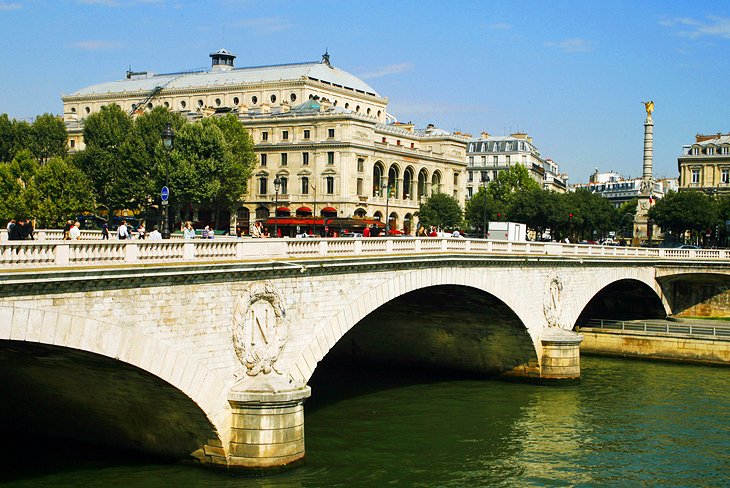
The Place du Châtelet stands at the very center of Paris in the 1st arrondissement, overlooking the Seine River. The Pont au Change (bridge) provides access from the Île de la Cité to the Place du Châtelet.
Tip : It's just a short walk from Sainte-Chapelle and La Conciergerie on the Île-de-la-Cité to the Place du Châtelet, so it would make sense to visit these tourist attractions at the same time.
Two theaters grace the Place du Châtelet. The opulent Second Empire Théâtre du Châtelet (1 Place du Châtelet) presents a wide variety of music concerts, as well as dance and theater performances. A listed Monument Historique where Sarah Bernhardt once directed shows, the Théâtre de la Ville (2 Place du Châtelet) stages a diverse program of dance, music, and theater performances.
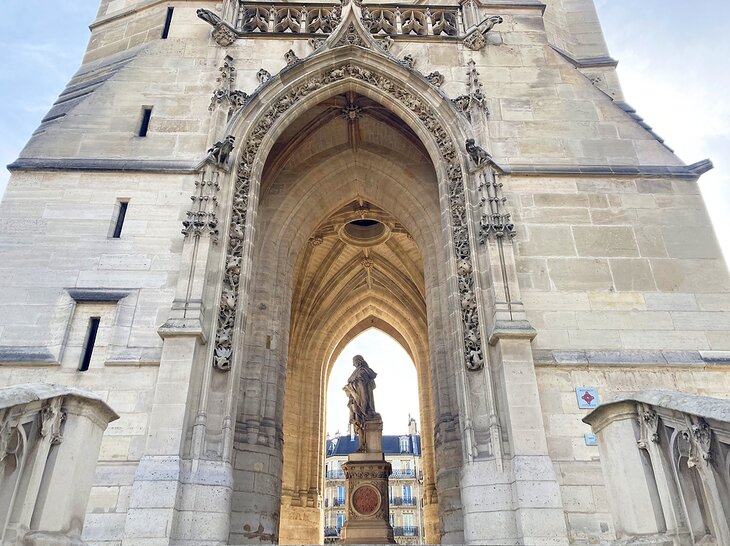
The area around Place du Châtelet is also worth exploring. Continue towards the Rue de Rivoli, past the Boulevard de Sébastopol, and wander through the small park to find the Tour Saint-Jacques . The 16th-century Flamboyant Gothic clock tower is all that remains of the Eglise Saint-Jacques-de-la-Boucherie (the patron saint of butchers), the town's old parish church.
The Saint-Jacques Tower is also famous as the place where Blaise Pascal conducted one of his barometric experiments, which showed the effect of altitude on the height of a column of mercury.
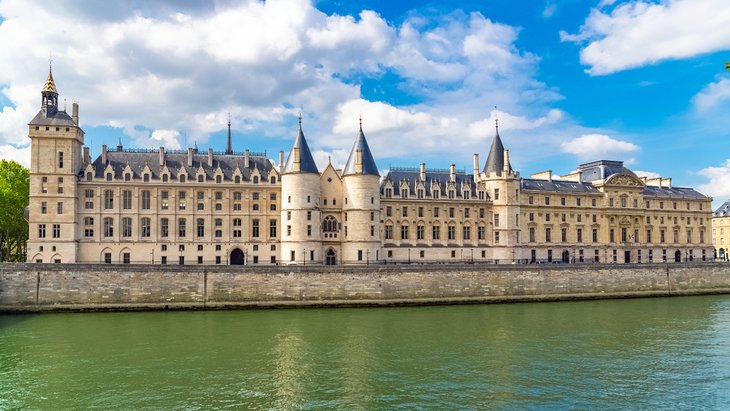
Never mind the inviting name, this imposing medieval fortress was an infamous place of detention and a courthouse (from 1793 to 1795) during the French Revolution. Here, prisoners including Marie-Antoinette and Robespierre were kept in dank cells while awaiting their fate.
The Conciergerie is a remnant of the Palais de la Cité , the royal residence of France's kings in the 13th and 14th centuries until the royal residence was moved to the Louvre. During the Restoration (return of the Bourbon monarchs to the throne), the Conciergerie was no longer used as a prison and Marie-Antoinette's cell was converted into a commemorative chapel.
Today, the Conciergerie is a UNESCO World Heritage Site and is open to the public as a museum. It's possible to purchase a combined entry ticket for the Conciergerie and Sainte-Chapelle. Admission to the Conciergerie is included with a Paris Museum Pass.
During your visit, you will have a chance to walk through the Prisoners' Corridor which includes a replica of French Revolution-era prison cells. An evocative exhibit, the Salle des Noms lists the names of more than 4,000 people who were put on trial by the Revolutionary Tribunal and includes their biographies.
Of course, you must visit the expiatory chapel of Marie-Antoinette (the commemorative chapel). Look for the motif of tears painted on the walls.
Other highlights of the visit include the Salle des Gardes which exhibits artifacts from the bloody Reign of Terror, including a guillotine blade, prison regulations, and a copy of Marie-Antoinette's last letter.
The Salle des Gens d'Armes is a 14th-century vaulted Gothic hall of awesome proportions. In this forbidding room, the condemned prisoners were handed over to the executioner.
For an exceptional view of the building's Neo-Gothic facade, stand on the opposite side of the Seine River on the Quai de la Mégisserie. From this distance, with its three round towers and the Tour de l'Horloge (Clock Tower), the fortress resembles a fairy-tale castle rather than a penitentiary.
Address: 2 Boulevard du Palais, 75001 Paris (Métro: Cité or Saint-Michel Notre-Dame station)
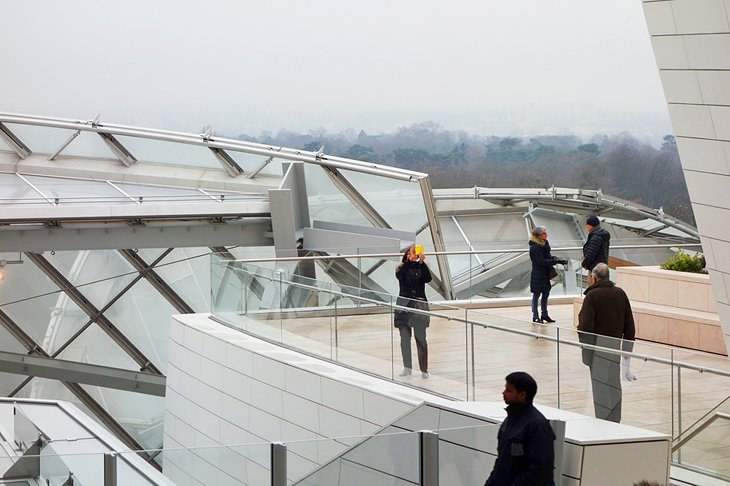
Formerly royal hunting grounds, the Bois de Boulogne is now home to a surprising modern landmark. Opened in 2014, the Fondation Louis Vuitton was commissioned by Bernard Arnault, chairman of the Louis Vuitton Moët Hennessy corporation.
Acclaimed American architect Frank Gehry designed the striking building, using 3,600 glass panels and more steel than the amount in the Eiffel Tower. The museum features 3,500 square meters of exhibition space with 11 different galleries illuminated by natural light.
In keeping with the museum's modern theme, the permanent collection focuses entirely on 20th-century and 21st-century art organized into four different categories: Expressionism, Contemplative Art, Pop Art, and Music & Sound.
The Fondation Louis Vuitton offers a year-round calendar of events and temporary exhibits. Cultural events and music performances are presented in a 1,000-seat auditorium.
Not to be missed are the four outdoor terraces on the rooftop, which afford sweeping views of the Bois de Boulogne, La Défense district, and the Eiffel Tower in the distance. You may also shop at the bookstore and enjoy a snack or meal at Le Frank Restaurant .
A tourist attraction in itself, the 850-hectare Bois de Boulogne has walking paths, gardens, bicycle rentals, picnic areas, and a lake for boating. Three upscale restaurants, including La Grande Cascade , the Auberge du Bonheur , and the three Michelin-starred restaurant Le Pré Catelan , offer traditional French fine dining. At the park's hippodrome used for horse races, La Brasserie Paris Longchamp serves casual sit-down meals.
Within the Bois de Boulogne is the Parc de Bagatelle with picnic tables, a snack bar, and a rose garden. The 18th-century Château de Bagatelle is open on Sundays and for temporary exhibitions. The Orangery of the Parc de Bagatelle hosts a Chopin Festival every year from mid-June until mid-July.
Address: 8 Avenue du Mahatma Gandhi, Bois de Boulogne, 75116 Paris (Métro: Pont de Neuilly or Avenue Foch)
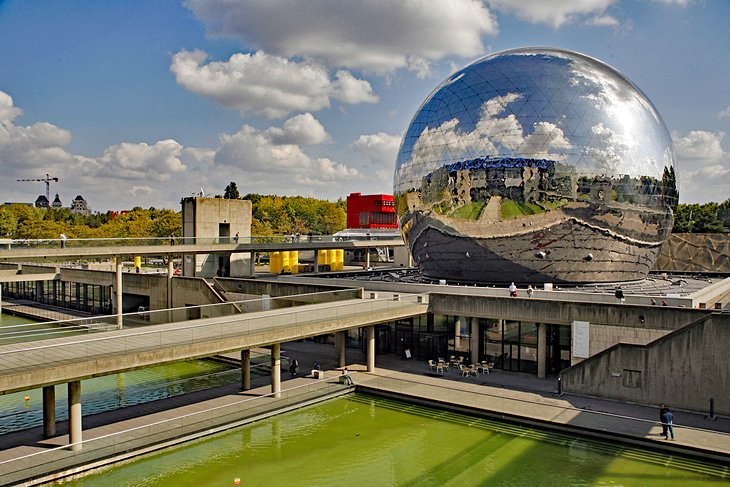
Covering 55 hectares, the Parc de La Villette is the largest landscaped green space in Paris. The park is brimming with attractions, including children's playgrounds and the Cité de la Music .
The park is also home to 400-seat La Géode IMAX theater; the Zénith Paris - La Villette concert hall; the Philharmonie de Paris performance venue; and Le Trabendo , which stages rock, rap, and hip-hop music concerts.
During summertime, Parisians (and a few tourists) enjoy attending cultural events at the Parc de La Villette. For several days at the end of May, the Villette Sonique festival draws huge crowds to outdoor music concerts. Other festivals include Jazz à La Villette held from late August through early September and an outdoor film festival ( Cinéma en Plein Air ), which takes place in the park from mid-July to mid-August.
The park features a variety of themed gardens with walking paths, footbridges, and bright red architectural "follies" designed by Bernard Tschumi. The area around the Canal de l'Ourcq is embellished with ponds and fountains.
Address: 211 Avenue Jean Jaurès, 75019 Paris (Métro: Porte de la Villette)
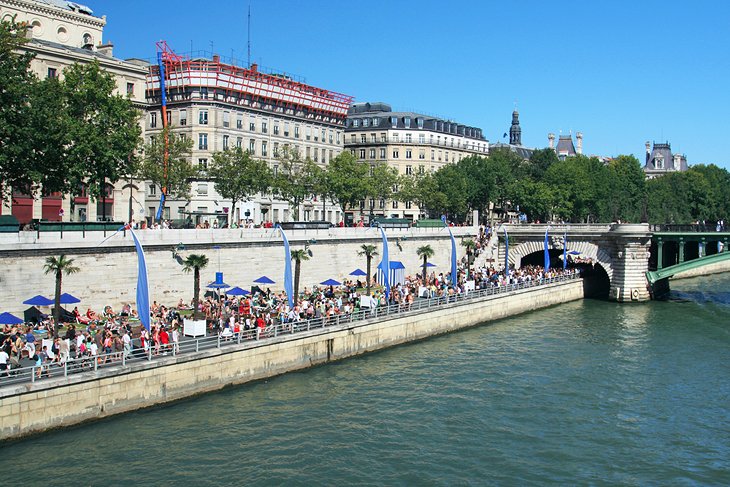
Planning to visit Paris during summertime? Be sure to pack your swimsuit! Even though the city is far from the sea, you can still find "beaches" for sunbathing.
From early July through late August, the Seine River becomes a beach destination. The riverbanks along the Quai de Seine and Quai de Loire are transformed into little resorts, complete with lounge chairs, sun umbrellas, and palm trees. Recreational opportunities include table football, tai chi, and petanque.
Other summertime recreational opportunities (in July and August) include swimming at the Bassin de La Villette , which has three swimming pools with lifeguards, and sports activities at the Jardins du Trocadéro .
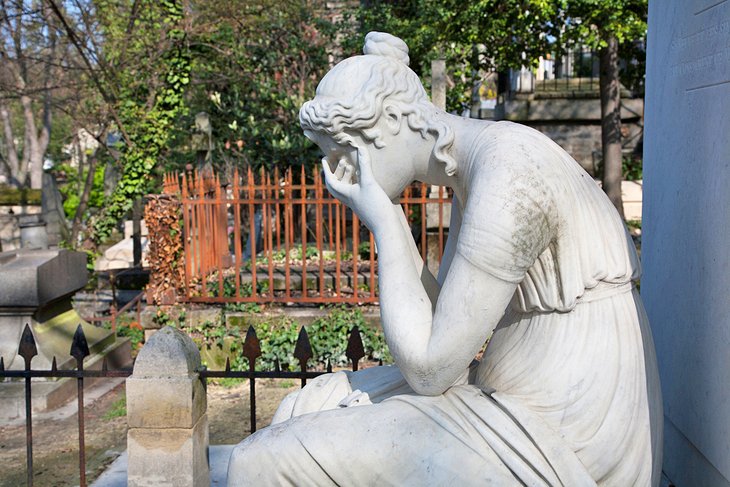
Outside of central Paris, the Père Lachaise Cemetery in the 20th arrondissement is the city's most famous and most visited cemetery. This 44-hectare space is the final resting place of many famous men and women, including Honoré de Balzac, Frédéric Chopin, Edith Piaf, Oscar Wilde, and Jim Morrison.
Some of the tombs and graves of the most admired personalities attract a cult following, with flowers and tributes left by visitors on a daily basis.
Address: Cimetière du Père Lachaise, 21 Boulevard de Ménilmontant, 75020 Paris (Métro: Père Lachaise or Philippe Auguste station)
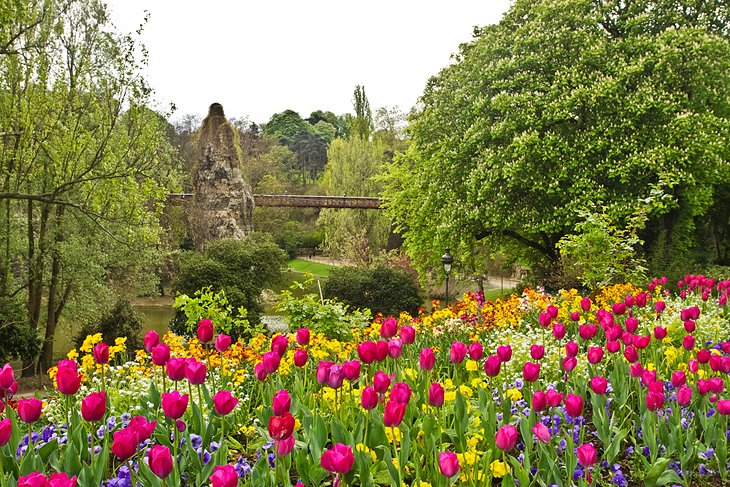
Locals escape to this peaceful oasis when they need a break from urban life. Among Parisians, this park is a favorite place to go for picnics and basking in the sunshine on warm days.
The 25-hectare park has the feeling of an untamed pastoral landscape, in contrast to the typical Parisian formal French gardens, with their orderly rows of flowerbeds and pollarded trees.
This romantic English-style garden features caves, waterfalls, and an artificial lake. Large shady trees and spacious grassy areas invite visitors to pull out a blanket and relax. Some areas of the park offer panoramic city views.
The convivial Rosa Bonheur café serves Mediterranean cuisine on an outdoor terrace. Rosa Bonheur is also known for its musical entertainment and evening dances.
For a gourmet lunch or brunch, Le Pavillon du Lac delights you with its lake views and garden patio. Le Pavillon du Lac is open for lunch and dinner Wednesday through Saturday and for brunch on Sundays.
Address: Parc des Buttes-Chaumont, 1 Rue Botzaris, 75019 Paris
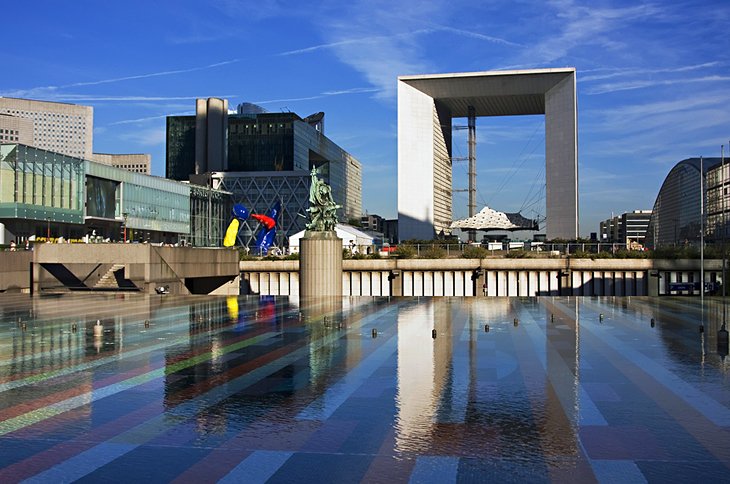
The Grande Arche de la Défense is found in a business district at the end of Avenue Charles-de-Gaulle. This area just outside the city limits of Paris is named La Défense, which recalls the bitter resistance by French forces in this area during the Franco-Prussian War of 1870-1871.
Designed by Johan Otto von Spreckelsen, the Grande Arche makes a striking impression. This huge 110-meter-high rectangular triumphal arch is faced with glass and granite.
The monument was inaugurated in 1989 on the bicentenary of the French Revolution, and the contemporary structure symbolizes France's national value of fraternity. The arch was originally called " La Grande Arche de la Fraternité ".
Address: La Grande Arche, 1 Parvis de la Défense, 92040 Paris (Métro: La Défense)
Deciding where to stay in Paris depends on your taste in hotels and travel preferences.
An abundance of quaint small hotels are scattered throughout the 5th, 6th, and 7th arrondissements, which is also known as the Rive Gauche (Left Bank). Tourists appreciate this area for its central location, excellent restaurants, and lively sidewalk cafés.
The Marais quarter (4th arrondissement) on the Right Bank rivals the Left Bank for old-world charm and trendy ambiance. This neighborhood is filled with magnificent historic palaces and mansions, while enticing boutiques, cozy restaurants, cafés, and tea salons line the quarter's cobblestone streets.
Many luxury hotels are found on the boulevards near the Louvre and the Champs-Élysées, in an area of the 8th arrondissement known as the Triangle d'Or (Golden Triangle) because of its designer fashion boutiques and upscale gourmet restaurants.
Montmartre is farther from most tourist attractions but has a special atmosphere thanks to its bohemian heritage, excellent art museums, and atmospheric pedestrian alleyways. Some of the hotels in this hilltop neighborhood offer sweeping city views.
Here are some highly-rated hotels in these areas of Paris:
Luxury Hotels:
- In the fashionable 8th arrondissement near the Jardins des Champs-Élysées is the five-star Le Bristol Paris . This legendary hotel epitomizes Parisian elegance with sumptuous guest rooms featuring Louis XV or Louis XVI furnishings and tailor-made bed linens. Guests enjoy the courtyard garden, spa, rooftop swimming pool, tea time at Café Antonia, and fine dining at the hotel's Michelin-starred gastronomic restaurant or Michelin-starred brasserie.
- La Réserve Paris - Hotel and Spa is another ultra-luxurious accommodation in the 8th arrondissement near the Champs-Élysées. The five-star hotel occupies a palatial 19th-century mansion decorated in a classical style, yet has the intimate ambiance of a private home. Guests appreciate the top-notch amenities: spa, fitness center, indoor swimming pool, and two gourmet restaurants including a dining room with two Michelin stars.
- Art Deco interiors create an inviting feel at the Four Seasons Hotel George V in the 8th arrondissement. This opulent five-star hotel occupies a landmark building that dates to 1928 and has been beautifully maintained. Guests are pampered by the hotel's amenities: an upscale spa, swimming pool, and three fine-dining options including a vegetarian restaurant. The hotel's gastronomic restaurant, Le Cinq, boasts three Michelin stars.
- The Hôtel Plaza Athénée graces the tree-lined Avenue Montaigne, a prestigious boulevard lined with haute couture boutiques. Housed in a stately Haussmann-style building near the Théâtre des Champs-Elysées, this five-star hotel features plush guest rooms with Art Deco furnishings. Amenities include the Dior Spa, and three dining options, including a garden courtyard restaurant and La Galerie, a salon that serves afternoon tea.
Mid-Range Hotels:
- In the Latin Quarter steps away from the Panthéon, the impeccably maintained Hôtel Résidence Henri IV exudes old-fashioned Parisian charm with its traditional interior decor and balconies overlooking the street. The spacious guest rooms have flat-screen televisions and updated bathrooms; the apartments have kitchenettes. This four-star hotel has a hammam and offers spa treatments. The breakfast (available for an additional charge) includes artisanal and organic products.
- The Relais Christine has a quiet and cozy ambiance, which makes it feel like a family home. This five-star hotel in the Saint-Germain-des-Prés neighborhood is surrounded by cafés, bistros, and restaurants. The tastefully adorned guest rooms feature garden, courtyard, or street views and Nespresso coffee machines. Amenities include an upscale spa, fitness center, breakfast for an additional charge, and room service.
- Near the legendary Boulevard Saint-Germain cafés and a short walk to the Jardin du Luxembourg, the boutique three-star Hôtel Left Bank Saint Germain des Prés occupies an 18th-century building on an ancient street where Molière had a residence. The hotel's suite has a living room with windows that look out onto Notre-Dame Cathedral. A continental breakfast with croissants, café au lait, and fresh-squeezed orange juice is available.
- The charming Relais Médicis is tucked away on a quiet street near the Luxembourg Gardens. This four-star hotel is a welcome retreat from the busy streets of the Saint-Germain neighborhood. The guest rooms blend old-fashioned French country decor with modern amenities. Breakfast (available for an additional charge) includes yogurt, cheese, fresh-squeezed orange juice, coffee, tea, and croissants from a neighborhood bakery.
- Montmartre is considered Paris' most enchanting neighborhood, although it is a Métro ride to the main tourist attractions. A few steps away from the Métro station in the heart of the quarter's narrow, winding streets is Hôtel Le Relais Montmartre . This four-star hotel has quaint guest rooms with vintage-inspired decor. The hotel offers a breakfast buffet (generous for the price) that includes croissants, yogurt, charcuterie, cheese, and fruit.
Budget Hotels:
- The Legend Hotel by Elegancia is conveniently located in the Montparnasse district of the 6th arrondissement (Rive Gauche) and about a 10-minute walk to the Luxembourg Gardens. This cozy three-star boutique hotel has chic contemporary-style rooms. The hotel offers a 24-hour front desk, buffet or continental breakfast (for an additional charge), and concierge services.
- In the Latin Quarter (Rive Gauche) near the Panthéon, the family-run Hôtel Diana has stylish modern rooms with renovated bathrooms and courtyard or city views. Considering the central location and 24-hour front reception desk, this hotel provides excellent value for the price. A continental-style breakfast buffet is available for a small charge.
Paris Sightseeing Overview:
- For first-time visitors, the Paris Big Bus Hop-on Hop-off Bus Tour is a good choice. You can decide which monuments you would like to see, such as the Louvre Museum, Notre-Dame Cathedral, the Place de la Concorde, the Champs-Élysées, and the Musée d'Orsay. The tour provides commentary while you're on the bus and includes an entrance ticket to the Arc de Triomphe as well as a short Seine River Cruise.
Hop-on Hop-off Seine River Tour:
- The Hop-on Hop-off Seine River Tour covers the city's highlights by cruising down the Seine River. This self-guided tour allows you to stop at eight different places on the Seine River over a one-day or two-day period. You will have a chance to see the Eiffel Tower, the Louvre Museum, the Musee d'Orsay, the legendary Saint-Germain-des-Prés cafés, the Notre-Dame Cathedral, the Place de la Concorde, and the Hôtel National des Invalides.
Visit the Normandy Battlefields:
- History buffs will want to see the famous World War II battlefields, about a three-hour drive from Paris. One recommended day trip is the Normandy D-Day Beaches Tour . Accompanied by a knowledgeable guide, tourists will see the Omaha and Juno Beaches, and the American Cemetery. The tour also includes a visit to the Arromanches harbor.
Must-See Sights Outside of Paris :
- Another popular outing from Paris is the Versailles and Giverny Day Trip . This full-day excursion explores the vibrant gardens of Giverny, which Monet depicted in many paintings, and the Château de Versailles, Louis XIV's extravagant palace. The tour includes a gourmet lunch at the Moulin de Fourges riverside restaurant, which is housed in an 18th-century mill inspired by Marie-Antoinette's hamlet at Versailles.
Many seasoned travelers say the best months to visit Paris are in the spring (April, May, June), the summer (especially June and the first half of July), and early autumn (September and October) . As a general rule, this is also the best time to visit France.
April is in the off-season , and hotel prices are reduced. The drawback is that the weather is capricious and can be quite chilly or rainy . Average low temperatures are mid-40 degrees Fahrenheit. With some luck, the weather could be refreshingly crisp and sunny. Average highs are low-60 degrees. On the upside, April offers the chance to experience the magic of early spring. Trees begin to bud their first leaves in the parks and lining the avenues. Daffodils and tulips bloom in the gardens.
In May , the weather is still fickle , with a mix of sunny days and chilly or rainy days. The temperature averages range from high 60 degrees to low 50 degrees Fahrenheit. By early May, trees, burgeoning vegetation, and colorful flowers enliven the leafy grounds of the Jardin du Luxembourg, Jardin des Champs-Élysées, Jardin des Plantes, Parc Monceau, Bois de Boulogne, and the Buttes-Chaumont. On warm days, café terraces come back to life.
June is a delightful time to visit Paris because of the balmy weather and long days . Daytime temperatures are comfortable, with high temperature averages in the low 70 degrees. Thanks to Paris' northern latitude, the sun sets at almost 10pm in June. It seems that the entire city is out and about to celebrate the beginning of summer. The sidewalk café scene bustles and there is a sense of joie de vivre in the air.
The first two weeks of July are the most exciting time to visit Paris, with Parisians' anticipation of vacation just around the corner. Plus, the weather starts to feel like summer. The entire month of July is a great time to visit because of warm days with average high temperatures of 70 degrees Fahrenheit.
July and August are the hottest months of the year in Paris. August also has average high temperatures of 70 degrees Fahrenheit. However, travelers should keep in mind that many shops and restaurants close in August when Parisians leave for summer holidays after the Fête Nationale (Bastille Day) on July 14th.
September is a marvelous time to visit Paris because the weather is still pleasant , yet it is in the off-season , so hotels are more affordable, and tourist attractions are less crowded. Similar to the springtime, September promises a mix of weather, with some sunny days and some rain. The average high temperatures are low-70 degrees Fahrenheit and average low temperatures are mid-50 degrees Fahrenheit.
Another good time to visit is October which is in the off-season . October weather can be chilly. The daytime high-temperature averages start to dip into the 60s Fahrenheit and the average low temperature is 48 degrees.
Tips for What to Wear : For a Paris vacation in April, May, September, or October, travelers should pack layers and bring sweaters, a jacket, raincoat, boots, and an umbrella. In June and July, the weather is warm enough for summer dresses and short-sleeve shirts. Packing requirements during the late fall and winter months (November through March) include heavy coats, scarves, wool hats, gloves, warm socks, and boots.
More Related Articles on PlanetWare.com
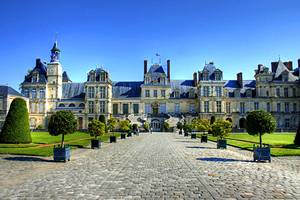
Easy Paris Day Trips: There are many wonderful places to visit within easy reach from Paris . Just outside the Paris metropolitan area is a tranquil rural landscape that is rich in cultural treasures: lovely little villages, historic castles, splendid churches, and interesting medieval towns. A must-see destination is the Château de Versailles , the 17th-century palace of Louis XIV (the "Sun King").
For those who prefer cities to the countryside, several worthwhile destinations are just a one- to two-hour train ride away: the elegant and cultured city of Lille (one hour by TGV train) with its distinct Flemish character, the delightful town of Amiens (about one hour and 30 minutes by train), and Lyon (two hours by TGV train) known as the gastronomic heart of France.
Adored by tourists for its perfectly preserved medieval ambiance, picturesque canals, and enticing chocolate shops, atmospheric Bruges (two hours 30 minutes by train) is simple to visit even though the train crosses the border into Belgium.
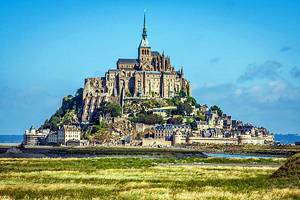
Historic Sites in Normandy: The scenic Normandy region wows visitors with its natural beauty and fascinating history. Along its dramatic coastline are the Landing Beaches of World War Two, and nearby are military cemeteries and memorial museums. One of the top attractions of France and Normandy's most visited site is Mont Saint-Michel , a UNESCO-listed medieval pilgrimage site with a sublime 12th-century abbey church. Tourists will also enjoy discovering the historic town of Rouen , with its marvelous cathedral, handsome half-timbered houses, and abundance of Gothic churches.
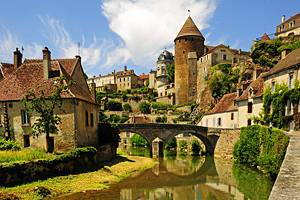
Gorgeous Castles and Pastoral Landscapes: The fairy-tale Loire Valley landscape is home to the most magnificent Renaissance châteaux in France. With a lush natural environment of woodlands and rivers, this enchanting region is designated a UNESCO World Heritage Site. The naturally beautiful region of Brittany boasts a wild, rugged coastline, with many idyllic fishing villages and an unspoiled countryside with medieval castles. The Burgundy region is dotted with historic towns such as Dijon , quaint villages, ancient abbeys, and Romanesque churches.
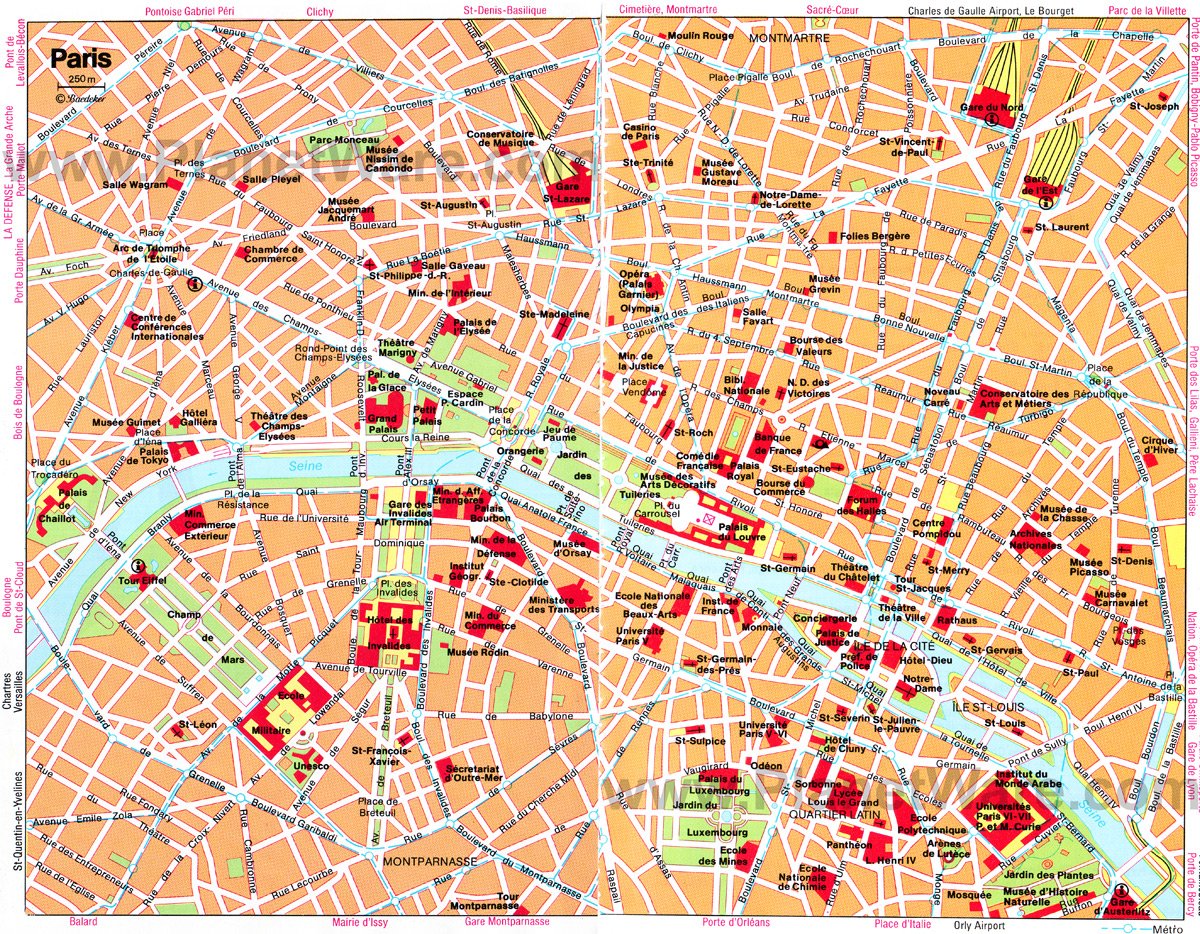
More on France


10 Most Historic Attractions In France and the Amazing Stories Associated With Them
A s the most visited country in the world , France boasts many historic locations, some of which date back to the 5th century and still remain well-preserved. France was once under the Roman Empire and most of the constructions that were built during this period can still be seen today. And there's even more.
From the incredibly stunning Eiffel Tower to the stunning Mont Saint Michel, here are some of the most historic attractions in Paris and the amazing stories associated with them.
Palace Of Versailles, Versaille
The history of the Palace of Versailles is tied to King Louis XIV of France, who ruled France for 72 years. Located in the French city of Versailles, the site where the palace is now located first hosted a hunting lodge built by Louis XIII in the early 1660s.
Then came King Louis XIV who lavishly built the royal residential palace on the same site and made it one of the country's finest structures.
The edifice is also a genuine representation of true royalty, and it has rightly been named a UNESCO World Heritage Site.
- Address: Place d'Armes, 78000 Versailles, France
- Admission: €19.50 (about $21.30 USD)
Related: Versailles: A World Heritage Site No One Wants To Miss In France
Nimes Arena, Nimes
The Romans loved building amphitheaters which is why they are found in places they once ruled. The Arena of Nimes is France's version of these Roman entertainment venues, and it is one of the more impressive in the world.
The structure was first established around 70 CE and even though it was destroyed, it was eventually restored in the 19th century and is now used as a venue for filming, music festivals, and other entertainment events.
- Address: Boulevard des Arenas, 30000 Nimes, France
- Admission: €10 (about $11 USD)
The Arena of Nimes is one of the four Roman Amphitheaters still in use today which even makes it more fascinating.
Eiffel Tower, Paris
Gustave Eiffel erected the Eiffel Tower to be the main attraction of the 1889 world fair. While it was first criticized for its designs, the structure remains the most popular attraction in France more than 130 years later.
The 330-meter-tall tower was built by 150 workers and can be seen from hundreds of miles away from anywhere in Paris. It was also said that the landmark opened to the public the same year it was built (1889), and it drew over one million visits that year.
The Parisian government has now transformed it into a big technical venue where many cosmic and exciting events take place each year.
- Address: Champ de Mars, 5 Avenue Anatole France, 75007 Paris, France
- Admission: From €11.30 (just over $12.30 USD), Visit the Eiffel Tower ticket website for more information
Related: The Eiffel Tower Has A 'Secret' Underground Military Bunker (& Here's What We Know About It)
Saint-Émilion, Bordeaux
Far away in Southwestern France lie Roman-planted vineyards and a medieval city known as Saint Emilion. The region has been named a UNESCO World Heritage Site because of its long history of winemaking.
The region was once known as the Ascumbas, and it was here that the Romans planted their vineyards. The name of the location was later amended to add Emilia's name, the bread-maker who always provided bread to the Roman workers and townspeople.
Today, this medieval city is one of the most impressive places in France with Roman history, and it is buzzing with activities.
- Address: 2 Bis Rue de la Porte Brunet, 33330 Saint-Emilion, France
- Admission: Free
Carcassonne, Languedoc
Carcassonne comes with an interesting history and impressive architecture. Until the collapse of the Western Roman Empire, the fortified city was populated by Romans.
After many years of historic battles, it eventually became part of France and is now one of the country's most famous tourist attractions.
- Address : Aude department, Occitanie region, Southwestern France
Mont Saint Michel, Normandy
Mont Saint Michel is a lovely tidal island located on the Couesnon River near Avranches in France's northwestern region.
The site is said to have been founded by the then-Bishop of Avranches, St. Aubert , who according to the legend, was instructed by Archangel Michael in a dream to carry out the assignment. The actual construction of the mighty collection of structures was started by Abbot Hildebert II.
Throughout its existence, the site has been used as a sanctuary, prison, and now it is a national monument that holds great importance to the French people.
- Location: Normandy, France
Sainte Chapelle, Paris
The Sainte Chapelle is a royal chapel established in the 13th century by King Louis IX of France. The structure was constructed to house holy relics and to date, it is considered one of the finest structures ever erected in France, and it contains more than a thousand stained-glass windows.
Although destroyed during the French Revolution in the 18th century, the chapel was rebuilt in the early nineteenth century, and it is now even more magnificent than it was before the destruction.
- Address: 10 Bd du Palais, 75001 Paris, France
- Admission: €11.50 (about $12.55 USD), free on the first Sunday of January, February, March, November, and December
Pere Lachaise Cemetery, Paris
Pere Lachaise Cemetery has long been the burial ground for many aristocrats in France, including Oscar Wilde, Victor Nair, and others. It is the largest and oldest cemetery in Paris and with more than 3.5 annual visitors, it is the most visited cemetery in the world.
The cemetery was first established in 1804 and by 1830, it already had more than 33,000 graves. Since then, it has been expanded and today, it is home to more than a million bodies and that just makes it feel like a city of the dead.
- Address: 16 Rue du Repos, 75020 Paris, France


In Paris, an Unexpected Sight at the Moulin Rouge

A bad omen ahead of the Paris Olympics? The blades on the windmill on top of the famed Moulin Rouge cabaret collapsed early Thursday morning, leaving debris in the street but not causing injuries, the BBC reports. The first three letters of the Moulin Rouge sign also fell off. "Moulin Rouge" means "Red Mill" but the sign now reads "Lin Rouge," meaning "Red Linen." The cause of the collapse is unclear, though it is believed to be a mechanical problem. "Every week, the cabaret's technical teams check the windmill mechanism and did not note any problems," a source tells AFP .
There hasn't been a similar problem with the windmill since the venue first opened its doors in October 1889, a few months after the Eiffel Tower opened, though the entire building was ravaged by fire in 1915 and rebuilt in 1921. A spokeswoman for the venue tells the New York Times that the blades will be restored "very quickly." Moulin Rouge director Jean-Victor Clerico told TV station TF1 that the collapse happened around 2am, more than an hour after the last show finished, the Washington Post reports.
Clerico said the cabaret will open as usual Thursday night. "The show continues, that's the most important thing," he said. The Moulin Rouge, where the can-can dance was invented, has long been one of the city's top tourist attractions. Parisians said it was disturbing to see it without the famous red blades. "Paris without its windmill is like Paris without its Eiffel Tower," Andre Duval, a former head waiter at the venue, told Le Parisien . (More Paris stories.)

- A DuckDuckGo extension in your browser, please access Newser without it: Either by removing it, whitelisting us, or using another browser.
Things to Do in Elektrostal, Russia - Elektrostal Attractions
Things to do in elektrostal.
- 5.0 of 5 bubbles
- 4.0 of 5 bubbles & up
- Good for a Rainy Day
- Good for Kids
- Good for Big Groups
- Adventurous
- Budget-friendly
- Hidden Gems
- Good for Couples
- Honeymoon spot
- Good for Adrenaline Seekers
- Things to do ranked using Tripadvisor data including reviews, ratings, photos, and popularity.

1. Electrostal History and Art Museum

2. Statue of Lenin

3. Park of Culture and Leisure
4. museum and exhibition center.

5. Museum of Labor Glory

7. Galereya Kino
8. viki cinema, 9. smokygrove.

10. Gandikap
11. papa lounge bar, 12. karaoke bar.
- Statue of Lenin
- Electrostal History and Art Museum
- Park of Culture and Leisure
- Museum and Exhibition Center
- Museum of Labor Glory
THE 10 BEST Things to Do in Elektrostal
Things to do in elektrostal.
- 5.0 of 5 bubbles
- 4.0 of 5 bubbles & up
- Good for a Rainy Day
- Good for Kids
- Good for Big Groups
- Adventurous
- Budget-friendly
- Hidden Gems
- Good for Couples
- Honeymoon spot
- Good for Adrenaline Seekers
- Things to do ranked using Tripadvisor data including reviews, ratings, photos, and popularity.

1. Electrostal History and Art Museum

2. Statue of Lenin

3. Park of Culture and Leisure
4. museum and exhibition center.

5. Museum of Labor Glory

7. Galereya Kino
8. viki cinema, 9. smokygrove.

10. Gandikap
11. papa lounge bar, 12. karaoke bar.
- Statue of Lenin
- Electrostal History and Art Museum
- Park of Culture and Leisure
- Museum and Exhibition Center
- Museum of Labor Glory

IMAGES
VIDEO
COMMENTS
The Eiffel Tower on social media. See more photos. Discover or visit the tower: buy a ticket (10.5 to 26.10 € maximum for adults and 2.6 to 13.10 € for children and young people), news and practical information.
Visitors with vertigo should abstain. By elevator: Three elevators are available to shuttle you to the first and second levels of the tower. For security reasons, only one or two will be operating on a given day. An additional elevator must be taken from the second level to get to the top of the tower (another 905 ft.).
The Eiffel Tower was built to be one the main attractions at the Paris World's Fair in 1889. That year, the World's Fair covered the entire Champ de Mars in Paris and its focus was the vast constructions in iron and steel that were the great industrial advancement of that time. ... A monument known around the world and a unique tourist ...
The world's most-visited tourist attraction has caused a stir ever since it first appeared in Paris over a century ago. Eiffel Tower. ... About a 15-minute walk away from the Eiffel Tower is one of the top tourist attractions of Paris. The Hôtel National des Invalides, also known as Les Invalides, was created by King Louis XIV as a hospital ...
Closest to the Tower is the Champ de Mars, where you can relax and stroll through the vast park. On the Palais de Chaillot side, the Trocadéro terraces also offer a stunning panorama of the Tower in its entirety. For an unobstructed view with the Seine in the foreground, visit Bir-Hakeim Bridge, where you'll also find the Renaissance France ...
At the top, which is accessed solely via elevator from the second floor, enjoy the most impressive 360° view of Paris, at a height of 906 feet. At this level, you can also celebrate your experience with a glass of bubbles from the champagne bar. A reconstruction of Gustave Eiffel's office with wax figures can be seen through portholes.
The Top. After a spectacular ascent in glass-walled lifts, you're finally here. 276m up with only the antennae above you, Paris lies at your feet. The noise of the boulevards can't reach you here, but the wind catches you and your heart begins to race. Witness to thousands of promises of undying love, the Eiffel Tower stirs your emotions.
History. Named after its designer, Gustave Eiffel, the Tour Eiffel was built for the 1889 Exposition Universelle (World's Fair). It took 300 workers, 2.5 million rivets and two years of nonstop labor to assemble. Upon completion, the tower became the tallest human-made structure in the world (324m) - a record held until the 1930 completion of ...
The Ultimate Travel Guide to the Eiffel Tower. The Eiffel Tower is one of the most iconic monuments in the world - if not the most iconic. It stands tall over Paris, France, and is a symbol of French culture and history. It is also one of the most visited tourist attractions in the world, drawing roughly seven million visitors every year from ...
5 avenue Anatole France, 75007 Paris France. Food Tour Paris. 1 Review. 2 avenue Gustave Eiffel, 75007 Paris France. Pont d'Iena. 203 Reviews. 75007 Paris France. Experiences from $10. See 18 Experiences.
The tower is situated in 7th arrondissement, one of the French capital's chicest districts, and was originally built for the 1889 World's Fair in Paris. Over 120 years later, the Eiffel Tower remains the tallest structure in Paris and stands as one of the City of Light's most popular tourist attractions.
Here are my 10 things you need to know before visiting the Eiffel Tower in Paris. 1. Visit Twice: Day and Night. The Eiffel Tower at night. Visiting the Eiffel Tower twice, once during daylight and once after sunset, offers contrasting but equally stunning views of Paris.
Address: 11 Avenue du Président Wilson | Hours: Tues - Sun, 10 am - 6 pm (closed Mondays) 10. Champ de Mars. Champ de Mars is a massive public park in Paris that forms a sort of runway to the Eiffel Tower. Like the Eiffel Tower, the Champ de Mars is in the 7th arrondissement and is a huge draw for the area.
Eiffel Tower, wrought-iron structure in Paris that is one of the most famous landmarks in the world. It is also a technological masterpiece in building-construction history. ... the storied 7th arrondissement neighbourhood in Paris is home to many other famous tourist attractions, such as the Musée d'Orsay and the Rodin Museum.
The Eiffel tower went through few oppositions during the Universal Exposition in Paris in 1889. However, Gustave Eiffel stood tall and defended his project.Once qualified as "useless" and "monstrous" by a group of artists, Gustave Eiffel responded that the Iron Lady project was a "symbol of contemporary science build for the glory of Paris".
Address: La Tour Eiffel, Champ de Mars, 75007 Paris (Métro: Bir-Hakeim, Trocadéro, Iéna, or Passy station) 2. Musée du Louvre. Louvre Museum at night | MarinaD_37 / Shutterstock.com. The Louvre is the most prestigious of Paris' museums and the crème de la crème of the city's cultural attractions.
Eiffel Tower. Champ de Mars, 5 Avenue Anatole France, 75007 Paris France. The most recognizable symbol of Paris, Eiffel Tower is a must-see attraction in Paris. Some of the best views of the Eiffel Tower are from Palais de Challot and Champ de Mars. You can see the Eiffel Tower during sightseeing tours in Paris: all of them have a stop at this ...
The Eiffel Tower is a major tourist attraction in Paris France. Today, the Eiffel Tower has become a global icon of France, which is an iron tower built on the Champ de Mars beside the in Paris. This Parisian landmark named after its engineer designer, Gustave Eiffel, is one of the most recognised structures in the world and is the tallest ...
Gustave Eiffel erected the Eiffel Tower to be the main attraction of the 1889 world fair. While it was first criticized for its designs, the structure remains the most popular attraction in France ...
"Paris without its windmill is like Paris without its Eiffel Tower," Andre Duval, a former head waiter at the venue, told Le Parisien. (More Paris stories.) See 3 more photos
The 15,000 athletes in Paris will be based in the newly constructed 2024 Paris Olympic Village, or "Athlete's Village," a 300,000 square meter project built sustainability between Saint ...
You can see many of Paris' famous landmarks, such as the Seine River, the Louvre, and Montmartre.\n 3. **Romantic atmosphere**: The Eiffel Tower is often associated with romance and is a popular spot for proposals, weddings, and romantic dinners. The tower's iron latticework and twinkling lights at night add to its romantic ambiance.\n 4.
1. Park of Culture and Leisure. 16. Parks. Fun Things to Do in Elektrostal with Kids: Family-friendly activities and fun things to do. See Tripadvisor's 796 traveler reviews and photos of kid friendly Elektrostal attractions.
The style of outlet village is very similar to Las Vegas Premium Outlets North, but prices are different... 2. Belaya Dacha Museum. 39. Speciality Museums. 3. Church of the Kazan Icon of God's Mother. 9. Churches & Cathedrals.
10. Gandikap. 11. Papa Lounge Bar. 12. Karaoke Bar. What are the top attractions to visit in Elektrostal? Things to Do in Elektrostal, Russia: See Tripadvisor's 801 traveler reviews and photos of Elektrostal tourist attractions. Find what to do today, this weekend, or in May.
SmokyGrove. 10. Gandikap. 11. Papa Lounge Bar. 12. Karaoke Bar. What are the top attractions to visit in Elektrostal? Top Things to Do in Elektrostal, Russia: See Tripadvisor's 801 traveller reviews and photos of Elektrostal tourist attractions.